

“This book is an application of the jigsaw system to certain archaeological problems which under the ordinary detached methods of the Specialist have proved insoluble. My fragments of evidence are drawn as occasion warrants from History, Fairy-tale, Philosophy, Legend, Folklore—in fact from any quarter whence the required piece unmistakably fulfils the missing space. It is thus a mental medley with all the defects, and some, I trust, of the attractions, of a mosaic.” Harold Bayley, ‘Archaic England’ (1919)
Welcome to Part 2.5 of what is turning out to be a four part trilogy. This could have been Part 1.5 because a lot of the following information was assembled before Part Two… That probably sounds even more confusing, but my venture into Shahnamehland took over and developed into a monster that completely monopolised Part Two. Hopefully, if nothing else, that monster illustrated just how corrupt and manipulated our history really is. Clearly the account given in the Shahnameh is not the truth either, thanks to copyists, translators and downright manipulation, but compared to the official versions of the same events it’s much nearer the truth – in my opinion.
● Reassessment ○ Thus Spake Zarathustra ○ Divine Cults ○ Zoroastrianism as proto‑Judaism ○ The Nart Sagas ○ “Romishe lyes and other Italyshe beggerye”
● Hostile Confederacies ○ Feuding Feudals ○ The Peace of God ○ The Truce of God ○The Anarchy ○ “Holy Roman Empires Batman!” ○ Baptism ‑ vaccination against the Pagan virus ○ “A Penny for your Frauds” ○ Official Christianisation post‑cataclysm ○ Submission ○ Arianism and Mahimet ○ Christianity and the British Isles ○ Patrick ○ Columba ○ Brigid
● Untangling the ‘Nots’ ○ The Mabinogi of Mabinogion, Tales of Tales ○ Welsh Hebrew ○ Welsh Identity ○ Lost Languages ○ Getting an Angle on the Saxons ○ The Saxon Shore ○ Flemings ○ Cambrai ○ Cymry ○ The ever‑decreasing facsimile Romans ○ Romantic Fiction ○ DNA ‑ Do Not Argue ○ Basque DNA or euqsaB AND?
● Manipulation by Forgery ○ Biblical Manuscripts ○ The Old Testament ○ The New Testament ○ The Eddas ○ The Book of the Taking of Ireland
● Seeking the Jews ○ In Normandy… ○ In Spain… ○ In Cairo… ○ In Greece and Cyprus… ○ In N VWLS… ○ In the Ghettos… ○ Rashi’s Rabbinic Elite ○ Rambam‑alama‑ding‑dong! ○ The Ashkenazi Black Hole
● What, No Jews? ○ The Khazarian Section ○ The Scythian Connection ○ The Silk Road
● The Achaemenid Commercial Empire ○ The Rise and Rise of the Achaemenid Corporation ○ The Fatimid Corporation
● The Acid Test
● The Result
Emerging from the Shahnameh rabbit hole forced a reassessment of some fundamental concepts. Without wishing to be disrespectful, Gunnar Heinsohn’s assumption that the archaeological strata he identified as ‘Roman’ in London, Rome and Poland at around 700AD, may have been based upon Bayesian style thought processes or, as someone suggested, ‘Maybesian’. Perhaps it wasn’t the Roman Empire that was terminated by the cataclysm, but the Ruman Empire along with the Turanian Empire and the Iranian Empire. The problem is that the information regarding the situation in the rest of Europe, Britain, Scandinavia etc, is all conspicuous by its absence because everything we think we know is all relative to the Roman Empire and therefore fiction or rather based upon mirrored or duplicated events that have been manipulated and sent back in time.
The missing data corresponds exactly with the proposed location of King Arthur’s Lost Kingdom, as discussed in Part One. For the sake of brevity and admittedly in an attempt to make it sound less like something from a medieval French romance, we will refer to it as the Kingdom of Albion. Apparently‘Albion’ was the Greek name for England and Wales, but when we talk about the pre-cataclysm Greeks who do we really mean? The Greeks or the Rumans / Rumi? Who were the sent-back-in-time facsimile Romans really meant to be? No one knows for sure, according to one version they were Greeks and to another they were descendants of the Trojans – sworn enemies of the Greeks.
There’s another mad idea that has presented itself as the result of all this research and reassessment. If you consider the apparent ‘fact’ regarding the Northern Lights phenomena that we discussed in Part One, whereby they could be seen as far south as Rome during the first millennium, then besides the possibility that they were much stronger then, another explanation presents itself. Maybe the reason that the Northern Lights could be seen from Rome is because Rome was much closer to the North during the first millennium.
By this we’re not suggesting a pole shift or the sliding of tectonic plates, but something along the same lines as Felice Vinici’s remarkable ‘Homer in the Baltic’ material, which places the early Greek civilisation in and around Scandinavia and the evidence presented by Iman Wilkens in his ‘Where Troy Once Stood’ showing that Troy was located in Cambridge, England. Finding Rome in that same part of the world would make a lot of sense and Heinesohn’s archaeological evidence that the Roman Empire appeared in Rome and London at the same moment in time could be relevant to that scenario somehow.
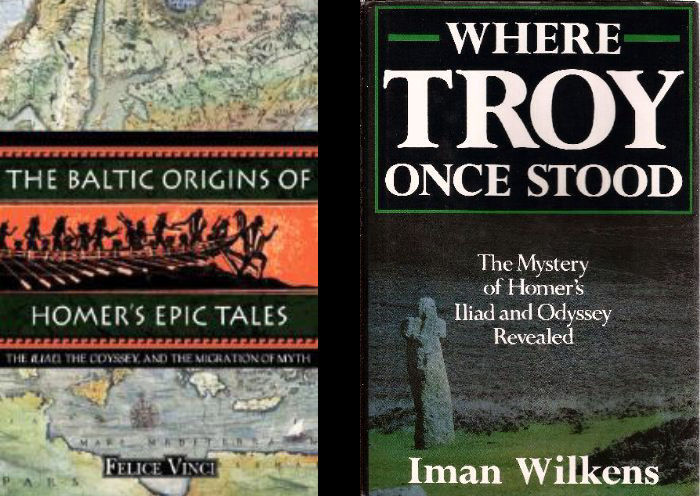
Strangely, it seems to complete the picture begun by Felice Vinici and Iman Wilkens, although it deepens the mystery of just how it was all displaced from there to the Mediterranean and the Near East. Then there’s the question of ‘The Holy Land’, when was that created, because there’s no archaeological evidence for it in the Middle East and it never appears or even gets mentioned in the Shahnameh?
The original Part Two contained a detailed look at Zoroastrianism, but in the published Part Two we saw that the prophet Zarathustra, or Zoroaster, was not simply the reformist of an established religion, but the instigator of a new one. This view seems to be unique to the Shahnameh and not at all popular with the mainstream, which makes it really interesting. Furthermore, this new religion came to Iran along with a new King of Kings, who was basically a puppet of the King of Rum (the area of southeastern Europe) or at least of the Ruman religious system. Once the new supreme monarch was established in Iran, he imposed this new religion “by the sword.” Obviously, as Iran was the dominant ruling kingdom of the Iranian Empire, the other kingdoms were forced to convert, which caused the kingdom of Turan to rise up in revolt, twice.
It seems to be a popularly held opinion that there was a general switch to monotheism at around the time of Zoroaster – whenever that was – whereby Mithraism and the solar monotheism of Akhenaten all appeared during what they call the Assyrian / Aramaean / Chaldean period. There’s the usual bewildering assortment of ancient empires and confusing names with claims by Greek philosophers that Zoroaster, or ‘Zaratas the Chaldeaean’ taught Pythagoras in Babylon, and also invented magic, whereby he gets placed in the 6th century BC. Wikipedia claims that this coincides with information from the Zoroastrian Bundahishn, except it doesn’t as Zoroaster / Zarathustra is not even mentioned in that book.
Zoroaster or Zarathustra is a highly mysterious character. His exact birthplace is uncertain and there is no scholarly consensus on when or where he lived. Some scholars, suggest he was around in the second millennium BC. Others put him in the 7th and 6th centuries BC as almost a contemporary of Cyrus the Great… who also never appears in the Shahnameh or the Zoroastrian Bundahishn. The ‘official’ Zoroastrian line is that he lived in the period immediately following Alexander the Great's conquest of the Achaemenid Empire in 330 BC… what Achaemenid Empire would that be? Alexander / Sekandar defeated the Iranian Empire long after it had converted to Zoroastrianism according to the Shahnameh.
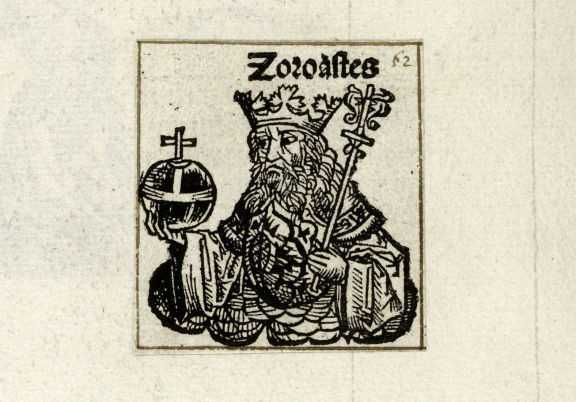
Zoroaster
Rijksmuseum, CC0, Public domain
A calyx (flower) with a king. He wears a crown and carries an orb and a sceptre. The text identifies him as Zoroaster the Sage (or Zarathustra). This woodcut is used as a book illustration in the Liber Chronicarum (Nuremberg Chronicle) by Hartmann Schedel, published in Latin and German in 1493. Note the Cross.
Then we get the usual supernatural intervention when he was thirty years old. A ‘Shining Being’ claiming to be Vohu Manah (Good Purpose) taught him about Ahura Mazda (Wise Lord) and five other radiant figures. He learned of the two primal Spirits, the other being Angra Mainyu (Destructive Spirit) and opposing dualistic concepts of Asha (order) and Druj (deception). He also saw a vision of the seven Amesha Spenta… so much for monotheism.
Anyway, after these and other revelations Zarathustra apparently went off on a mission sharing his new knowledge with whomever would listen. According to some sources, not many would and he was forced to travel far and wide ‘preaching to strangers’. Eventually his teachings were collected in the Gathas and the Avesta Zoroastrian scriptures.
So where did this new religion really come from? Perhaps it originated with a Chaldean sect who found refuge in Rum and then invented Zoroastrianism which took hold throughout that kingdom. This was then spread to Iran and Turan by force by the groomed and ‘Rumified’ Iranian king Goshtap and the prophet Zarathustra. Let's face it, Zoroastrianism is a religion based upon contracts or covenants and the ring became the symbol of a contract, contracts became the basis of commerce – that has to tell us something. In the Shahnameh it was two Zoroastrian priests who assassinated Dara, one was his closest advisor and the other his treasurer. This allowed Sekandar / Alexander to takeover Iran and go on to make himself the barrier between God and Man, equivalent to the Pope / Pontifex Maximus / Pater Patriae of the much later Romans. Sekandar set himself up as "God's shadow" on the earth and demanded that he be worshipped as god. He used the symbol of "the beloved cross" which was obviously not the Christian symbol, but the pagan symbol representing the reborn sun god as he CROSSed the vernal equinox.

Celtic Cross
Source
This symbol has been sold to us as being that of Celtic Christianity. As we have demonstrated previously, there was never a race of people who called themselves ‘Celts’. ‘Celtic Culture’ was Pagan, not Christian. The symbol clearly represents the sun crossing the vernal equinox and thus being reborn and not a ‘Roman’ instrument of torture and death. This same redesignation of an ancient pre-Christian belief system was also applied to the ‘Gnostics’ which became Gnostic Christianity – another fake religion which, like the Celtic version was invented and ‘revived’ during the Victorian era along with a caricature of Druidism.
I have Silveryou to thank for pointing out that the main defining feature of the later Roman Empire was the creation of the divine cult of the emperor. Just like Sekandar, the Roman Augustus (‘highness’) had to be revered in every region of the empire in the form of statues that were frequently portrayed with a radiant crown representing the sun. Whether Sekandar also had a replica of his bust in each of the local temples, like Augustus, we can only surmise. In the later Roman Empire this is cited as the cause of the Jewish rebellion since they would not tolerate the idol of a living ‘man-god’ being worshipped in their temples dedicated to Yaweh. However, in Sekandar’s time in Shahnamehland there is no indication that there were any Jews in existence to object.
The text of the Shahnameh contains hints that Sekandar’s victory over Dara was obtained with the assistance of inside information from a treacherous element within Dara’s entourage. The role of Zoroastrian priests needs to be fully appreciated as they were far more than just ‘clergy’. They occupied all of the highest political, military and financial positions. At one point a priest even became regent on behalf of the King of Kings. It’s also important to note that Sekandar left the empire he had conquered, not to another emperor or pope, but to the Ashkanians – the ‘Kings of the People’ rather than to a single ‘King of Kings’.
There is another factor that must be taken into account which is not made fully apparent in the Shahnameh – the Silk Road and all of the commercial aspects associated with it. The only real inkling of its importance comes from the very end of the Shahnameh when the Arab invasion of Iran is portrayed as being due to their desire for a road from Arabia through Iran and up to the north for the purpose of trade. This aspect then gets completely buried under rhetoric concerning Islam. In the Middle Ages it is claimed that trade throughout the Silk Road and into Europe was monopolised by the Jews. We will be returning to this subject later after presenting some more relevant background information.
The thing is, we are told that thanks to the Babylonian Exile and the Achaemenid Cyrus the Great & Co., Zoroastrianism had a huge influence upon Judaism. The problem is that there’s no evidence for either the Babylonian Exile, the Achaemenid Empire or Cyrus the Great… unless you put all of your faith in a few carved inscriptions and totally ignore the national history of Iran and archaeology, or rather the lack of it.
What makes much more sense, to me at least, is that Zoroastrianism was the prototype of the later Abrahamic religions. The similarities between these beliefs are well documented and if I start producing them here this article will turn into another monster. We can also still witness the echoes of Zoroastrianism in Jewish and Catholic places of worship today with the burning of the Sanctuary Lamp or Eternal Flame, which was the most highly venerated object within the Zoroastrian belief system. Fire Temples were outdoor affairs and it’s possible that the flames were kept burning by the use of crude oil that seeped up through the ground naturally.
So, if this is what occurred, then what kind of religion did the Iranians, Turanians and Rumans have before Zoroastrianism?
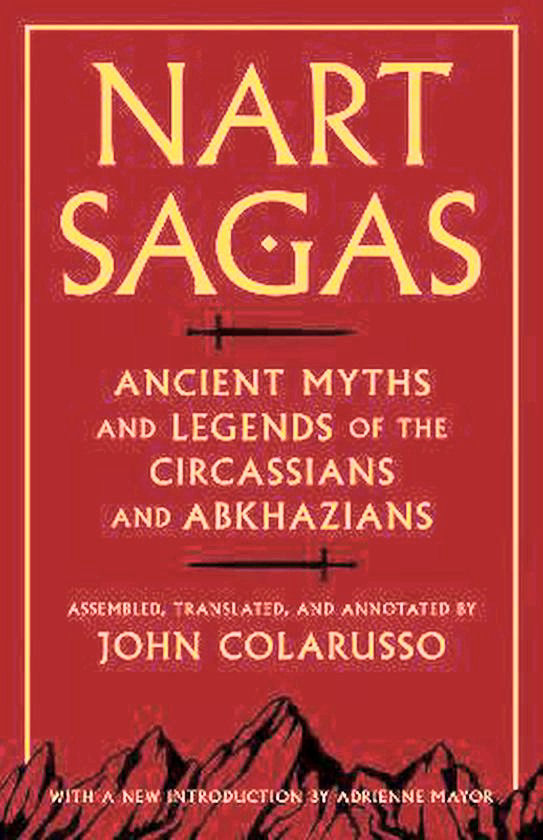
“The Nart sagas are heroic tales, extremely archaic and varied. They occur across the North Caucasus, among Chechens and Ingush, among Ossetians, among Circassians and their kin, and even among the Kartvelian speaking Svans and Georgian highlanders of northernmost Georgia.” ‘Nart Sagas from the Caucasus’ by John Colarusso, 2002.
The area from which these sagas originate is precisely at the meeting point of the three ancient Iranian kingdoms of Iran, Rum and Turan. Due to the topography of the area it was largely inaccessible and thereby managed to escape or resist much of the enforced Zoroastrian and later Abrahamic religions and thus retain a great deal of its pagan traditions. Therefore, it’s reasonable to assume that the Nart Sagas reflect the traditions and beliefs of the pre-Zoroastrian inhabitants of those three ancient kingdoms.
“Great buildings and monuments were absent, but the chief monument of their civilization resided in the languages and the folklore these enshrined. Most varied and revered among the various tales was a body of lore in which a band of heroes was depicted, all of whose members were said to have a single mother, an age-less beauty. These were the Nart sagas, legends found across the North Caucasus.” (ibid.)
“The Nart sagas, which are not sagas in the usual sense of semihistorical accounts of a prominent person’s life, closely resemble the myths of the pagan Norse (Davidson 1964) and Ancient Greece (Burkert 1985, especially pp. 119–225). Bards, male and female, render them through song, verse, and simple prose. Although the exploits of the characters have the magic and bravura of gods, only a few figures retain genuine deity status. In this sense they are once removed from the status of myth... These sagas are of interest not only in their own right as a testament to the civilization of this lost world, but also because they show striking parallels with the traditions of the ancient peoples who at one time were in contact with the North Caucasus. They have been largely viewed as a relic of the old Iranian-speaking culture of the Scythians, Sarmatians, and Alans, with only passing reference made to Circassian lore... That there is an ancient Iranian core in the various corpora is not to be denied.” (ibid.)
I would add to the list of comparisons the Irish Tuatha de Dannan, Basque mythology and the original less corrupted Arthurian legends.
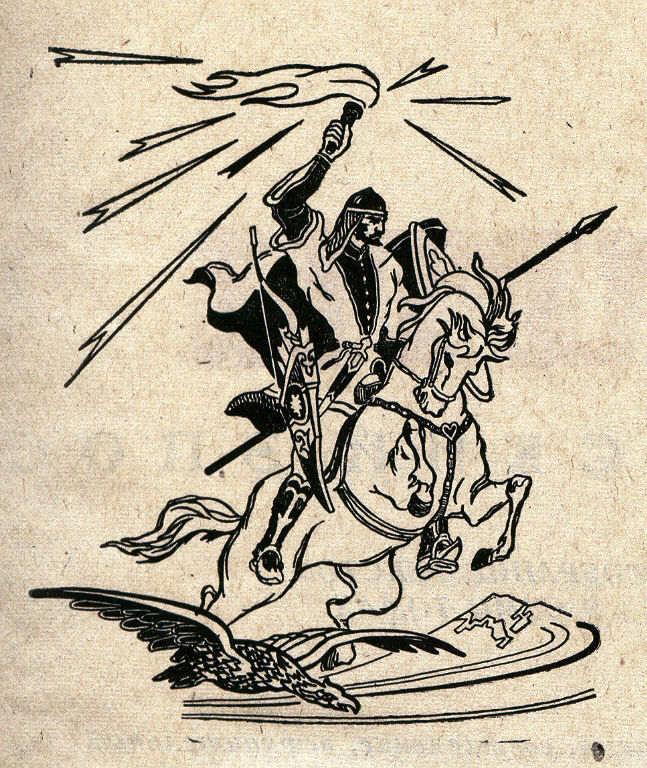
Sawsrouqa (Nart)
Hadaghath Askar,
Public domain
“More surprising are the striking parallels between the grim Norse war god Odin and a Nart named Wa(r)dana, as well as between the Norse world tree Yggdrasil and ‘Lady Tree’ of the Narts (Colarusso 1989b, 1989c, 1984b)... Parallels with the Arthurian cycle are also undeniable (Littleton and Malcor 1994; Colarusso 1994b, 1994c) but are more evident in the Ossetian Nart tradition (May, Salbiev, and Colarusso 2002).” (ibid.)
The mother of this band of heroes, or Narts, was named ‘Satanaya’. I wonder if the Christian naming of the devil as ‘Satan’ was the male version of this name and given with the express purpose of demonising Satanaya? The geographical area covered by these tales has since been the scene of some of the most horrendous ethnic cleansing and genocide ever known. It continues to be the focus of unrest even today. However, it’s reassuring to know that the belief system these tales represent has made a recent revival in the form of of Assianism or Watsdin (“True Faith”) as discussed at the end of Part Two.
Why, some 550 years after the cataclysm, would Rome still be sending Italian humanist scholars / historians / priests / diplomats to England in order to destroy books and manuscripts of pre-cataclysmic British history and then rewrite it? This coincided with the discovery of the New World, part of which was encompassed by The Kingdom of Albion, as presented in Part One. Felix has already discussed this event in his ‘King Arthur in Hyperborea’ article as related by Dr. John Dee concerning one Polydore Vergil who was much more widely condemned at the time.
Even in the 1500s he was describing himself as a ‘client’ of his Roman ‘patron’ Cardinal Adriano Castellesi. (Hay, Denys, 1952 ‘Polydore Vergil: Renaissance historian and man of letters’.) Before setting foot in England, Vergil had achieved fame for two of his books that became very influential in terms of chronology for many centuries after and set the benchmark for the official narrative alongside Scalinger’s works. One in particular dealt with Gildas’ history of the conquest of Britain. Vergil used it as a basis for his anti-Arthurian fanaticism. Once in England he wrote the Anglica Historia (History of England) which encompassed 25 books and four different editions, each one revised to accommodate his own, or his ‘patron’s’, personal vendettas.
“A particularly controversial element of Vergil's work in England was the scepticism he expressed – first in his edition of Gildas, and then in the Anglica Historia – towards the traditional account of the early history of Britain derived from Geoffrey of Monmouth, and in particular towards the question of the historicity of King Arthur…
“...John Bale in 1544 accused Vergil of "polutynge our Englyshe chronycles most shamefullye with his Romishe lyes and other Italyshe beggerye". [Polluting our English chronicles most shamefully with his Romish lies and other Italy-ish beggary] (Connell, William J. 2004 "Vergil, Polydore c.1470–1555") An anonymous contemporary described him as "that most rascall dogge knave in the worlde", claiming that "he had the randsackings of all the Englishe lybraryes, and when he had extracted what he pleased he burnt those famous velome [vellum] manuscripts, and made himself father to other mens workes". (Hay, Denys, 1952 ‘Polydore Vergil: Renaissance historian and man of letters’.) This charge of burning manuscripts was widely reported. John Caius in 1574, for example, asserted that Vergil had "committed as many of our ancient and manuscript historians to the flames as would have filled a waggon, that the faults of his own work might pass undiscovered". (Translated in Vergil, Polydore,1844, Sir Henry Ellis.) William Lambarde in 1576 commented that "as [Vergil] was by office Collector of the Peter pence [taxes paid directly to the Holy See of the Catholic Church] to the Popes gain and lucre, so sheweth he himselfe throughout by profession, a covetous gatherer of lying Fables, fained [faked] to advaunce [advance] the Popish Religion, Kingdome, and Myter [Mitre]". (Lambarde, William,1576, ‘A Perambulation of Kent.’) Henry Peacham in 1622 again accused Vergil of having "burned and embezeled the best and most ancient Records and Monuments of our Abbeies, Priories, and Cathedrall Churches, under colour [pretence] … of making search for all such monuments, manusc. records, Legier bookes, &c. as might make for his purpose (Henry Peacham,1622, ‘The Compleat Gentleman’." Source
He was a complete something, but definitely no gentleman...
Once again we find independent confirmation of John Dee’s claims. It’s remarkable how the ‘Romanist’ element was so fanatically intent on destroying, defaming and suppressing early British history even half a millennium after the cataclysm. This is all easily explained by the ‘Rome in the North’ concept because if the Roman Empire never existed pre-cataclysm, but actually came into being afterwards and was also not only sent back in time, but relocated as well, then all evidence of what was really happening prior to the cataclysm had to be destroyed and its history rewritten to accommodate the new, old Roman Empire.
Having an idea of the general situation in the wake of the cataclysm is essential to unravelling the bundle of lies surrounding that entire period and beyond. To that end we have the Domesday Books, which were discussed in Part One, showing that vast tracts of Britain were left virtually empty. We also have Ferdowsi’s description, disguised as a prophecy, from the final part of the Shahnameh.
I feel it’s worth reiterating some of the salient points from that ‘prophecy’:
“But when the pulpit’s equal to the throne...our long travails will be as naught, and all the glory we have known will fade and fall… No crown or throne, no royal sovereignty: Long days will pass, until a worthless fool will lead his followers and presume to rule… Justice and charity will disappear, at night, the time to hide away and sleep, Men’s eyes will glitter to make others weep;
Strangers will rule us then, and with their might they’ll plunder us and turn our days to night. They will not care for just or righteous men, deceit and fraudulence will flourish then. Warriors will go on foot, while puffed-up pride and empty boasts will arm themselves and ride. The peasantry will suffer from neglect, lineage and skill will garner no respect, men will be mutual thieves and have no shame, curses and blessings will be thought the same. What’s hidden will be worse than what is known, and stony-hearted kings will seize the throne. No man will trust his son, and equally no son will trust his father’s honesty— a misbegotten slave will rule the earth, greatness and lineage will have no worth, no one will keep his word, and men will find the tongue as filled with evil as the mind… Men will conceal their wealth, but when they’ve died, their foes will pilfer everything they hide. Men will pretend they’re holy, or they’re wise, to make a livelihood by telling lies. Sorrow and anguish, bitterness and pain will be as happiness was in the reign of Bahram Gur… There’ll be no feasts, no festivals of state, no pleasures, no musicians, none of these: but there’ll be lies, and traps, and treacheries. Sour milk will be our food, coarse cloth our dress, and greed for money will breed bitterness. Between the generations: men will cheat each other while they calmly counterfeit Religious faith. The winter and the spring will pass mankind unmarked, no one will bring the wine to celebrate such moments then; Instead they’ll spill the blood of fellow men.”
From these two sources we have views that are as extreme as the locations from which they originate – in the north the utter devastation and depopulation of Britain, while in Iran, total chaos. It’s not hard to imagine that, somewhere in between these two extremes, hostile confederacies jostled for control of the minds, bodies and souls of survivors in Europe, Scandinavia and Britain.
It seems that the whole post-cataclysm Norman and Christianity ‘thing’ came as one great big package. The origins of the Feudal System are lost in time, but the official line dates it to the 9th century. However, it was exactly one and the same as the Roman ‘Patricians and Plebians’ or ‘Patron and Client’ system that was cleaned up, given respectability and sent back in time to the pre-cataclysm facsimile Romans. It was all about maintaining power and control through an ideology based upon fear, requiring people to retain and gain (or rent) succour, favour, power and influence without involving the slightest notion of sincerity.

The Feudal System
Judith 018, CC BY-SA 4.0
This system didn’t just apply to individual aristocrats, bishops and their plebs, but also to entire conquered states. A defeated tribal leader, his kingdom and territory, would become a client to the Roman, or rather Norman, state. The Roman facsimile version of this arrangement became known as ‘Foederati’ as in a confederacy. It worked very much on the concept of a ‘Protection Racket’.
Normanism (Romanism,) like Communism, was an all-embracing ideology, except that it also brought its own religion along with it – Christianism – rather than no religion at all and it encompassed all of the social, religious and political aspects of everyday life. Back then, these concepts were all very tightly entwined.
Subjugation by the Noromans would normally involve the introduction of the Christian ‘gods’ to either be worshipped alongside the native pagan ones or as a re-definition of them. The Christian missionaries / ‘saints’ would always concentrate on converting the rulers of client tribes and kingdoms, as the loyal subjects would have little choice but to follow their traditional leader. This often led to conversion by force, particularly after a revolt. Gradually, the original pagan gods were demonised and their roles co-opted by the Christian saints or taken over completely by ‘the one true god’.
Early Christianity seems very ill-defined and was available in a variety of regional flavours, or so we are led to believe: Arian; Coptic; Catholic; Apostolic; Celtic, Nestorian and even Gnostic. At some point after the cataclysm, as if establishing a pattern for the future, there was an East-West division within Catholicism itself creating Roman and Eastern Orthodox. Over time, the the hostile confederacies underwent a kind of ‘unnatural selection’ brought about by conflict, treachery and extreme violence, particularly in France. The evidence for this can be seen in two Catholic proclamations known as The Peace and Truce of God. The first was made just 55 years after the cataclysm…
“The Peace of God or Pax Dei was a proclamation of the local clergy that granted immunity from violence to noncombatants who could not defend themselves, starting with the peasants (agricolae) and the clergy. The Synod of Charroux decreed a limited Pax Dei in 989, and the practice spread to most of Western Europe over the next century, surviving in some form until at least the thirteenth century….
“...Under the Peace of God are included:
This Pax Dei was soon extended to include the Church's devotees; the poor, pilgrims and crusaders. This in turn gave rise to the right of sanctuary or asylum. A synod of 1033 also added merchants and their goods to the protected list – this is highly significant and should be noted for later.
The Papacy also took advantage of the Pax Dei by establishing the Benedictine Cluny Abbey in Burgundy as a non-secular authority subject to the Pope alone. It claimed a 30km diameter area of surrounding land as its own and then offered protection to any adjoining monasteries who allied with Cluny. They would also receive immunity from any excommunications, interdicts (suspensions), and anathemas (curses), that would normally affect an entire region. The thing is though, many Cluniac monks came from the exact same ‘noble’ families who were causing all the violence in the first place.
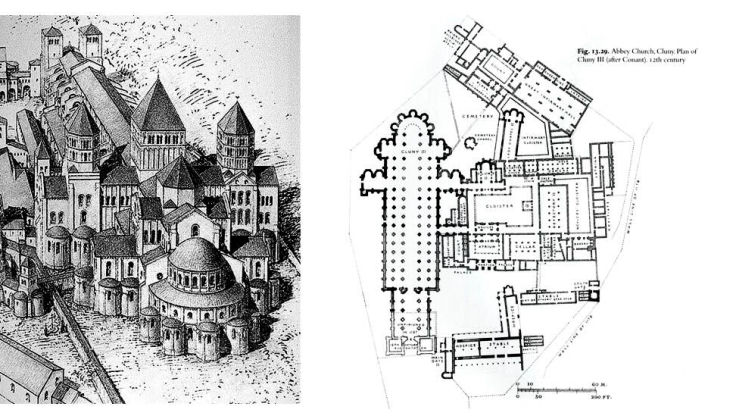
Cluny Abbey
Source
The Truce of God, or Treuga Dei, began in Caen, Normandy and was proclaimed in 1027. Its purpose was to prescribe the days of the week and times of year when violence was permitted by the Church.
“It confirmed permanent peace for all churches and their grounds, the monks, clerks and chattels; all women, pilgrims, merchants and their servants, cattle and horses; and men at work in the fields. For all others peace was required throughout Advent, the season of Lent, and from the beginning of the Rogation days until eight days after Pentecost. This prohibition was later extended to certain days of the week, namely Thursday, commemorating the Ascension, Friday, the day of the Passion, and Saturday, the day of the Resurrection (Council 1041). In the middle of the twelfth century, the number of days prescribed was extended until there were about eighty days left for fighting.” (ibid.)
Please note again the inclusion of “merchants and their servants.”
It’s claimed that these proclamations were inspired by the intense violence in France, but we can see the same problem in England as defined by what history calls ‘The Anarchy’ which supposedly took place between 1138 and 1153 in northern Europe and Britain. Regardless of the details, which are nonsense in the official version, some confederacies re-formed and made new allegiances whilst other vanished forever. The different flavours of Christianity were numbered amongst these confederacies, most of which vanished (if they had ever existed in the first place) and those that survived consolidated into Roman Catholicism. The Normans seem to have been the first to enter into a confederacy with the Roman Church, but the Catholic desire to be a state within a state caused many problems. The Catholic Church was fickle in its allegiances and the resulting wars and excommunications soon became the norm. What all sides had in common though, was fanatical monotheism, total and utter hatred of Paganism, complete intolerance of any other religious faith except Judaism and ownership and exploitation of the land and everything living upon it.
he actual term “Holy Roman Empire” wasn’t used until the 13th century, so given that the pre-cataclysmic Roman Empire was just a facsimile, then the Holy Roman Empire and the Roman Empire were one and the same thing – it was the Holy Roman Empire that was fictionalised and a facsimile sent back in time.
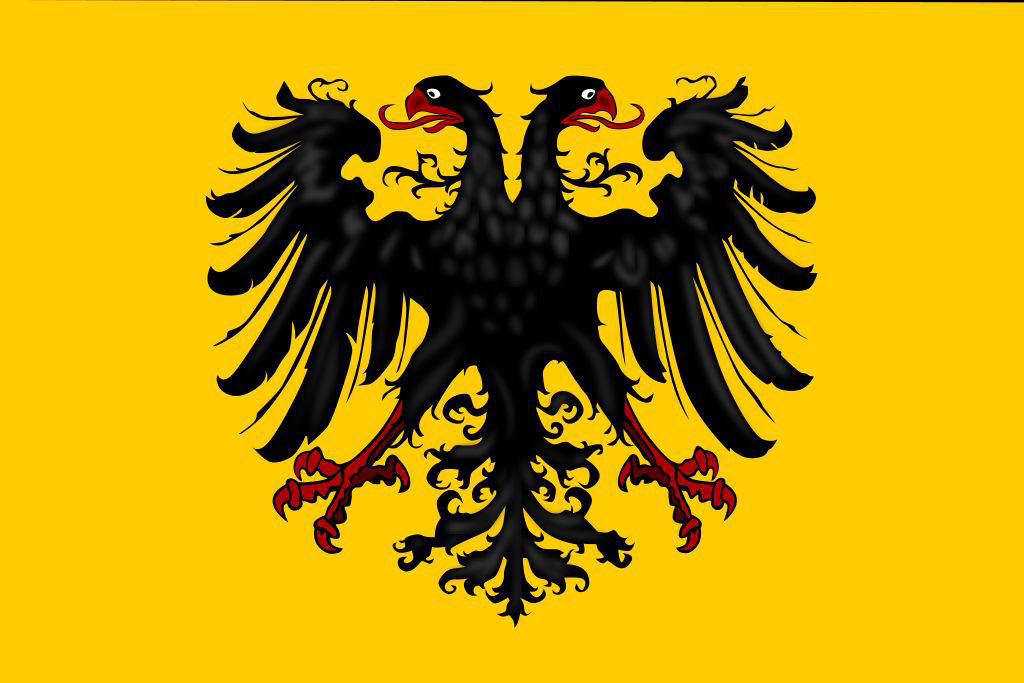
Emblem of the Holy Roman Empire
David Liuzzo, eagle by N3MO (re-uploaded by Dragovit), CC BY-SA 3.0)
If we take a look at the official timeline for Christianisation it throws up all kinds of ridiculous dates in order to comply with the official AD chronology – of course. There are also many entries showing conversions from Paganism and then back again and also conversions between the different flavours of Christianity. It all looks very much like a list of the personal whims of a few regional leaders and localised clergy. Significant pre-10th century claims include, The Roman Empire, The Vandals, The Goths, Burgundy, The Franks and The Saxons. However, given that the Roman Empire didn’t exist at that time and, as far as we know, the Ruman Empire never made inroads into the areas of Burgundy, France and Saxony, these conversions were all post-cataclysm.
10th to 12th century entries include: Denmark, Poland, Hungary, The Kevian Rus (Russia), Norway, Iceland, Sweden, The Byzantine Empire, Pomerania (Poland / Germany) and Finland.
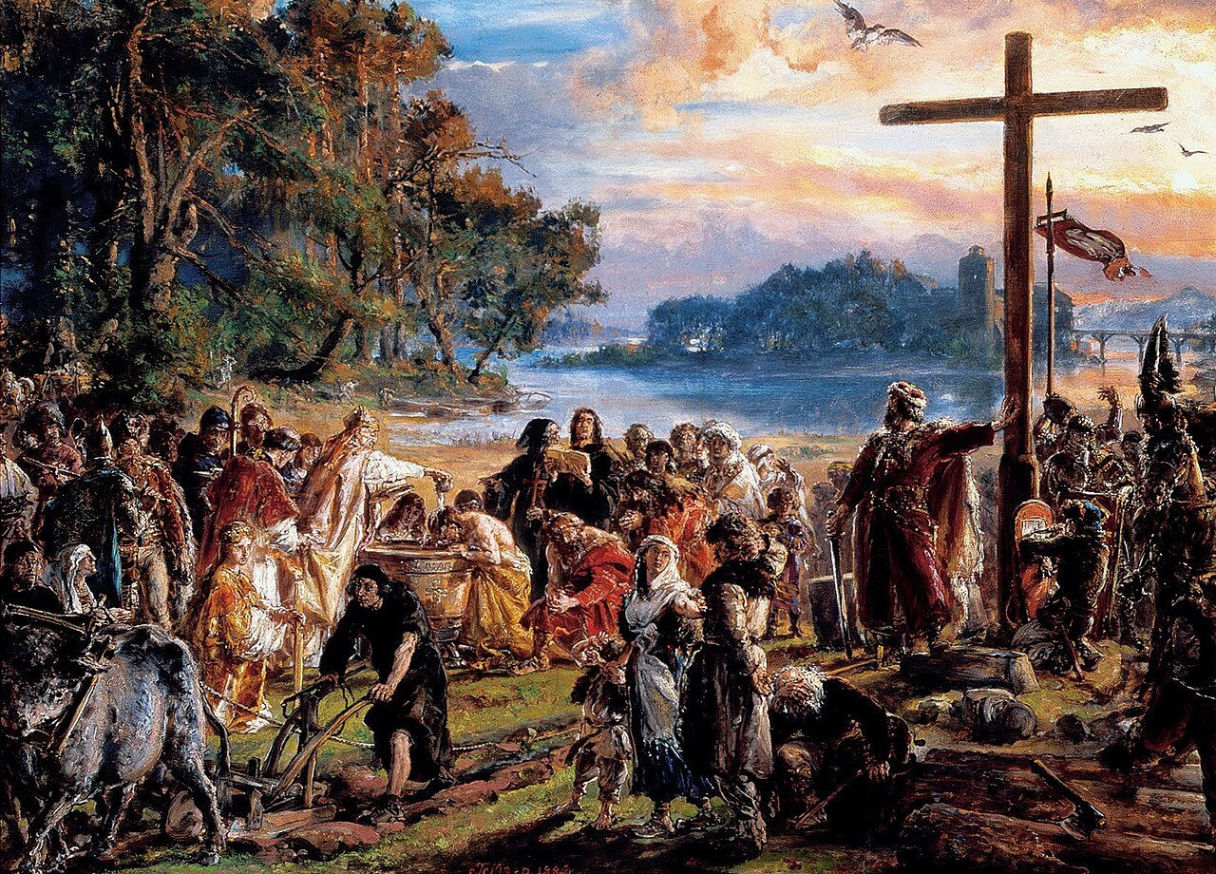
Ther Christianisation of Poland
Jan Matejko, Public domain
The Norman Foederati, or confederacy, was much more widespread than is formally acknowledged these days and includes just about everyone and anyone they ever ‘conquered’. Maybe ‘subdued’ would be a better term as Norman / Roman conquest never involved invasion in the sense of colonisation, as it was more about subservience to Norman / Roman rule, Roman Christianity and exploitation. In fact it was exactly the same as the later British and Spanish Empires.
Gunnar Heinsohn’s archaeological evidence places the Roman Empire, the Saxons and Charlemagne as contemporaries. He cites coins depicting supposed pre-cataclysm ‘Anglo-Saxon’ kings of Britain, like Offa of Mercia and Alfred the Great, that show them adorned as Roman Emperors wearing a typical Roman diadem. The same applies to Charlemagne… and also to William the Conqueror. But, surely there’s another explanation for those coins – that they were all depicting post-cataclysm ‘Confederate Emperors’ who were sent back in time to the facsimile Roman Empire period.
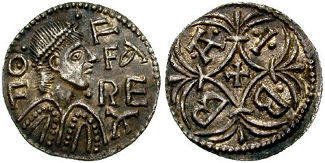
King Offa of Murcia
Classical Numismatic Group, Inc. http://www.cngcoins.com, CC BY-SA 2.5
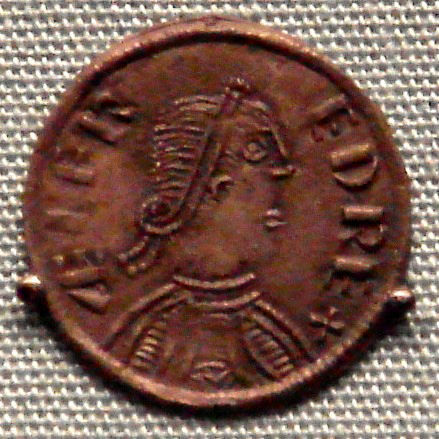
King Alfred The Great
PHGCOM, Public domain
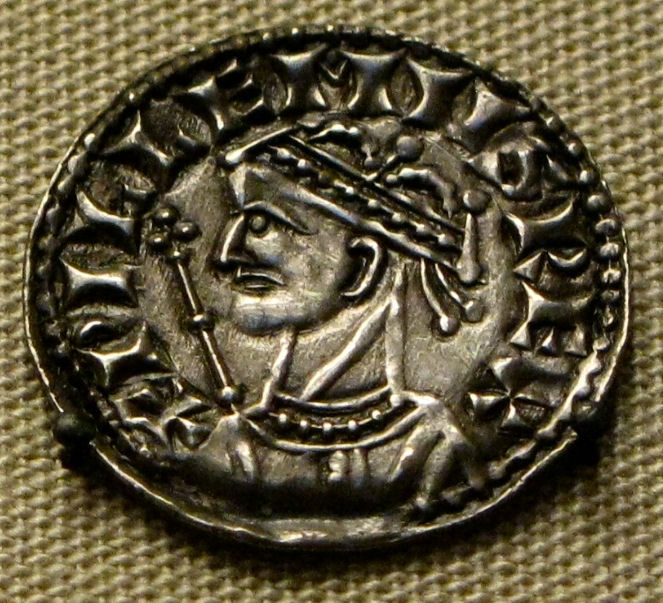
William the Conqueror
User:Saforrest, CC BY-SA 3.0
(For the benefit of non-English speakers, the title is a corruption of the old English expression “A penny for your thoughts,” a penny is an old English coin.)
At this point I’d like to digress a little and show just how difficult it is to verify anything relating to the period under discussion in these articles. The following comes from ‘The Dwellings of the Philosophers’ by the ‘Last Master Alchemist’, Fulcanelli:
“For it is easy to fabricate texts and documents out of nothing, old charters with warm patinas, parchments and archaic-looking seals, even a few sumptuous books of hours, annotated in their margins, beautifully illuminated with locks, borders, and miniatures. The Montmartre district of Paris delivers to whoever desires it, according to the price offered, the unknown Rembrandt or the authentic Teniers. A skilled artisan of the Halles district of Paris can shape with a staggering verve and mastery little gold Egyptian divinities and massive bronze statues, marvelous imitations over which some antique dealers fight. Who does not remember the infamous Tiara of Saitaphernes... Falsification and counterfeiting are as old as the hills, and history, which abhors chronological vacuums, sometimes had to call them to its rescue. A very learned Jesuit of the 17th century, Father Jean Hardouin, did not fear to denounce as spurious numerous Greek and Roman coins and medals coined during the Renaissance and buried with the aim to fill in large historical gaps. Anatole de Montaiglon informs us that in 1639 Jacques de Bie published a folio volume with illustrations called: The Families of France, Illustrated by the Monuments of Ancient and Modern Medals, which, according to him, "contains more invented medals than real ones". Let us agree that in order to give history the documentation it was lacking, Jacques de Bie utilized a more rapid and more economical process than that denounced by Father Hardouin. Victor Hugo, citing the four best-known histories of France around 1830 --- those of Dupleix, Mezeray, Vely, and Father Daniel --- says of the latter that the author, "a Jesuit famous for his descriptions of battles, completed in 20 years a history which has no other merit than erudition and in which the Count of Boulainvilliers found no less than 10,000 errors". We know that Caligula, in the year 40 AD, had the tower of Odre built near Boulogne-sur-Mer "to deceive future generations on the subject of the supposed raid of Caligula on Great Britain." Converted into a lighthouse (turris ardens) by one of his successors, the tower of Odre collapsed in 1645.”
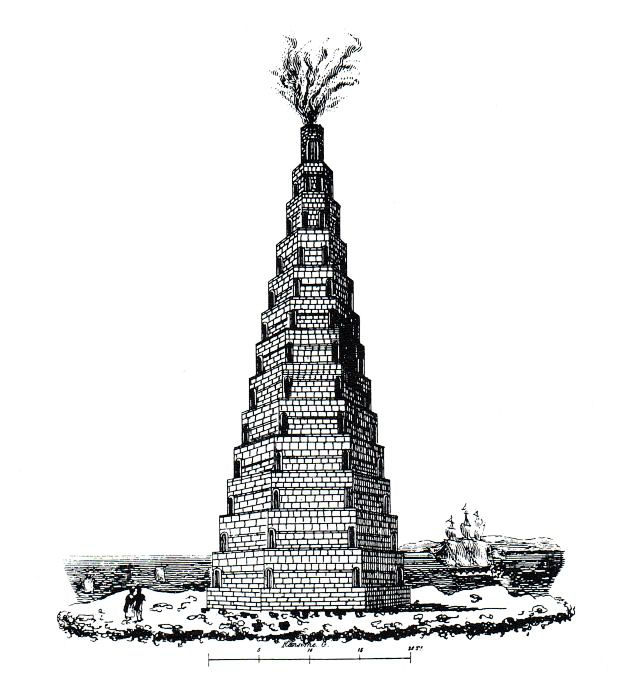
Caligula's Tower
Source
So, the Roman Emperor, Caligula, managed to build a tower some 900-1000 years before the Roman Empire existed, which was itself a monument intended to deceive future generations into believing something that never happened anyway. 😵 💫
The story goes that the Tower of Odre collapsed twice or even three times between 1640 and 1644. This was blamed upon erosion of the cliff upon which it rested and also destabilisation caused by the underground springs. The fort and the tower collapsed twice according to some, three times according to others. The last fall dates from July 29 or 30, 1644. The remains of the Tour d'Odre, also called Caligula’s Tower, remained until about 1930 as may be seen from postcards of the period.
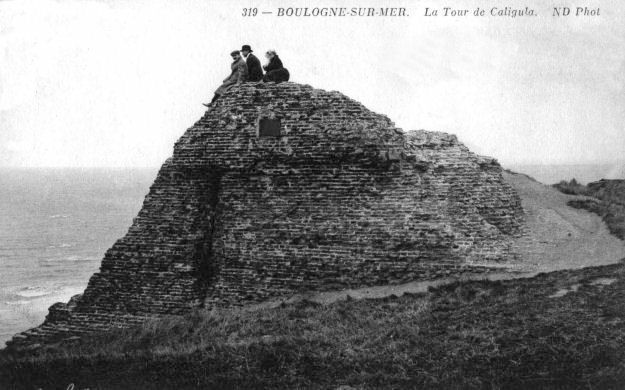
Tower of Odre (Caligula's Tower,) 1930
Source
Personally, I find it very hard to believe that the original construction stood for 1,604 years under the same conditions as those that caused two or three collapses in 1644. On that basis it seems highly likely that the Tower of Odre is a much more recent construction that was backdated to 40AD and assigned to Caligula and his alleged abandoned invasion of Britain as a kind of double-bluff. In the light of the 10th century caaclysm, the area between Dover and Calais would more than likely have been dry land in 40AD anyway.

Offa, no Alfred, no William, no Caligula, with Agrippa.AD 37-41.
Yeah, right...
Classical Numismatic Group, Inc. http://www.cngcoins.com, CC BY-SA 2.5
End of Digression
At some point not long after the cataclysm the first hostile confederacies began to take shape. Charlemagne was probably one of the first rogue leaders to assert his dominance. In fact, my friend Silveryou believes that Roland, one of Charlemagne’s military leaders, gave rise to the legend of ‘Rollo’ as the founding-father of the Normans which is now taken as historical fact. Anyway, Charlemagne attempted to Christianise the Saxons ‘on penalty of death’ in his Capitulatio de partibus Saxoniae.
This wasn’t the only atrocity attributed to Charlemagne with regard to the Saxons. The event known as the Massacre of Verden throws more light on the incidents detailed in Part One regarding the ‘revolting Germans’ that took place in the Teutoburg Forest in Lower Saxony. This also must have occurred either after the cataclysm or not at all. If you recall, we compared the onslaught of the Saxons to the wrath of Wotan and the Valkyries. This area was of immense significance to the Saxons as it was home to their Irminsul, or ‘great pillar', which was a highly valued totem of their belief system and related to Yggdrasil, the cosmic tree. In our article ‘Legal-Fiction, Cruci-Fiction – The Strawman and The True Cross’ we discuss the Irminsul in detail and in particular how it was a rival to the ‘True Cross’ of Christianity. Charlemagne had been desperate to destroy the Irminsul for a long time when a surprise Saxon rebellion and victory gave him his opportunity. Upon hearing the news of the rebellion, he assembled the largest force he could and marched upon the Saxons. They capitulated, but that wasn’t enough for Charlemagne as he gathered together 4,500 Saxon ‘nobles’ and executed them all. He also destroyed the Irminsul.

It must also be borne in mind that Charlemagne and his exploits were mythologised in the manner of a Leader plus 12 disciples / knights /paladins to fall in line with the new biblical fashion for the ‘One plus Twelve’, or coven of 13. This was also applied to King Arthur in the later tales.
As far as accepted history is concerned, the period immediately following the 934 cataclysm is one of mass conversion to Catholic Christianity right across Europe. We’re taking about entire countries and this is evidenced by the enormous quantity of baptisteries that have been discovered from this period. Which is very curious. Gunnar Heinsohn himself notes this:
‘The unbelievably slow progress of Christianisation across Europe –– which proceeded in phases that resembled each other but which were separated by several hundred years –– is one of the major enigmas in the history of the 1st millennium CE: “A very important result of [Christiansation’s comparative archaeology; GH] is the fact that in quite different periods one finds similar conditions [destructions with ensuing baptisteries; GH] under which the spread of the Christian faith follows the same pattern. / Some readers will be surprised that the process in which Europe became Christian was stretched over more than 1,000 years“ (Heinrich-Tamáska/Krohn/Ristow 2012a, 9)’ Source Creation of the First Millennium CE, Gunnar Heinsohn, November 2013
Of course, Heinsohn is making the point that the phases separated by several hundred years were all one phase and that the same pattern of “destructions with ensuing baptisteries” was just one destruction. He gives detailed archaeological evidence for this situation in Poland, The Czech Republic, Slovakia and Scandinavia. He also shows that the construction of baptisteries for mass conversions almost immediately after the cataclysm was a veritable 'pandemic' in Europe.
Late in the tenth century Russia was converted when Prince Vladimir (reigned 980-1015, suspiciously close to the cataclysm,) adopted Christianity. His subjects were given the simple choice of Christian baptism in the river Dneiper or drowning in it. He is now a saint.
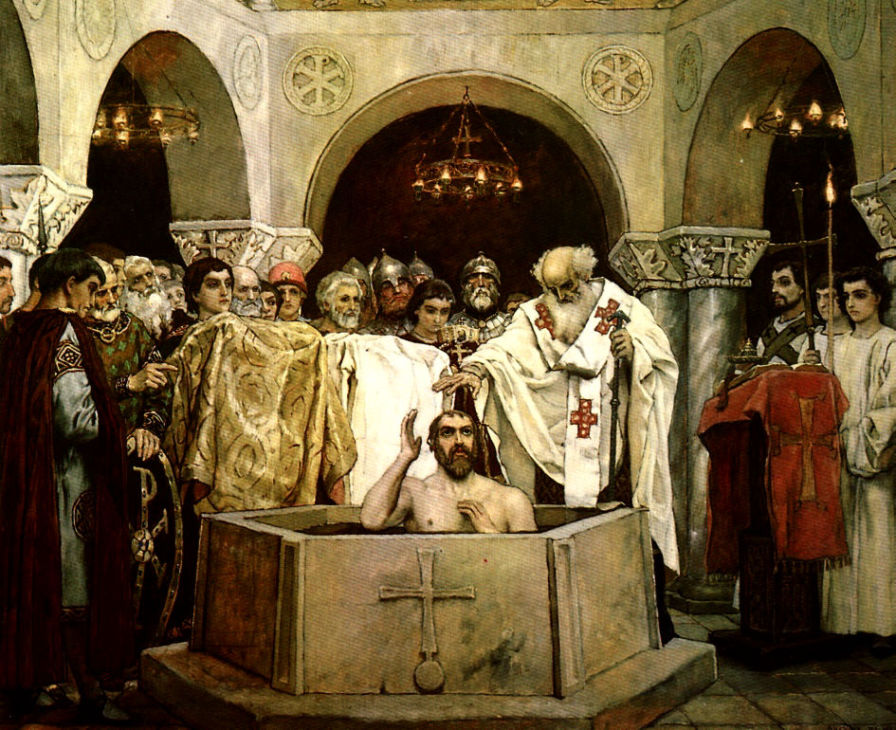
Prince Vladimir waves cheerfully from the font
Viktor Vasnetsov, Public domain
This is identical to the forced Christianisation of Norway which prompted a mass migration to Iceland and was later attributed to King Arthur. The Icelandic Sagas even tell of terrified Christians fleeing from Norway to Iceland during that same period. Again, this is all supposed to have happened between 955 and 1000 AD, in other words directly after the cataclysm.
Due to previous resolute failures, Norway was finally converted under King Olav, largely at the point of the sword. He too is now a saint. The Norwegians who fled to Iceland were vigorously pursued. Whilst the Christianisation of Iceland was much less bloody than usual, it demonstrates the technique. A 'Saxon' missionary, Friedrich, arrived during the tenth century but was forced to leave when his assistant, Thorvaldur, killed too many locals. In AD 1000 King Ólafur Tryggvason of Norway took up the challenge as Jón Hjálmarsson, an Icelandic historian, relates:
“King Ólafur’s first missionary to Iceland was Stefnir Thorgilsson, a native of Iceland, who started by attacking and breaking down heathen temples, and was promptly exiled. Next, the King sent a Flemish priest named Thangbrandur, who had reached Norway via England. He managed to baptise several of the noble Icelandic chieftains, but as he could not tolerate any opposition and killed several men who spoke against him, he too had to leave the country.”
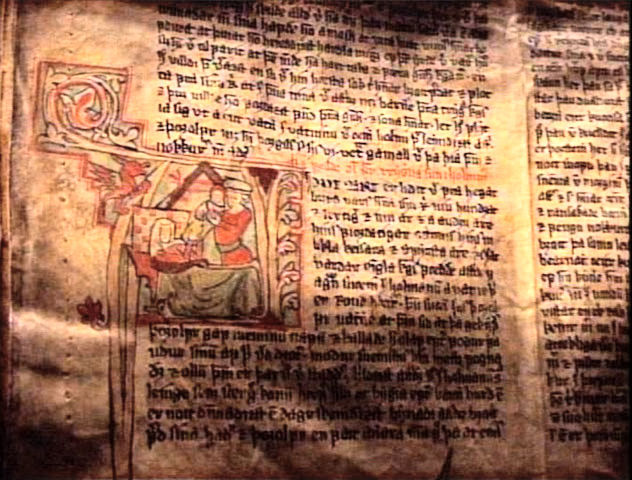
The Icelandic Sagas
Gilwellian, Public domain
Further Christian missionaries so destabilised the country that Thorgeir, the lawspeaker, was asked to decide what should be done. A liberal and tolerant pagan himself, he decided that Christianity should be adopted as the national religion, but that the people should be allowed to keep many of their traditional practices, including the right to worship in private whatever gods they chose. It seemed to be more than fair. Hjálmarsson says of the conversion:
“The introduction of Christianity in Iceland was a peaceful and almost unique historical event. It was quite different from the prolonged conflicts, warfare and bloodshed which customarily accompanied Christianization in most other countries. This peaceful settlement arose probably more for political than religious reasons.”
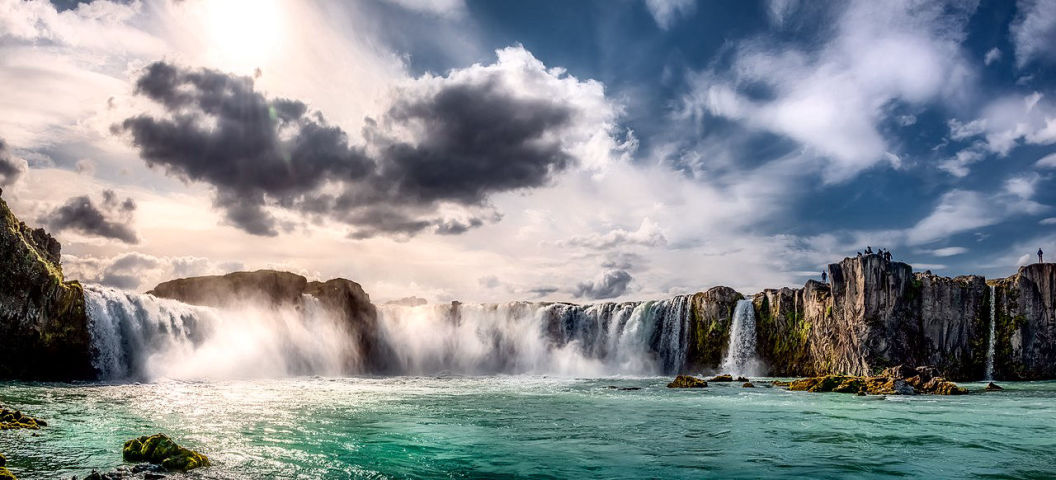
The Goðafoss (waterfall of the gods) in northeastern Iceland.
According to an old legend, Þorgeir Ljósvetningagoði, after having made Christianity the official religion of Iceland in about the year 1000 C.E., threw the statues of the old Norse gods into the waterfall.
Bernd Thaller from Graz, Austria, CC BY 2.0
Within sixteen years the exemptions for traditional practices, including the liberty to worship other gods, were abolished. As elsewhere, Christians now denied [others] the liberty of worship that they had so earnestly advocated for themselves. Within a century compulsory tithes were introduced. Soon the Benedictines and Augustinians had introduced the abuses and corruption common in mainland Europe. By the thirteenth century a feudal system had been introduced, and freeholders were reduced to feudal tenants of the Roman Church. Another country had been successfully converted. (Source for the Icelandic Conversion material)
I know Gunnar Heinsohn rejects any ‘conspiracy theories’ associated with the cataclysm, but the evidence seems to be crying out for a more satisfactory explanation than relief at surviving the event evoking blind faith in a new religion. If this was the case, then why did so many converts need to be threatened with their lives?
So, how do we assimilate this situation of mass conversions almost immediately following the cataclysm? Is it reasonable to expect that the construction of baptisteries would be the major consideration and an urgent priority after a cataclysm? There are other considerations as well – who was so highly organised to have been able to build all these baptisteries on such a widespread scale and to have amassed a sufficiently large army to facilitate these mass enforced conversions? Were some more prepared to survive the cataclysm than others? Given the conditions, desperation would undoubtedly cause some to accept recruitment into a kind of post-cataclysmic Crusade…
Wait a minute… was this actually the First Crusade?
I don’t want to get distracted by Islam and the Crusades as it’s a massive subject that requires a huge amount of research. However, maybe we can at least raise a few eyebrows with some comments that will hopefully demonstrate that all is not as it seems. Readers will recall that we have already cast serious doubt upon the official account of the rise of Islam in Part Two.
“Crusade (n.) ‘military expedition under the banner of the cross,’ 1706, a respelling or replacement of croisade (1570s), from French croisade (16c.), Spanish cruzada, both from Medieval Latin cruciata, past participle of cruciare "to mark with a cross," from Latin crux (genitive crucis) "cross" Source
The word “Crusade” wasn’t in use until 1705. Prior to that it was all about forced baptism – cruciare.
“Overall, there were nine major crusades, all involving Christian pilgrims who attempted to liberate the Holy Land from Islamic control in one way or another. As the crusades went on for about two centuries, they would generally prove more and more futile. There is no way of knowing exactly how many died as a result of the conflict, but estimates range from one million all the way to three million people.” Source
It’s well worth noting that ‘The Anarchy’ (1138 – 1153,) mentioned earlier, was also taking place in France, Germany and Britain during the period after the First Crusade and even overlapped with the later expeditions and the Second Crusade itself (1147 – 1149.) The First Crusade had by far the greatest number of participants, predominantly from France, but once The Anarchy began, participation in the crusades and expeditions dwindled. Was this the result of fluctuating Catholic allegiances and infighting amongst the rival confederacies?

Charleslincolnshire, CC BY-SA 4.0
This map shows the origin of the men and women who took part in the crusades to the Holy Land in the period between the Council of Clermont (1095) and the end of the Second Crusade (1149). It’s very interesting to note that the vast majority of crusaders originated in Normandy, Flanders, France, Anjou and Poitou. Surprisingly few came from what was supposed to have been the The Holy Roman Empire (Central Europe / Germany) under the German Salian dynasty at the time of the crusades.
The map above is part of a database compiled by by 5 English university professors that has been ongoing since 2007. Further details and sources for the data can be found here.
Further analysis of the database shows the following breakdown by country for participants in the First Crusade, 1096 – 1099 (please note, these are defined modern country boundaries):
It’s clear from the above that the vast majority of First Crusaders came from what is now France, Belgium and Italy (southern Italy as the map illustrates.) These are all Norman / Frankish regions. The predomination of French based crusaders continued throughout all of the minor crusades and expeditions that took place during the interim between the first and second crusades. It’s not until the Second Crusade of 1147 that German participation replaces that of southern Italy, although France still provided the overwhelming majority of crusaders.
The biggest Crusade was the First with a contingent of 670 recorded in the database. One of the minor crusades involved 92 people with another two of about half that number. The various expeditions were sometimes of just one person. The database records only 230 participants for the Second Crusade.

Peter the Hermit Preaching the First Crusade
Unknown author, Public domain
The First Crusade was instigated by the same Council of 1095 during which the previously discussed Truce of God was renewed by Pope Urban II. The two seemingly opposing concepts were united by a call to extend the Peace and Truce of God to the East ...through violence. However, we are led to believe that the first crusaders were not knights or noblemen, but peasants. The general atmosphere of the time is described thus:
“The peasant population had been afflicted by drought, famine, and disease for many years before 1096, and some of them seem to have envisioned the crusade as an escape from these hardships. Spurring them on had been a number of meteorological occurrences beginning in 1095 that seemed to be a divine blessing for the movement: a meteor shower, aurorae, a lunar eclipse, and a comet, among other events. An outbreak of ergotism [poisoning from a fungus affecting crops] had also occurred just before the Council of Clermont. Millenarianism, the belief that the end of the world was imminent, popular in the early 11th century, experienced a resurgence in popularity. The response was beyond expectations: while Urban might have expected a few thousand knights, he ended up with a migration numbering up to 100,000 Crusaders of mostly unskilled fighters, including women and children.” Source
100,000 is a significant deviation from the 670 recorded in the database, although I suppose the argument would be that peasants left no official records. Even so, it seems excessive, in my opinion. The drought, famine and disease mentioned above are another clear sign of the cataclysm's aftermath.
It’s worth noting that ergot, the poisonous fungus responsible for ergotism, may explain some of the apparent ‘Crusade Mania’…
“Being chemically similar to lysergic acid diethylamide (LSD), ergot would not survive in the acidic environment of a typical human's stomach, especially in properly cooked food. But if some residents of a household were malnourished and had bleeding stomach ulcers, those individuals would have had a heightened risk of absorbing the toxin (even with properly cooked food items) through the stomach lining, offering a direct route to the bloodstream. Only those with these preexisting conditions would have been affected by ingesting contaminated grains, leaving the majority unaffected.” Source
With that in mind, we discover a charismatic monk, known as Peter the Hermit of Amiens, reportedly becoming the spiritual leader of the People’s Crusade. He went about on a donkey, dressed as a peasant, preaching the crusade across northern France and Flanders. He claimed to have been appointed to preach by Christ himself and supposedly had a divine letter to prove it. His actual ‘historical’ identity is the matter of much debate.
“Before the events of the first crusade, Peter the Hermit witnessed scenes that disturbed him during an earlier pilgrimage to Jerusalem. When he finally reached the Church of the Holy Sepulchre ‘he saw many forbidden and wicked things occurring there… so he sought out the patriarch of the holy church of Jerusalem and asked why gentiles and evil men were able to pollute holy places and steal away offerings from the faithful, using the church as if a stable, beating up Christians, despoiling pilgrims through unjust fees, and inflicting on them many sufferings.’ The frustrated patriarch threw up his hands in exasperation: ‘Why do you reprimand me and disturb me in the midst of my fatherly cares? I have but the strength and power of a tiny ant when compared to those proud men. We have to redeem our lives here by regular tribute payments (jizya) or else face death-dealing punishment’". Source
This is so very reminiscent of WWII wartime propaganda – “YOUR COUNTRY NEEDS YOU!” The difference is that Peter didn’t train his army or even provide them with weapons or food. After spiritually purifying them, he promised their protection by the Holy Ghost. He was commissioned by Poipe Urban III to lead an “armed pilgrimage” to Jerusalem and it’s claimed that “Peter the Hermit arrived in Cologne, Germany, on Holy Saturday, 12 April in 1096.” ‘A History of the Crusades’, Steven Runciman, 1954.
Then we come across various anomalies…
“In the spring of 1096 Peter was one of the prominent [?] involved in the Rhineland massacres against civilians adherent to the Jewish religion.” ‘European Jewry and the First Crusade’ by Robert Chazan, 1996, University of California Press.
Also...
“In the late spring and summer of 1096, crusaders destroyed most of the Jewish communities along the Rhine in a series of unprecedentedly large pogroms in France and Germany in which thousands of Jews were massacred, driven to suicide, or forced to convert to Christianity” (This information comes from 3 sources that are all post 2000 and given as references on this Wikipedia page.)
Then we read...
“Estimates of the number of Jewish men, women, and children murdered or driven to suicide by crusaders vary, ranging from 2,000 to 12,000. Norman Cohn puts the number at between 4,000 and 8,000 from May to June 1096. Gedaliah ibn Yahya estimated that some 5,000 Jews were killed from April to June 1096. Edward H. Flannery's estimate is that 10,000 were murdered over the longer January-to-July period, "probably one-fourth to one-third of the Jewish population of Germany and Northern France at that time." The clergy and nobility of Europe condemned the killing of Jews, and forbade it on subsequent crusades.” Source
And yet…
“Leading the first of the five sections of the People's Crusade to the destination of their pilgrimage, the Church of the Holy Sepulchre, he [Peter] started (with 40,000 men and women) from Cologne in April 1096, and arrived (with 30,000 men and women) at Constantinople at the end of July.” Source
So, Peter the Hermit and his 40,000 peasant pilgrims also had the ability to be in two places at once. They began their pilgrimage in Cologne on the 12th April, 1096 and arrived at Constantinople in July 1096, having lost 10,000 of their number. However, both he and his largely unarmed People’s Crusaders, were torturing and slaughtering 12,000 Jews throughout the Rhineland between January and July 1096 – before they had even begun their journey and after they had arrived in Constantinople. Remarkable...
And even more remarkable when you consider this:
“No evidence has yet been found of a Jewish presence in antiquity [those before the Middle Ages - 476 CE and the beginning of the Renaissance in the 14th C ] in Germany beyond its Roman border, nor in Eastern Europe. In Gaul and Germany itself, with the possible exception of Trier and Cologne, the archeological evidence suggests at most a fleeting presence of very few Jews, primarily itinerant traders or artisans.” ‘The Economic History of European Jews’ by Michael Toch, 2012.
How then did all these Jewish communities throughout the Rhineland and their 12000 massacred inhabitants, manage to leave no archaeological evidence of their existence whatsoever – except possibly in Trier and Cologne? Surely the fortified, walled ‘ghettos’ they were forced to live in must have left some mark in the ground? But, no. In fact the very word ‘ghetto’ was never heard of before the 15th century and even then it supposedly originated in Venice.
I ask you to seriously consider all of the above in the light of the 10th century cataclysm. Is it reasonable to suppose that some 160 years afterwards 100,000 destitute, homeless, starving, diseased, unarmed and unprotected people went on a pilgrimage or ‘crusade’, intending to walk all the way from northern Europe to Jerusalem with no provisions? Do you think that the promise of protection by the Holy Ghost and 'Salvation' would be enough motive for them to undertake such a journey? Even if you can accept all of that, plus the archaeologically unsupported claim that there were Jewish communities in northern Europe, then why would these same people decide to torture and slaughter 12,000 Jews on the way? The main goal of their supposed pilgrimage or crusade was to arrive in Jerusalem and then liberate it from Muslim rule. If you can even accept that as well then what about Jerusalem itself – was it even there? There’s no mention of it in the Iranian National History except once as being the site of Zadok’s palace in a completely different area. Once again, there is no archaeological evidence to support the existence of the ancient Kingdom of Israel or Jerusalem. The same applies to the entire Holy Land and the narrative of Jesus, all set against a backdrop of Roman occupation which again doesn’t feature in Iranian National History or the archaeological record.
To Felix and me, the whole thing stinks. What was really going on in these crusades and expeditions? The first ‘official’ and largest crusade was obviously led by the Normans and their confederates, but against who? Who was it they wanted to convert – the Muslims in the Middle East, the Pagans in Europe or rival confederacies? What were the later crusades and expeditions all about, with their Templar involvement and Temple fixation – were they literally “Building Jerusalem?”
“The truth is the crusades were hardly discussed by Arab society until recently—they didn’t even have a word for the crusades until the 19th century, after the fall of the Ottoman empire. During the crusades, the Islamic world referred to the crusaders as the "Franks," and considered them a form of barbarians due to their violence. They now refer to the crusades as ‘campaigns of the cross’”. Source
Maybe it all comes down to money and greed, as usual...
“The crusades led to a budding trade relationship between the city-states of Genoa and Venice and the Islamic world across the Mediterranean, which would lead to the growth of these city-states, setting the foundations for the development of modern capitalism through mercantilism.” Source
As already mentioned, many times, The New Testament Jesus stories are all set against the backdrop of a well established Roman Empire in the Middle East ‘Holy Land’. If he existed at all, that puts him after the 10th century cataclysm and the New Testament itself even later. Traditionally Muhammad was born quite a while after Jesus. So, Islam should really be even later than post-cataclysm Christianity – although it probably isn’t quite as simple as that at all...
If we consider the various flavours of Christianity, Arianism stands out for its apparent preference within the so-called Byzantine and especially Arab worlds. Its main difference from Catholicism was that it denied the divinity of Christ and thus the Holy Trinity. In order to trade with the Arab world, King Offa of Mercia in England, a supposedly 8th-9th century Saxon Normanist ‘Foederati’, was minting coins with what is described as "Arianist / Monotheist Credo" in Arabic text which states, “There is no deity except Allah, He is the one and only He has no partner.” The word for God in Arabic is “Allah” and not exclusive to the Islamic deity – who is supposed to be the same as the Christian and Jewish one anyway. Given we have already decided that these coins were more than likely fakes from the middle ages, then these inscriptions add even more proof if, as we believe, Islam was established well after the cataclysm. This could easily have been a ploy to convince the Arabs that there was a long standing tradition of trade between the two countries.
The split between the western Roman Catholic Church and the Eastern Orthodox one is publicised as having been mainly territorial and as having ended with both popes excommunicating each other. You can just imagine that conversation…
“I excommunicate you!”
“What? Who do you think you are to excommunicate me?”
“I’m the pope.”
“No, I’m the pope!”
“Not any more you’re not, I excommunicated you.”
“But you can’t excommunicate me. Only I can excommunicate myself.”
“Nope, you can’t, you’re excommunicated.”
“Well I excommunicate you then!”
“You just don’t get it do you? I excommunicated you first, so you can’t excommunicate anyone.”
“Only I can excommunicate myself, so it doesn’t count. Therefore, consider yourself excommunicated!”
“You can’t excommunicate me!”
etc, etc, ad nauseam
This took place around the time of Charlemagne – which we have already postulated as post-cataclysm. Apart from irrelevancies, like whose brand of bread should be used for the liturgy, the main argument concerned the Filioque. This centres around the original text of the Nicene Creed whereby the Holy Spirit is declared to have emanated exclusively from God the Father. ‘Filioque’ is latin for “and from the Son” and it’s this phrase that was arbitrarily added to the Creed by Roman Churches. The Eastern Orthodox Church disagreed not only with the sentiment of the phrase, but also with the unauthorised insertion. Then later, when the Roman Pope approved it officially, his right to do so was also challenged by the Orthodox Church. Obviously, this controversy went right to the heart of the Christian Holy Trinity concept (that had been co-opted from the pagan ‘Triple-Goddess’ in the first place) and not only challenged the status of the (Roman) pope as God’s representative on Earth, but must also have brought into question the divinity of Jesus.
“From the view of the West, the Eastern rejection of the Filioque denied the consubstantiality of the Father and the Son and was thus a form of crypto-Arianism. In the East, the interpolation of the Filioque seemed to many to be an indication that the West was teaching a ‘substantially different faith’. Siecienski asserts that, as much as power and authority were central issues in the debate, the strength of emotion rising even to the level of hatred can be ascribed to a belief that the other side had ‘destroyed the purity of the faith and refused to accept the clear teachings of the fathers on the Spirit's procession’.” Source
Islam is a word that came to be applied to the "religious system revealed by Muhammad," sometime later, it derives from the Arabic word ‘islam’, which means literally "submission" (to the will of God). Source
“Earlier English names for the faith include Mahometry (late 15c.), Muhammadism (1610s), Islamism (1747), and Ismaelism (c. 1600; see Ismailite). The Ismailites were not numerous in Islam, but among them were the powerful Fatimid dynasty in Egypt and the Assassins, both of which loomed large in European imagination. This use also is in part from Ishmaelite, a name formerly given (especially by Jews) to Arabs, as descendants of Ishmael.” Source
Muhammed is an Arabic name that means "the Praiseworthy." The English forms of it didn’t turn up until the 13th century (there’s a coincidence) as Mahum or Mahimet. The word in English was originally also used confusedly for "an idol." A century later it became Macamethe (c. 1380), and Makomete also turns up in 14th century documents. Mahomet was common until 19c as was Mohammed. Source
I found this definition on a Spanish website: “According to the web portal Definiciona, Muhammad is an altered word that has its etymology in the medieval Latin Mohametus, from there comes the Arabic name Muhammad, which means praiseworthy or laudable.” Source
The Definiciona website doesn’t say that, at least not any more. However, it’s interesting as medieval Latin was the form of Literary Latin used in Roman Catholic Western Europe during the Middle Ages and ran from the 10th century cataclysm – until the late 15th century. Was Mohametus a Roman creation intended to undermine the Eastern Orthodox crypto-Arian Christianity? It’s curious how clues can reveal themselves sometimes.
The Spanish word for Muslim is ‘musulmán’. This means “one who professes the religion of Muhammad,” or “pertaining to or relative to Muhammad or his religion”. It seems clear then that Islam is about submission to the will of God as defined by Muhammed, or at least those who wrote the Quran, because apparently Muhammed couldn’t write.
Something major occurred when Muhammed came along, which from the above references, was quite a while after the cataclysm. That’s when the Arian Christianity of the East started to become the religion of Muhammad. Felix has discussed the circumstances surrounding the enlightenment of Muhammed in his article ‘The Nature of the Beast’ which was a story of visitations and commands from a supernatural being claiming to be the angel Gabriel, very much along the lines of the later Fatima and similar ‘miraculous’ incidents (no relation to the Fatimid Dynasty mentioned earlier ...or is it?) Furthermore, whenever you research the spread of Islam everything talks about the conversion of Christians and Jews, pagans are rarely mentioned. Is this because Muhammedism was a new radical sect within the existing Christian Arianism and thus all the pagans had already “submitted” to Arian Christianity? This sounds very much like the same old Zaddik / Siddiq cult of ultra-righteousness at work again.
Were the later crusades an attempt by the Eastern Orthodox Christian empire to stop the submission of Arian Christianity to Muhammedism?
It didn’t take long for Muhammedism to splinter into separate factions through the usual power struggles and squabbles regarding succession. Who knows, maybe there’s even one faction that still calls itself Eastern Orthodox (Arian) Christianity?
It’s worth giving a quick reminder of the official narrative regarding the Christianisation of the ‘British Isles’.
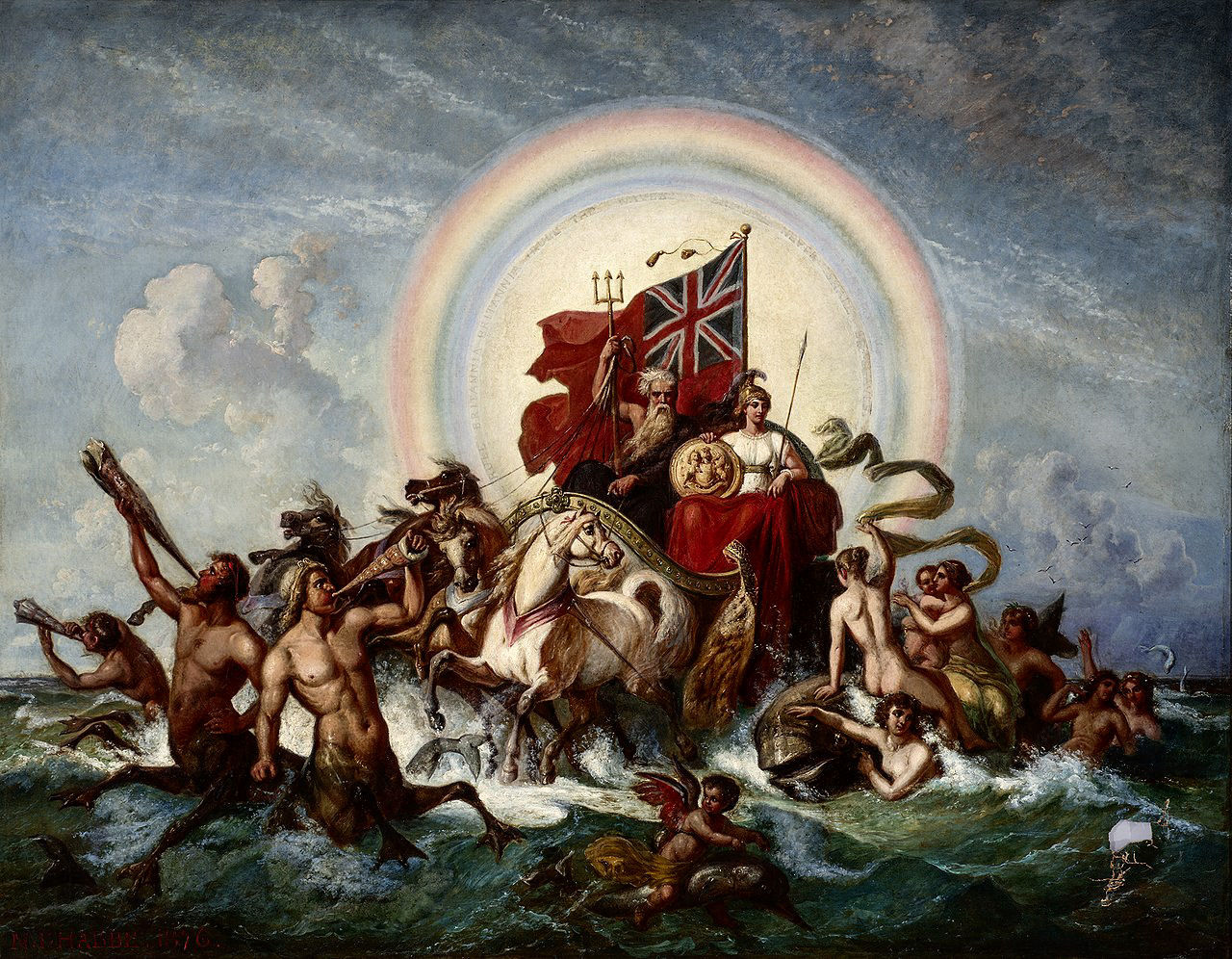
Britannia
Nicolai Habbe, Public domain
“Christianity has existed in Britain since the time of the Roman Empire when it spread across the British Isles over the process of many centuries. However, the coming of the Anglo-Saxons led to the extinguishing of Christianity in England and the resurgence of Germanic-inspired Anglo-Saxon paganism. It was not until the 7th century, and a papal mission sent by Gregory the Great, that the conversion of England began again. Through the baptism of monarchs and the establishment of royal hegemonies, the Christian faith spread throughout the elite of Anglo-Saxon England. Arguably, it was the work of missionaries that eventually ended Germanic paganism amongst the general populations of these Anglo-Saxon kingdoms.” Source
As we have seen, the above is all based upon totally false premisses. The facsimile Roman Empire didn’t spread Christianity during many centuries because it didn’t exist until after the cataclysm. There was no Anglo-Saxon invasion to blame paganism on, but it does highlight the ploy of targeting monarchs, local rulers and the ‘elite’ by the missionaries in order to force baptism upon their pagan subjects.
We are told that certain Saints struck out on their own, travelling to remote and unknown places in order to spread Christianity throughout the known world. St. Patrick is described as being Romano-British, although he is said to have been active during the 5th century – 500 years before Christ and the Romans were invented. Whilst a teenager, he was kidnapped and then fulfilled his heroic destiny in later life. This is in keeping with the ‘Celtic’ pagan tradition whereby future heroes would be kidnapped and taken to the Otherworld returning later to carry out their mission. Patrick’s mythological, even supernatural, accomplishments are covered in our ‘Quest for the Lost Realm of Faërie’ article. Sorry, I mean Patrick’s ‘Miracles’ because only supernatural sorcery-type events by nasty wicked pagans are mythological, when Christian Saints do it that’s always ‘miraculous’.
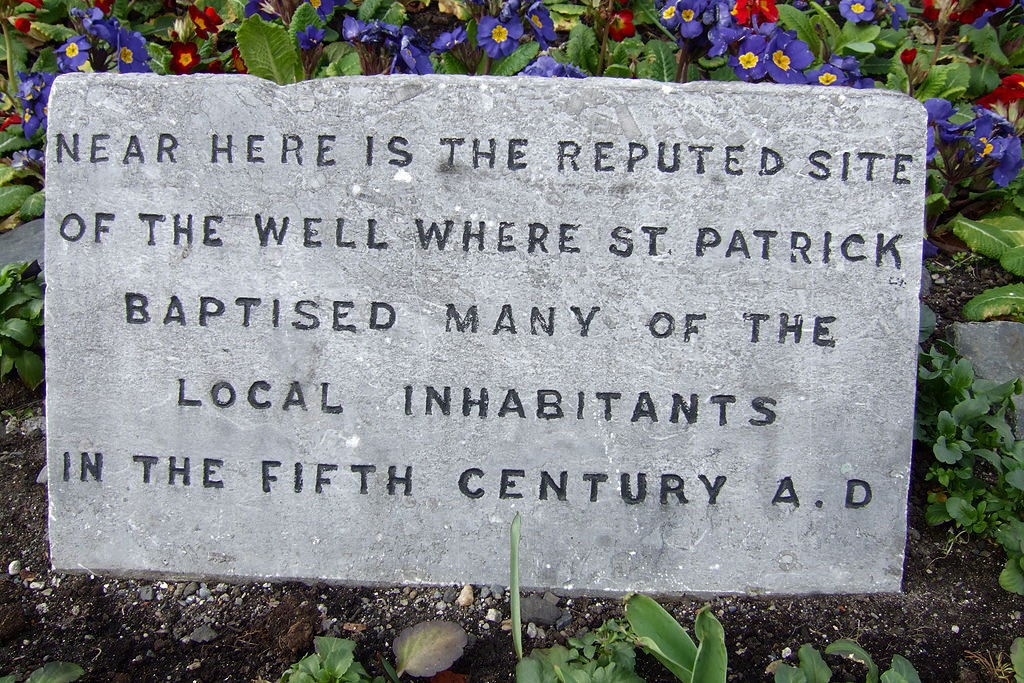
A reputed site of St. Patrick’s baptisms
Archaeomoonwalker, CC0
Incidentally, the name ‘Patrick’ has other meanings. For example, the area known as Battersea in South London was originally called ‘Patrickseye’, “...and on that little ea, eye, or eyot in the Thames at one time, probably, clustered the padres or paters who ministered to the church of St. Peter—the architypal Pater—whose shrine is now Westminster Abbey.” (‘Archaic England’, Harold Bayley, 1919.) So, the name Patrick is a derivative of ‘pater’ meaning father in Latin. Therefore, Patrick is more of a title than a name and obviously not English, Welsh, Scottish or Irish. It’s a Roman name, therefore Patrick was named according to Roman tradition in a Roman environment which dates him to the post-cataclysm period.
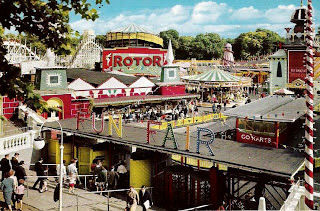
Battersea Park Festival Gardens Fun Fair, showing the Rotor ride I took my Grandma on in 1964. Source
Another case in point is St. Columba, possibly a previous incarnation of Christopher Columbus or Cristóbal Colón – the Christian coloniser (discussed in our article ‘A Quest for the Lost Realm of Faërie’. Chapter3.) Columba probably wasn’t his given name. In Gaelic it means ‘dove’ which is also the Latin meaning of the same word. This is weird because Gaelic is a ‘Celtic’ language while Latin is ‘Italic’… sorry ‘Italic’. His father was what they now call a semi-mythical figure who was one of the ancient High Kings of Ireland. His grandmother on his father’s side, was claimed to be Saxon, or at least Romano-British, which should put St. Columba well into the post-cataclysm period rather than the 6th century that the official narrative stipulates. After a thoroughly monastic education, or two, or three, St. Columba left Ireland. Some say he was exiled, but most prefer to call it a 'pilgrimage', although that implies a journey to an established sacred site. There are tales of some form of conflict which gained him the reputation of being a ‘warrior saint’. He left in a wicker currach which was covered with leather accompanied by 12 apostles, no sorry, 12 ‘companions’. That must have been some currach to hold 13 people with all their possessions and supplies. Once again we have the ‘One plus Twelve’ coven, which is the trademark of Christian interference.
This business of monks jumping into currachs and launching themselves into the sea to be taken wherever God willed, was quite a common theme for Christian fantasy adventures. The 'Navigation of St. Brendan' is one of the most proliferate of surviving medieval texts in this style. However, St. Columba was bound for the Isle of Iona. Iona is currently a small island 2km from a much bigger island called Mull on the west coast of Scotland. It was here that St. Columba chose to make himself accessible to the people of Scotland for the purpose of converting them to Christianity. A more inaccessible place is hard to imagine. We must not forget though, that during the pre-cataclysm period the sea level was lower and Iona was undoubtedly not an island then, so was St. Colomba actually around before the cataclysm? His lineage from a semi-mythical father certainly suggests that, more than most people, he should have had a strong ‘pagan’ inclination.

St. Columba’s Abbey on Iona, complete with ‘Celtic’ Solar Equinox Cross
Source
Of course there were ‘miracles’, one even includes an encounter with a ‘water beast’ on the banks of the river Ness. From that small island he converted the whole of Scotland and his monastery on Iona became the hub of an important network of monasteries. Today it is a site of pilgrimage.
Is the story of St. Colomba really the hijacked tradition of an Irish hero who helped out the original Cymric people of Scotland in some way? It would certainly fit with the suggestion in the official narrative that he was a ‘warrior’.
St. Brigid of Ireland can be dealt with quite quickly. She never existed, being a straight replacement for the pagan goddess Brigid, Brigit or Brig.
Ireland’s replacement gods; Patrick and Brigid
Andreas F. Borchert, CC BY-SA 3.0 DE
The existing pagan cultures and belief systems either had their traditional heroes hijacked and turned into saints or infiltrated by them who then proceeded to promoted not only themselves, but also Jesus Christ as a new divine hero to compete with the existing incarnate and carnate gods. The Virgin Mary (St. Brigid in Ireland) assumed the role of the mother goddess.
“The Celtic mairae, of which Rice Holmes [author ‘Ancient Britain’] observes that “no deities were nearer to the hearts of Celtic peasants,” were represented in groups of three; their aspect was that of gentle, serious, motherly women holding new-born infants in their hands, or bearing fruits and flowers in their laps; and many offerings were made to them by country folk in gratitude for their care of farm, and flock, and home.” Harold Bayley, ‘Archaic England’ (1919)
The Greek Moirae, or Fates, were also represented as either three austere maidens or as three aged hags. There are of course, famously, Three Marys in the New Testament: Mary the mother of Jesus; Mary the wife of Clopas, mother of James and Joseph, and also aunt to Jesus; then finally Mary Magdalene.
As to Saints in general...
‘“I am convinced,” says Wright, [Wright, T., Essays on Archæological Subjects, vol. 1 1861.] “that a large portion of the reliques of saints shown in the Middle Ages, were taken from the barrows or graves of the early population of the countries in which they were shown. It was well understood that those mounds were of a sepulchral character, and there were probably few of them which had not a legend attached. When the earlier Christian missionaries and the later monks of Western Europe wished to consecrate a site their imagination easily converted the tenant of the lonely mound into a primitive saint—the tumulus was ransacked and the bones were found—and the monastery or even a cathedral was erected over the site which had been consecrated by the mystics rites of an earlier age.” After purification by a special form of exorcism the pagan pictures were accepted into Christian service, the designs being construed into Christian doctrines far from the purpose of the things themselves.’ Harold Bayley, ‘Archaic England’ (1919)
The Welsh Mabinogi are claimed to be the earliest British prose stories. They were mistakenly named Mabinogion in the belief that it was the plural of Mabinogi. However, the word Mabinogi is already plural, which doesn’t really bode well for the accuracy of the translation. The official line is that they were compiled in Middle Welsh in the 12th–13th centuries ‘from earlier oral traditions’. Strangely though, the two main source manuscripts were created c. 1350–1410.
The Welsh Mabinogi are claimed to be the earliest British prose stories. They were mistakenly named Mabinogion in the belief that it was the plural of Mabinogi. However, the word Mabinogi is already plural, which doesn’t really bode well for the accuracy of the translation. The official line is that they were compiled in Middle Welsh in the 12th–13th centuries ‘from earlier oral traditions’. Strangely though, the two main source manuscripts were created c. 1350–1410.
The White Book of Rhydderch is one of the most notable and celebrated surviving manuscripts in Welsh. Mostly written in southwest Wales in the middle of the 14th century (c. 1350) it is the earliest collection of Welsh prose texts, though it also contains some examples of early Welsh poetry.
The Red Book of Hergest was written between about 1382 and 1410. It is possible that the manuscript was compiled for Hopcyn ap Tomas ab Einion (c. 1337 - c. 1408 ) who was a learned nobleman and patron of poets from Island Forgan and Island Dawe, off the Gower peninsula in South Wales.
The language of Middle Welsh was in use from the 12th century until the 14th century. The stories of the Four Branches of the Mabinogi are all claimed to be much older than the Middle Welsh language itself, which may indeed be the case. However, the mere fact that they are written in Middle Welsh indicates clearly that they have been reinterpreted from Old Welsh (either via dictation or from older texts) and copied at a much later date.
“The idea that Welsh was at least partly derived from Hebrew has been circulating for more than 400 years [WS: and is still going strong thanks to the likes of Wilson and Blackett]. Hundreds, possibly thousands of books and booklets have been written and published on the subject.” Source
“Two British journalists who were detained in Libya have revealed they were held because their captors confused a passage of Welsh written on their medical supplies for Hebrew, leading to suspicions they were spying for Israel.” Source
Of course, this concept is a firm favourite with the ‘Lost Tribes’ brigade and the old British Israelite movement, not to mention the Americans. I decided to test this theory for myself using the original Middle Welsh text of the poem ‘Preiddeu Annwfn’. I used Google to translate from Middle Welsh to Hebrew, then from the resulting text to English. I then compared this result with scholarly translations from Middle Welsh direct to English. Much of the Middle Welsh was untranslatable into Hebrew, but there were some matches, although very few.
Then I used the same procedure with Yiddish. This time the entire Middle Welsh text was transposed into Hebrew characters, rather than translated, into Yiddish, then displayed in both Hebrew and latin characters. I then translated the Hebrew characters into English. This time there were a significant number of matches when compared with the modern scholarly interpretations.
Google Translate detected the original raw Middle Welsh of ‘Preiddeu Annwfn’ as Modern Welsh, which I translated into English. Obviously, there has been almost a thousand years of development between the two, but I compared the result to modern, scholarly interpretations of the poem, without being too rigorous, and found that from a total of 426 words, 80 were a close enough match. That’s about 18.8%.
The translation from Yiddish to English was very similar to the one directly from Modern Welsh in terms of content and gave 101 close matches to the modern scholarly interpretations, which is 23,7%. Some of the translations provided by both the Welsh and the Yiddish even gave interesting alternatives to those of the modern scholars. These will be discussed in Part Three.
“Yiddish ...is a West Germanic language historically spoken by Ashkenazi Jews. It originated during the 9th century in Central Europe, providing the nascent Ashkenazi community with a vernacular based on High German fused with many elements taken from Hebrew (notably Mishnaic) and to some extent Aramaic. Most varieties of Yiddish include elements of Slavic languages and the vocabulary contains traces of Romance languages. Yiddish is primarily written in the Hebrew alphabet...
“The earliest surviving references date from the 12th century and call the language ..."language of Ashkenaz" or ...taytsh, a variant of tiutsch, the contemporary name for Middle High German.” Source
Apparently there are different dialects, one eastern European and one western European, but the western one “mostly died out in the 19th-century due to Jewish language assimilation into mainstream culture,”…eh!?? Source
Other claims for Yiddish include its use as a description of nationality by the “dispersed Khazars” who had been speaking Yiddish as their native tongue for 1000 years before they arrived in Germany. It’s claimed that the Khazars adapted words to their requirements from the German, the Slavonic and the Baltic languages, and that contrary to popular belief, the Yiddish language is not a German dialect and must not be confused with Hebrew either, just because they both use the same characters for their alphabets. There is not one word of Yiddish in ancient Hebrew nor is there one word of ancient Hebrew in Yiddish Source: ‘The Rise of The Khazars’
We will be examining the Khazars later… maybe
It’s perfectly reasonable and logical to assume that any Jews living in northern Europe, at any time, would be forced to use the same language as the locals in order to communicate with them. Being Jewish and therefore wishing to stamp their own identity on everything (and probably wishing to keep their written communications secret from non-Jews) they wrote the local language down in the Hebrew alphabet and called it Yiddish, because they were known as ‘The Yiddish’ (from Middle High German jüdisch.) Source
One salient point about all of this Welsh = Hebrew debate is that the vast majority of those arguing in its favour really want it to be true, for whatever reason. It never occurs to them that it may in fact be totally the opposite – that Hebrew comes from Welsh. Furthermore, the fact that Hebrew had no characters representing vowel sounds before the 10th century and that it is written from right to left, are largely ignored or involve some astonishing feats of linguistic gymnastics.
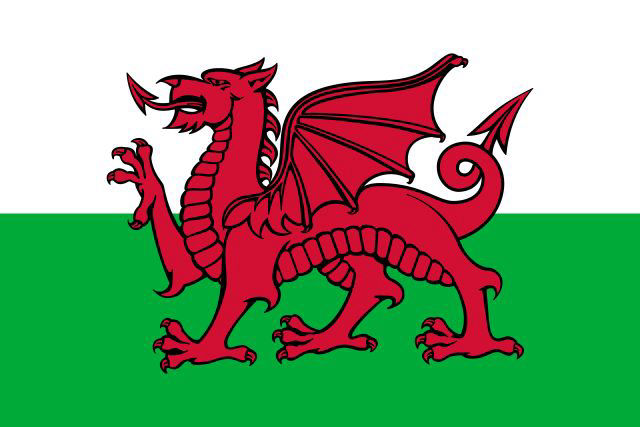
Public domain
So who then, were the people who lived in Wales and possibly spoke and wrote a language like Yiddish, but in Romanised script and who were around at the same time as the Anglo-Saxons and then again with the Normans? We’re supposed to believe that they were the indigenous Celts or Britons who ran away screaming to the west from the invading Germanic tribes arriving from the south-east and east. Were they Jewish?
Making any sense of the official language situation in northern Europe during the 9th to 12th century period is university course in itself. There’s Old German, Low Saxon, Middle High Soundshifted Dutch, etc., etc. It’s a total nonsense.
“In all these cases [Christianisation of the Germanic peoples], the Germanic conquerors lost their native languages. In the remaining parts of the Germanic world, that is, to the North and East of France, the Germanic languages were maintained, but the syntax, the conceptual framework underlying the lexicon, and most of the literary forms were thoroughly latinized" Source: ‘Rome and the Early Germans: Some Sociolinguistic Observations’ by H. Roe.
A major factor in this apparent loss of languages, and the tribes that spoke them and the confusion in general, has to be the cataclysm. The speakers of these languages probably died out or else became so few that the survivors had to adapt to common languages or new ones.
It’s not unreasonable to assume that many post-cataclysm Saxons preferred to emigrate to Britain than to remain and face almost constant onslaughts by Charlemagne and forced conversion. It seems that Britain may have been more tolerant or perhaps less fanatical, or even pretty much empty and let’s not forget, it didn’t involve crossing the English Channel until after the cataclysm.
“The Anglo-Saxons were a cultural group who inhabited England in the Early Middle Ages. They traced their origins to settlers who came to Britain from mainland Europe in the 5th century. However, the ethnogenesis [emergence as a distinctive race] of the Anglo-Saxons happened within Britain, and the identity was not merely imported. Anglo-Saxon identity arose from interaction between incoming groups from several Germanic tribes, both amongst themselves, and with indigenous Britons. Many of the natives, over time, adopted Anglo-Saxon culture and language and were assimilated [“Resistance is Futile!”]. The Anglo-Saxons established the concept, and the Kingdom, of England, and though the modern English language owes somewhat less than 26% of its words to their language, this includes the vast majority of words used in everyday speech. [WS: Eh? We only use somewhat less than 26% of English words in everyday speech and they all just happen to be Anglo-Saxon?]…
“...During this period, Christianity was established and there was a flowering of literature and language. Charters and law were also established. The term Anglo-Saxon is popularly used for the language that was spoken and written by the Anglo-Saxons in England and southeastern Scotland from at least the mid-5th century until the mid-12th century. In scholarly use, it is more commonly called Old English...
“The history of the Anglo-Saxons is the history of a cultural identity.” Source
But it’s a fake history and a manufactured cultural identity intended to obliterate, denigrate and dominate what was there before – The Kingdom of Albion.
The images above are just a small selection of what are laughably called ‘Anglo-Saxon Crosses’ and found in a great many churches throughout Britain. They are clearly not crosses at all, but sacred pillars or totems just like the Irminsul of the Germanic Saxons that was destroyed by Charlemagne as discussed earlier. (All images are Public domain.)
Any examination of the so-called ‘Saxon Shore’ is guaranteed to leave one with the impression that nobody really knows what its purpose was, who built it, when it was built or what real difference it made to anything. Some claim it’s all part of the Anglo-Saxon invasion scenario, but of course, that didn’t really happen in the way we’ve been led to believe. The term refers to various fortifications along the south coast of Britain and the north coast of Brittany, Normandy, France and Belgium. Apparently, the facsimile Romans believed that these fortifications, along with Hadrian’s Wall and the Antonine ...ditch in the north, would protect Britain from raiding barbarians, who were either too stupid to sail around to the east and west coasts or to realise that Britain and Ireland were not islands and you could walk there. Furthermore, even the facsimile Romans never gained a foothold in Brittany which is a curiosity we may be delving into later... if we remember.

The Late Roman fortifications of the “Saxon Shore”
(litus Saxonicum) in Britain and northern France.
Constantine Plakidas, Public domain
The name, ‘Saxon Shore’, comes from one single mention in one single document, the Notitia Dignitatum, however, “the text itself is not dated (nor is its author named), and omissions complicate ascertaining its date from its content.” Source
So, nobody knows if it means ‘the shore against the Saxons’ or ‘the shore settled by the Saxons’ or if it’s all just a forgery. According to archaeological finds, “artefacts of a Germanic style have been found in burials, while there is evidence of the presence of Saxons (mostly laeti Roman army recruits though) in some numbers in SE England and the northern coasts of Gaul around Boulogne-sur-Mer and Bayeux from the middle of the 5th century onwards. This, in turn, mirrors a well documented practice of deliberately settling Germanic tribes ...to strengthen Roman defences.” Source
By the way, the tower of Odre supposedly built by Caligula in the year 40 AD, was at Boulogne-sur-Mer, as recounted by Fulcanelli in an earlier quote. It’s purpose was to fool future generations into believing that he (Caligula) invaded Britain. It seems it became a popular place for similar constructions designed to fool people into believing that the Anglo-Saxons invaded Britain as well. Bayeaux is also the location of a famous tapestry designed to fool future generations into believing that the Normans were victorious at the imaginary battle of Hastings.
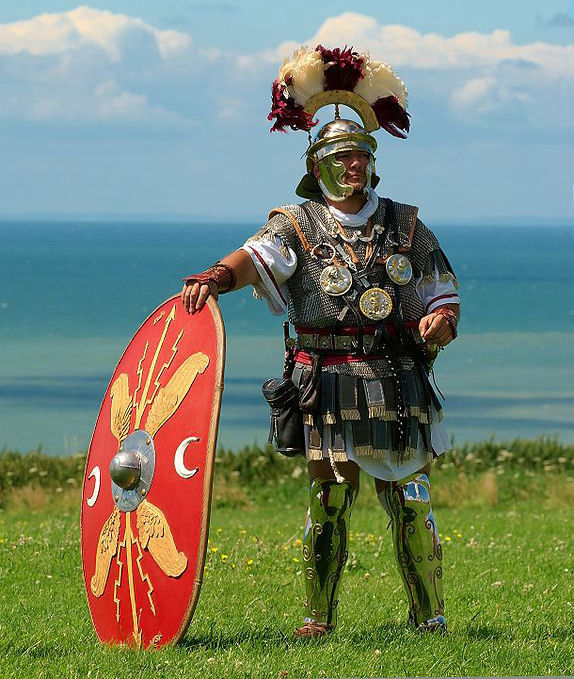
“Historical reenactor in Roman centurion costume at Boulogne-sur-Mer.”
This file was a candidate in Picture of the Year 2007. This is a featured picture on Wikimedia Commons and is considered one of the finest. (You really shouldn’t laugh...)
I, Luc Viatour, CC BY-SA 3.0
So, now we have the usual problem. The historians only listen to whichever archaeological evidence suits their Bayesian Chronology.
“Nevertheless, the earliest [mainstream official] evidence for widespread Saxon settlement in Britain typically dates to the 5th century, significantly later than the channel defenses of the late 3rd and 4th century associated with the Saxon Shore.” (ibid.)
There really is no need to qualify the presence of Saxons “in some numbers in SE England” as “Roman army recruits.” The Saxons were present in Britain alongside the Celts and anyone else – except the facsimile Romans!
A rose by any other name…
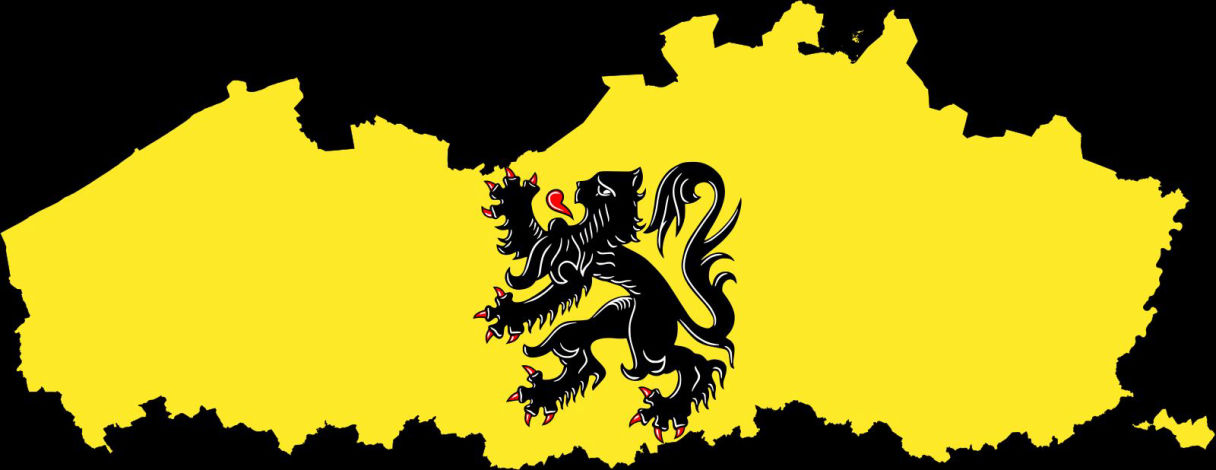
Flanders
Kamran.nef, CC BY-SA 4.0
Felix and I first encountered the Flemings during research for the ‘Betrayal of Albion’ series and then again during the ‘Quest for the Lost Realm of Faërie’ articles. They are the inhabitants of Flanders, which is now in Belgium and a bit of the Netherlands as well, I think. However, at the time we are interested in, they were not identified as a specific Flemish race, they were simply ‘Germanic peoples’ and Flanders was much bigger than it is now incorporating the adjoining areas of France, Belgium and the Netherlands. The terms Fleming / Flemish are not known in written documents until the 14th century. They are apparently closely related to the Dutch and the Walloons. The latter name of Walloon was derived from ‘walha’, a Proto-Germanic term used to refer to Celtic and Latin speakers and having the distinction of being the northern-most ‘Romance’ language or so we are told. In fact, “During the 15th century, scribes in the region called the language ‘Roman’ when they needed to distinguish it. It is not until the beginning of the 16th century that the first occurrence of the word "Walloon" appeared in the current linguistic sense.” (Source) therefore a ‘Romance language’ is simply a mixture of whatever the local language was with some Latin words thrown in, but they don’t seem to be referred to until the 15th century, so they were nothing to do with the facsimile pre-cataclysm Romans.
Walha, or the native Walon and especially the Dutch “Waals”, actually sound not dissimilar to “Wales.” However, the Flemings have their own specific language, or dialect of Dutch, known as Flemish. They classify Dutch as a West Germanic language… like Yiddish. So, it’s quite clear that the terms Dutch, Walloon, Fleming and Yiddish are not racial denominations, but local dialects of people living in the same general area – the ‘Germanic’ people. It was no doubt called ‘Roman’ or ‘Romance’ by those pesky scribes because it served to validate the facsimile Roman Empire.
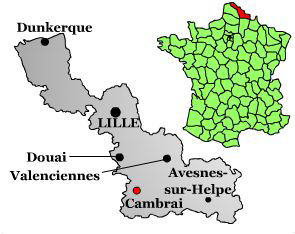
Public domain
In this same geographic area of Flanders, Belgium and France, we find the town of Cambrai or Cambresis in Latin, where they also spoke the same ‘Roman’ as the Walloons. Cambria is claimed to be the ‘Romanised’ name of Wales. ‘Cambrensis’ means ‘of Wales’ or ‘Welsh’. The etymology of the name ‘Wales’ is, of course, complicated – it has to be that way in order to cover up what’s really going on. Actually Wikiperdida has a completely separate page on the subject which has an additional explanation not found on the ‘Etymology’ entry of their page for Wales.
I don’t want to drag all that confusing and contradictory information up here. However, the salient points are as follows: the Saxons that settled in Britain for whatever reason and under whatever circumstances, allegedly used the term ‘Walhaz’ (which we have just seen a couple of paragraphs back without the ‘z’) to refer to the Britons. The plural form ‘Wēalas’ evolved into ‘Wales’ so they say. Although they also say that the same words were used to describe other areas of Britain where the oh-so-generous Anglo-Saxons had not annihilated all the British, which included, Cornwall, Walworth in County Durham and Walton in West Yorkshire. In fact they have another page listing locations in the UK whose names begin with Wa or Wal, there are hundreds all over the country.

Cambrai coat of arms (recent.)
Van Olm, CC BY-SA 4.0
Furthermore, this same etymology is offered to account for Wallonia (Belgium, Flanders, Holland,) Wallachia (Romania,) Valais (Switzerland,) Vlachs (southern Albania, Bulgaria, northern Greece, North Macedonia, and eastern Serbia,) the German Welsch (as a surname,) and Włochy (the Polish name for Italy.) The term is still used in modern colloquial English when referring to an unidentified person, i.e. “I don’t know who he was, some Wallah I suppose.” Warning: if you look that up on the internet you will not find it, instead you will see it given as a misspronunciation of the French "voilà" or an Arabic / Indian word.
“Welsh (adj.) Old English Wielisc, Wylisc (West Saxon), Welisc, Wælisc (Anglian and Kentish) "foreign; British (not Anglo-Saxon), Welsh; not free, servile," from Wealh, Walh "Celt, Briton, Welshman, non-Germanic foreigner." Source
This modern definition above, is obviously intended to promote and prolong the myth of the Anglo-Saxon invasion and domination of the ancient Britons and other non-Germanic tribes. It indicates that the term ‘Welsh’ means ‘foreign slave’…nobody would call themselves that so it’s either a name given by others or the etymology is false. ‘Wallah’ was also used in exactly the same way by the later Roman Judeo-British Empire as a name for Indian slaves.
“...also applied in Germanic languages to speakers of Latin, hence Old High German Walh, Walah ‘Celt, Roman, Gaulish,’ and Old Norse Val-land ‘France’, Valir ‘Gauls, non-Germanic inhabitants of France’ (Danish vælsk ‘Italian, French, southern’); from Proto-Germanic *Walkhiskaz, from a Celtic tribal name represented by Latin Volcæ (Caesar) "ancient Celtic tribe in southern Gaul." (ibid.)
So, it wasn’t only used as a descriptive name for British slaves, but also Romans, Gauls, Italians, non-Germanic French and southerners in general. Just about everyone in fact! Although, not the Jews it would seem.
“[Welsh] as a noun, ‘the Britons,’ also ‘the Welsh language,’ both from Old English. The word survives in Wales, Cornwall, Walloon, walnut, and in surnames Walsh and Wallace. Borrowed in Old Church Slavonic as vlachu, and applied to the Rumanians, hence Wallachia. Among the English, Welsh was used disparagingly of inferior or substitute things (such as Welsh cricket ‘louse’ (1590s); Welsh comb ‘thumb and four fingers’ (1796), and compare welch (v.)). Welsh rabbit is from 1725, also perverted by folk-etymology as Welsh rarebit (1785).” Source
What happened in the Old Church Slavonic speaking areas? Did they run out of their own words? Even if they did, why borrow from Old English? All this sounds crazy. It’s like defamation on an incredible scale that today would be called racial abuse. It's sad to admit that the English have been using this stereotyping of their own ancestors for centuries.
“The north-west of Europe, in spite of its underlying differences of linguistic heritage – Goidelic, Brittonic, Gallic; its varieties of Germanic; and the powerful intrusion of spoken Latin – is as it were a single philological province, a region so interconnected in race, culture, history, and linguistic fusions that its departmental philologies cannot flourish in isolation.” Source ‘English and Welsh,’ J. R. R. Tolkien, O'Donnell Memorial Lecture, 21st October 1955.
And there you have it underlying all of the enforced compartmentalisation – The Lost Kingdom of Albion.
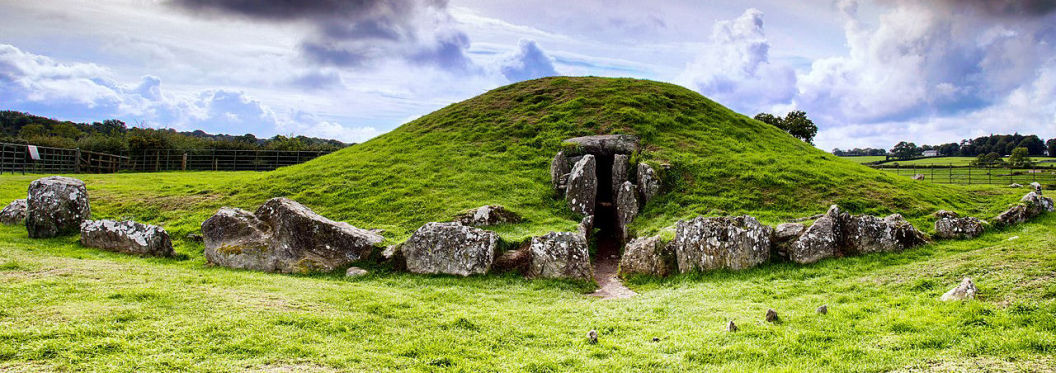
Bryn Celli Ddu (The Mound in the Dark Grove,) Island of Anglesey, Wales
Sterim64, CC BY-SA 4.0
Then we have the modern Welsh name of Cymry, and Cymru. This pair are said to have come from the Brythonic word ‘combrogi’, meaning "fellow-countrymen," exactly the opposite of “foreigner.” For me personally, the jump from combrogi to Cymry is just too ridiculous. This, they claim, is what the fleeing Britons called themselves when they took shelter from the rampant Anglo-Saxons in modern Wales, Cornwall, northern England and southern Scotland after the naughty facsimile Romans had abandoned them.
However, the ‘romanised’ form of Cymry and Cymru – Cambrian, Cambric and Cambria are still in use today even though the facsimile Romans had supposedly been long gone by the time the word ‘Cymry’ was first used, I mean, you can’t have it both ways, so maybe it was named that way by the Norman Romans. Cumbria in North West England is the northern area settled by the terrified Britons or ‘combrogi’, "fellow-countrymen," and known as ‘Hen Ogledd’ or the ‘Old North’. However, that must have been a name given much later, obviously, as the inhabitants would never have called themselves the ‘Old Northerners’. They spoke the same language as the Welsh, had strong dynastic links and shared the same culture through common literature.
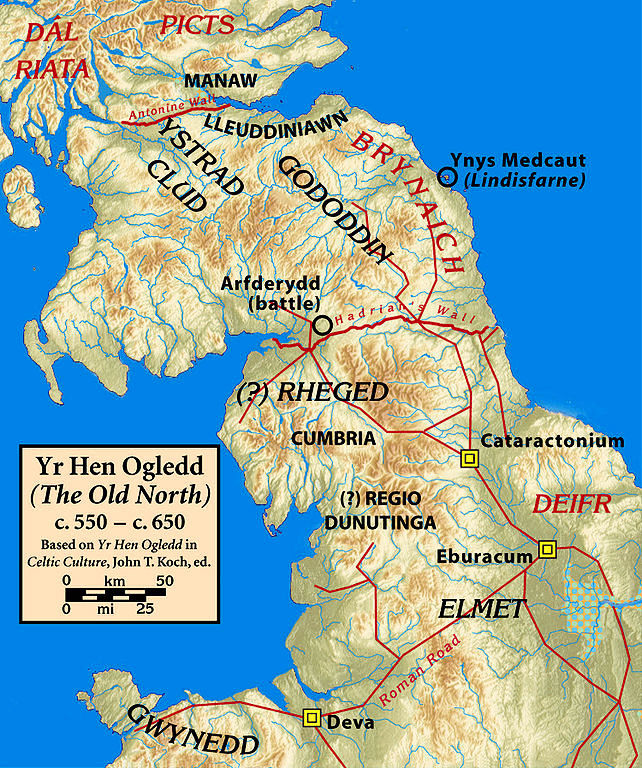
'myself' CC BY-SA 3.0
“All the kingdoms of the Hen Ogledd except Strathclyde were conquered by Anglo-Saxons and Picts by about 800; Strathclyde was incorporated into the rising Middle Irish-speaking Kingdom of Scotland in the 11th century.” Source
And now the Picts get in on the act as well, not to mention that Scotland is Irish!
“It was noted in the writings of Ammianus Marcellinus and others that there was ever-decreasing Roman control from about AD 100 onward, and in the years after 360 there was widespread disorder and the large-scale permanent abandonment of territory [Hen Ogledd] by the Romans.” Source (ibid.)
The imaginary Roman occupation of Britain never happened and neither did the Anglo-Saxon invasion, therefore any “widespread disorder and large-scale permanent abandonment” were the result of the 10th century cataclysm and nothing whatsoever to do with the Romans leaving, but they have to keep this fiction going at all costs and reinforce the Anglo-Saxon domination aspect and the annihilation of the abandoned, helpless, useless, defenceless Britons.
There is a group of islands in the Firth of Clyde, Scotland, called The Cumbraes. “The Gaelic name [for Cumbrae] Cumaradh means "place of the Cymric people", referring to the Brittonic-speaking inhabitants of the Kingdom of Strathclyde.” Source

The Cumbraes – place of the Cymric people
Neil McDermott CC BY-SA 3.0
According to the official narrative the Kingdom of Strathclyde became a prominent stronghold of the Britons after the Romans had abandoned the country, but was later overrun by the Anglo-Saxons… or was it the Danes or the Vikings… maybe it was the Scots ...no wait, it was the Tasmanians!

The last remaining Standing Stone on Cumbrae.
Lis Burke CC BY-SA 2.0
“Cumbrae has long been linked to Christianity in Scotland. At one time the island had many standing stones.” Source (ibid.) Of course, standing stones are a sure sign of Christianity!?* In exactly the same way as St. Patrick banished all the snakes from Ireland (even though there were no snakes in Ireland to begin with), another Saint, who’s name escapes me, did exactly the same thing on the island of Great Cumbrae, which was also:
“referred to as the Kumreyiar in the Norse Saga of Haakon Haakonarson." Source
"...[Footnote 76: Kumr-eyiar (orig.), i.e. the Islands of the Cumbrians, two small islands to the West of Scotland.]" Source: Saga of Haakon Haakonarson or The Norwegian Account of Haco's Expedition against Scotland’ Literally translated from the original Islandic of the Flateyan and Frisian MSS with notes. by the Rev. James Johnstone, A. M. Chaplain to his Britannic Majesty's envoy extraordinary at the court of Denmark. 1782.
The Islands of Cumbrae and the northern border of the Kingdom of Stratchclyde coincide with the Antonine Wall. Hadrian’s Wall is 160 kms further south and runs through the middle of Hen Ogledd or the ‘Old North’. This means that the entire area between both apparently Roman built ‘walls’ – i.e. north of Hadrian’s Wall, was the “place of the Cymric people", the Britons / Welsh along with the rest of Hen Ogledd that covered a huge area to the south. The official stories behind the purpose and construction of these walls make absolutely no sense. Then we’re supposed to believe that the Anglo-Saxons overran the entire area (except Strathclyde) after the Romans left in the 5th century – which they didn’t because they were never there to begin with.
Well this is quite clearly utter nonsense. I remember watching a TV documentary many years ago now, back in the 1990’s I think, where someone stated that the terms ‘Celt’ and ‘Celtic’ did not refer to a tribe of people, but were ‘Roman’ epithets applied to anyone who was of a different culture. At the time that made a lot of sense to me and even more so now – apart from the Roman part. It’s far more likely that the indigenous inhabitants of The Kingdom of Albion called themselves Walhaz, or Welsh, or Cymri and that includes the Anglo-Saxons, the Picts etc.

A section of Hadrian’s Wall taken from the southern side looking west and showing the remains of the ditch built to protect the constructors of the wall against attacks from the south.
quisnovus from Gloucester, England CC BY 2.0
In Part One we showed that the Antonine Wall and Hadrian’s Wall were nothing to do with the Romans defending themselves from the barbaric wild men of the north, but were actually built by people of the north who were defending themselves from someone or something coming from the south. So were these original northern defenders actually those same Cymri / Kymri ‘wallahs’?
Before moving on, it’s worth taking a look at one of our other pre-programmed assumptions – the Romance Languages. We have already seen how some of the languages under consideration were referred to as ‘Roman’, but was there ever a Roman Language apart from Latin? Were the major Romance Languages of French, Italian, Spanish, Portuguese, and Romanian really all descended from Vulgar Latin? Well, today it’s taken for granted, but it wasn’t always so cut and dried...
"In 1872", wrote J.L. Dartois, "Granier de Cassagnac, in a marvelously erudite and pleasantly styled work entitled: History of the Origins of the French Language, pointed out the inanity of the neo-Latinism thesis which pretends to prove that French is evolved Latin. He showed that it was not defensible and that it shocked history, logic, and common sense, and that, finally, our idiom refused it ". A few years later, M. Hins in turn proved in a very well documented study published in the Review of Linguistics that all the works of Neo-Latinism only allowed us to conclude a kinship with it, not a direct connection with the so-called Neo-Latin languages. Finally, Monsieur J. Lefebvre in two remarkable and much read articles published in June 1982 in The New Review, demolished the Neo-Latinism thesis from beginning to end by proving that Abbot Espagnolle in his book The Origin of French was indeed right; that our language, as the greatest scholar of the 16th century had guessed, was Greek; that Roman domination in Gaul had only covered our language with a thin layer of Latin, in no way altering its genius". The author further adds: "If we ask Neo-Latinism to explain how the Gallic people, which counted at least seven million inhabitants, could forget their national language and learn another one, or rather change the Latin language into the Gallic language which is more difficult; how the Roman legionaries, who themselves for the most part did not speak Latin and were stationed in fortified camps separated from each other by vast spaces, were nevertheless able to become the teachers of the Gaulish tribes and teach them the language of Rome, that is to say, to accomplish among the Gauls alone a miracle that the other Roman legions were not able to accomplish anywhere else, neither in Asia, nor in Greece, nor in the British Isles; how, finally, the Basques and the Bretons succeeded in maintaining their languages while their neighbors, the inhabitants of Bearn, Maine and Anjou lost theirs and were forced to speak Latin. What would Neo-Latinism tell us?". This objection is so serious that it is Gaston Paris, the head of the School of Neo-Latinism, who is charged with answering it. "We Neo-Latins", he says in substance, "are not obliged to resolve the difficulties that logic and history may raise; we are only concerned with the philological fact and this fact dominates the question, since it proves, alone, the Latin origin of French, Italian, and Spanish"... "Assuredly", answers Monsieur J. Lefebvre, "the philological fact would be decisive if it were properly established, but it is not so at all. With all the possible subtleties of the world Neo-Latinism in fact only succeeds to observe this very banal truth, that there is a great quantity of Latin words in our language. This has never been contested by anyone...
"...As for the philological fact invoked but in no way proven by Gaston Paris, in order to attempt to justify his thesis, J.L. Dartois shows its lack of existence based upon the works of Petit-Radel. "To the pretended Latin philological fact", he writes, "we can oppose the evident Greek philological fact. This new philological fact, the only true one, the only demonstrable one, has a capital significance, since it proves without doubt that the tribes which came to people Western Europe were Pelagian colonies, and it confirms the beautiful discovery of Petit-Radel. We know that the modest, humble scholar read in 1802 before the Institute a remarkable work in order to prove that the polyhedral block monuments which are found in Greece, Italy, and France, and even in the heart of Spain and which were attributed to the Cyclops, are the work of the Pelagians. This demonstration convinced the Institute and no doubt has been raised since about the origin of these monuments. The language of the Pelagians was archaic Greek, above all made up of the Aeolian and Doric dialects, and it is exactly this form of Greek which is found everywhere in France, even in Parisian slang (Argot d’Paris)".
The above collection of quotations comes from ‘The Dwellings of the Philosophers’ by Fulcanelli. If we accept that these old arguments are all based upon old research and therefore have had much less time to be buried and obscured by modern Bayesian ‘historians’, then archaic Greek was the common language of Europe long before Latin came along. This notion fits well with the ‘Homer in the Baltic’ and ‘Where Troy Once Stood’ material discussed earlier and during previous parts of this series.
If you want to know who the Pelagians were then you might be better off reading Fulcanelli’s book, because Wikipedia & Co, have them down as heretics:
“Pelagianism, also called Pelagian heresy, a 5th-century Christian heresy taught by Pelagius and his followers that stressed the essential goodness of human nature and the freedom of the human will.” Source
Pelagius (c. 355 - c. 420 AD), was apparently an ascetic and philosopher from the British Isles and with ideas like that no wonder he was condemned by the Church and then disappeared forever. In fact Wikiperdida has him down as ‘Romano-British’. However, there’s the Pelasgians - note the ‘S’ in the middle…
“The name Pelasgians (Ancient Greek: Πελασγοί, Pelasgoí, singular: Πελασγός, Pelasgós) was used by classical Greek writers to refer either to the predecessors of the Greeks, or to all the inhabitants of Greece before the emergence of the Greeks. In general, "Pelasgian" has come to mean more broadly all the indigenous inhabitants of the Aegean Sea region and their cultures, "a hold-all term for any ancient, primitive and presumably indigenous people in the Greek world". Source
So, with the addition of an ‘S’ they have rendered the word totally useless and redundant because it could easily be replaced with “primitive natives” or “some ancient people.” Job done, move along, nothing to see here.
Ordinarily, we don’t put much faith in DNA studies, especially more recent ones that are clearly biased by the Bayesian Process. However, there was one study in 2014 that proved to be incredibly interesting:
“We were all taught in school that the English were descended from the Angles, Saxons, and Jutes who invaded Britain in the fourth and fifth centuries, bringing their lowland German language with them. That now appears to be one of the greatest historical mistakes of the early Middle Ages...
“The English themselves first made the mistake in the sixth century, writing in their histories that the invading Germans wiped out or drove off the native Britons, a somewhat Romanized Celtic-speaking people who retreated to the wilds of Scotland, Wales, Cornwall, and Brittany. Since then the mistake has been handed down without question to the present day.” Source
How sweet that the author blames the 6th century English themselves for being so stupid as to mistakenly record that they were driven away to the extremities of Britain by invading Germans. What reason on earth could they possibly have had for doing that?
The article goes on to explain that DNA testing of local Somerset families shows their uninterrupted descent from Cheddar Man across 9,000 years. The loss of the speculated indigenous Brythonic language was therefore not due to any massive invasion of Anglo-Saxons or even Romans:
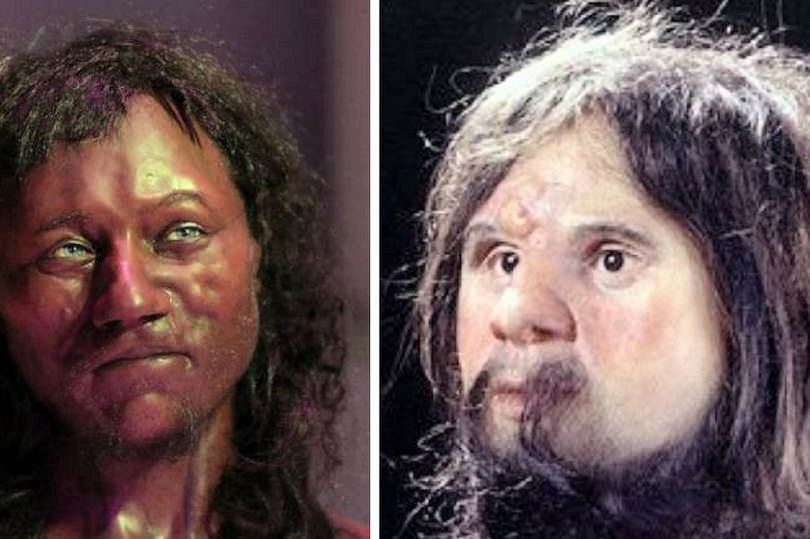
The Cheddar Men: left a modern hoaxed reconstruction faked to support the immigration agenda; right an earlier reconstruction. Source
“It is possible for conquering elites like the Anglo-Saxons to teach their tongue to conquered locals, but it is virtually impossible for conquering elites to stop the locals from speaking their own tongue. Why? Because language is learned in the home, in the most intimate of settings, out of the reach of the powers that be…
“...It seems now likely that the process of teaching Britons the Germanic language that became English began much, much earlier, well before the arrival of the Angles and Saxons in the fourth and fifth centuries, and even well before the arrival of the Romans in the first.” (ibid.)
Perhaps because during those early times they were all part of The Kingdom of Albion. This information is based upon a study by Geneticist Stephen Oppenheimer (there’s an explosive name), published in the British magazine ‘Prospect’. Naturally, he attempts to dovetail his findings in with the accepted narrative about Celts and all the other invaders and reinforces the Basque origins of the first post Ice Age settlers referred to above. However, he does also mention this:
“Oppenheimer says some researchers suggest English might represent a fourth branch of Germanic language evolving simultaneously with West Germanic (Dutch, Low German, High German, Frisian, Afrikaans) and North Germanic (Norwegian, Danish, Swedish, Icelandic, Faroese).” (ibid.)
There we have it again, The Lost Kingdom of King Arthur – Albion with all the people speaking various branches of the same language.
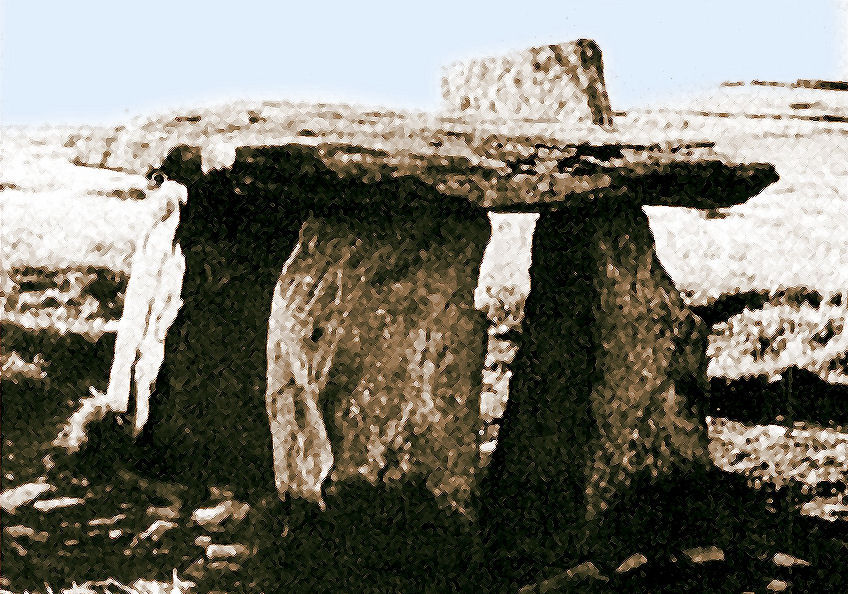
Dolmen, Orkney Islands
Source
Another DNA study in 2015 funded by The Wellcome Trust, which is part of the People of the British Isles Research Project, is still up on the BBC’s website (can you believe…)
“A DNA study of Britons has shown that genetically there is not a unique Celtic group of people in the UK… According to the data, those of Celtic ancestry in Scotland and Cornwall are more similar to the English than they are to other Celtic groups… The study also describes distinct genetic differences across the UK, which reflect regional identities...
“...And it shows that the invading Anglo Saxons did not wipe out the Britons of 1,500 years ago, but mixed with them...
“...The finding is the first genetic evidence to confirm what some archaeologists have long been arguing: that Celts represent a tradition or culture rather than a genetic or racial grouping...
“...The new analysis shows a modest level of Saxon DNA, suggesting that the native British populations lived alongside each other and intermingled with the Anglo Saxons to become the English…
“...And in Orkney, the study finds clear evidence of Norwegian DNA, as might be expected from the Viking settlement of the Islands. Interestingly, it persists at fairly low levels, suggesting that the Vikings and the existing populations coexisted and intermingled more than people had expected - in the way that occurred with the Anglo Saxons…
“...Likewise, the Norman conquest of England did not leave any genetic evidence.” Source
OK, I know I said we don’t think much of DNA studies, but bloody hell, how can you ignore that?
Regarding the claim made by a great many DNA studies, both new and not so new, that the English, Welsh, Scottish, Irish, Bretons and people of the northern coast of Spain are all descended from the Basques, well, maybe it’s the other way around. If all of these people originally came from the north, then the Basques and the people of northern Spain were obviously the ones who ventured furthest afield. The thing is though the Basques specifically inhabited the isolated and remote areas of the Pyrenees and therefore preserved their original DNA in a much more original state than their fellow emigrants from the north. This could be why DNA tests make it look as if all these people originated in the Basque country of the Pyrenees when in fact it’s the other way around. It could also explain why they preserved their unique language - perhaps it's the original language of the people of the North?

Dolmen at Tella, Huesca, Aragon Pyrenees
Carlos Buetas, CC BY 2.0
It’s during the post-cataclysm period that The Abrahamic religions produced all of the manuscripts that would form the basis of their religions. I am aware that there are almost constant discoveries of religious texts that claim to push the date of their creation further and further back in time, but with today’s widespread adoption of the Bayesian Statistical model in everything from radiocarbon dating to pandemics it’s not surprising in the least.
"No material is available which can be proven with any certainty as belonging to the first centuries of this period. The oldest manuscripts of the period date from the end of the ninth century. Information has been published on a biblical manuscript in St. Petersburg dated to 846. On the other hand, some of the fragments found in the Cairo Genizah [estimated at 500 B.C.E.– 500 C.E. and to be discussed later] belong, without doubt, to the beginning of this period.” Source
The oldest dated biblical manuscripts are:
The oldest dated manuscripts of the Mishnah (the first written copy of the Oral Torah) come from the province of Cesena, Italy and were written between 1399 and 1401. The only manuscript of the Jerusalem Talmud was written in 1299. There is also only one complete extant manuscript of the Babylonian Talmud which was written in 1342, probably in France.
Then there’s the Septuagint, or Greek translation of the Hebrew Bible or Tanakh. The Jews have a legend about its creation, but historians claim it was sourced from manuscripts of the Hellenistic period (323 BC – 31 BC) which, as stated above, didn’t exist until the 9th century, or at least the copies available now didn’t exist until then. However...
"The oldest more or less complete copies of the [Greek] Bible are the manuscripts of Alexandria, Vatican, and Mt. Sinai... All three manuscripts are dated [palaeographically; that is, with such an ephemeral concept as handwriting style used as a basis - A. F.] to the second half of the IV century a.d. The codex language is Greek... The least is known about the Vatican codex - nobody knows how the artefact manifested in Vatican around 1475... The Alexandrian codex is known to have been given to the English king Charles I by the Patriarch Cyril Lucaris in 1628…" The codex of Mt. Sinai was only discovered in the XIX century by K. Tischendorf. So, the three oldest codices of the Bible only surface after the XV century a.d. The reputation of their antiquity was created by the authority of K. Tischendorf, who had based his research on the style of handwriting. However, the very idea of palaeographical dating apparently implies the existence of a known global chronology of other documents and thus cannot be regarded as an independent dating method in any way. What we know for certain is that the history of these documents can be traced as far back as 1475 a.d.; in other words, no other more or less complete "ancient" Greek Bibles exist.” Source: Kryvelev, I. A. The Excavations in the "Biblical" Countries. Moscow, Sovietskaya Rossia, 1965.
The Septuagint is also known as the Greek Old Testament or ‘The Translation of the Seventy’. The latter name derives from a supposedly 2nd to 3rd century BC letter of Aristeas to Philocrates, which even some Biblical scholars consider to be of a much more modern authenticity and attributed to a figure of the ancient past…
“The story recorded in the Letter of Aristeas to Philocrates [claims] that ‘the laws of the Jews’ were translated into the Greek language at the request of Ptolemy II Philadelphus (285–247 BCE) by seventy-two Hebrew translators—six from each of the Twelve Tribes of Israel.” Source: ‘Aristeas of Marmora’, 1904, by St. John Thackeray.
This Ptolemy II was the son of the Macedonian Greek general of Alexander the Great who founded the Ptolemaic Kingdom after Alexander’s death. However, as we have seen in Part Two, there was no Ptolemaic Kingdom after Alexander / Sekandar’s death, as it’s completely missing from the Iranian National History as recorded by Ferdowsi in the ‘Shahnameh’.
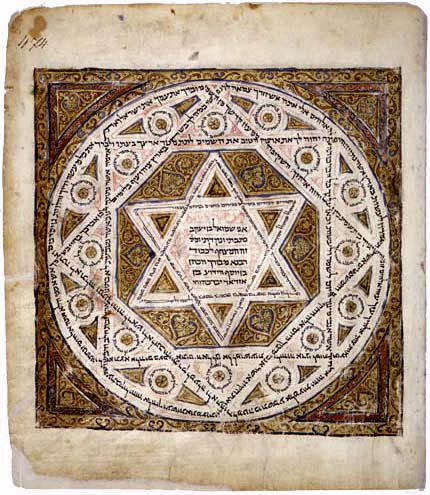
The Leningrad Codex, claimed to be from 1010 AD. The Hebrew bible, formerly the property of the Karaïte Jews who claim its author was Karaite. This is denied by Rabbinic Jews.
Shmuel ben Ya'akov, Public domain
The Masoretes were Jewish ‘scribe-scholars’ – scholars who could write, or scribes who could think… even worse. They set about creating the Old Testament as we know it today. It’s claimed that they worked in 3 groups throughout the middle-east from the 5th or 6th or maybe even the 7th or 8th maybe the 9th perhaps to the 10th century (depending which Wikiperdida page you find), apparently inventing vowels to add to Hebrew, which was all consonants, and arranging the text into sentences and paragraphs, adding punctuation. They also invented accents to assist with chanting during rituals.
Thanks to the different groups, there were different final versions, that didn’t agree with each other. None of them agreed with any of the existing sources upon which they were based. The three groups were:
Furthermore, there were even differences within the three groups themselves. This has resulted in there being no clear, definitive version of The Masoretic Text. It’s from the Tiberian group that we find two of the most widely recognised manuscripts:
1. The Aleppo Codex or (A) which is the basis of the Hebrew University Bible Project (HUBP)
2. The Leningrad Codex or (L), the base text for the Biblia Hebraica Stuttgartensia (BHS).
The ‘Second Rabbinic Bible’, edited by Jacob ben Chayyim (1524-25) was considered the definitive Masoretic Text for centuries. In more modern times ‘scholars’ have decided that it was based on relatively late manuscripts, and thus probably not the representative of the Masoretic Texts and so these days the Biblia Hebraica Stuttgartensia (BHS) (based on The Leningrad Codex) is currently the standard scholarly edition of the ‘Masoretic Text’ in the West.
The much later supposed discovery of the Dead Sea Scrolls firmly placed the proverbial fly directly in the ointment and revealed even greater discrepancies and even the forgery of an entire gospel (Esther.) Even today many of the Dead Sea Scrolls have been suppressed or remain unpublished by the Catholic Church.
Controversy raised its head much earlier than the discovery of the Dead Sea Scrolls though…
“Suspicions about the unreliability of the Masoretic Received (Accepted) Text or Textus Receptus (not to be confused with the New Testament Textus Receptus) came much earlier than the textual discoveries made in the 1947 find of the DSS. The rediscovery of the Samaritan Hebrew Pentateuch (Genesis-Deuteronomy) by Pietro della Valle in 1616 opened a whole can of worms that pointed to deliberate Masoretic mutilation of the Tanakh. The Samaritan text was made available to scholars shortly afterwards when Morinus first printed it in 1632 alongside other versions in the Paris Polyglot. Over 6,000 deviations from the Masoretic were soon found and it was further established that about one third of these variae lectiones could be traced also in the Septuagint (LXX). This concurrence enhanced the growing doubts which had been raised as to the accuracy and reliability of the Masoretic text and led to the inevitable conclusion that a revision had been made by the rabbis after the destruction of the Temple in the first half the 2nd century AD which could not, therefore, represent the ipisissima verba (lit. ‘the very words’) of the divinely inspired message, and so was a faulty text, resulting from incuria librariorum or from willful malicious tampering with it on the part of the Jewish rabbis and of their exclusion of variant MSS which they did not like, particularly those which agreed with the LXX (because of their loathing of all things Greek) or which possessed strong Christological pointers.” Source
Even Sir Isaac Newton wrote about the “Rabbinic Forgeries Hypothesis” which were mainly concerned with the manipulation of chronology in order to deny that Jesus was the prophesied Messiah. See here.
“As to this whole Book of Esther in the present Hebrew copy, it is so very imperfect, in a case where the providence of God was so very remarkable, and the Septuagint and Josephus have so much of religion, that it has not so much as the name of God once in it; and it is hard to say who made that epitome which the Masorites have given us for the genuine book itself; no religious Jews could well be the authors of it, whose education obliged them to have a constant regard to God, and whatsoever related to his worship; nor do we know that there ever was so imperfect a copy of it in the world till after the days of Barchochab, in the second century.” Source: Endnote to an unspecified edition of ‘Antiquities of the Jews - Book XI, Chapter 1’ by Josephus.
“The Masoretic Text is the basis for most Protestant translations of the Old Testament such as the King James Version, English Standard Version, New American Standard Version, and New International Version. After 1943, it has also been used for some Catholic Bibles, such as the New American Bible and the New Jerusalem Bible. Some Christian denominations instead prefer translations of the Septuagint as it matches quotations in the New Testament.” Source
Maybe because it was written after?
However, conveniently “Fragments of an ancient manuscript of the Book of Leviticus found near an ancient synagogue's Torah ark in Ein Gedi [Israel] have identical wording to the Masoretic Text.” Source.
...to the same fragments I suppose it means, which is hardly conclusive.

A section of an ancient Torah Scroll found in the Byzantine-era synagogue in Ein Gedi. It is claimed to contain verses from the beginning of Leviticus.
Israel Antiquities Authority שי הלוי, CC BY-SA 3.0
To recap then:
1. The Masoretes admitted that they received corrupted texts which they used as sources for their work.
2. The Masoretic Text is written with a radically different alphabet (block script) than the original (glyphs).
3. The Masoretes added ‘vowel points’ and accents that did not exist in the original, which in all probability created a new interpretation and commentary.
4. The Masoretic Text excluded several books from the Tanakh (Old Testament) scriptures (like Sirach, Widsom of Solomon and Tobit) and added one of their own invention (Esther).
5. The Masoretic Text included changes to prophecy and doctrine.
6. The Masoretes even changed the name of God from YHWH (Yahweh) to ‘Adonai‘, meaning ‘Lord’ or ‘Master’, a Greek loan word derived from the Pagan god Adonis.)
The question of what that original script was has been made a very difficult one to answer …of course.

The earliest script that has been given the label ‘Hebrew’ and
claimed to be from the time of Moses, was hieroglyphic.
Source
“…there is extensive archeological evidence of a much older Hebrew alphabet, called Gezer or Sinatic (after Mount Sinai), as the original and most ancient Hebrew…
“...The Sinatic alphabet could have evolved as an alphabetic representation of the twenty-six Sumerian cuneiform ciphers, the world’s oldest known non-alphabetic language.” Daniel Feldman, Qabala: The Mystical Heritage of the Children of Abraham, 2001
Here once again, we need to be very wary of falling into the ‘Assumption Trap’. The above quotation immediately connects to our pre-programmed assumption that Hebrew is the original of originals in any field you care to name. The use of the words Sinatic, Gezer, Sinai and Hebrew are modern appellations that may have nothing whatsoever to do with this actual original alphabet.
“The sudden appearance of the original Hebrew was paralleled several hundred years later by the sudden appearance of Brahmi Sanskrit in the Indus Valley...
“...Sinatic and Brahmi have many similar letterforms, and both were replaced by later alphabets claimed in present times to be the originals (i.e. Sinatic replaced by Ezra and Brahmi replaced by Deva Negari)…
“...Some Qabalists and Tantrikas maintain that there is a parent alphabet, called the “Gan Aden Alphabet” (Garden of Eden), from which both Hebrew and Sanskrit are derived.” Source: (ibid.)

Frontispice of ‘The Mystery of the Cathedrals’ by Fulcanelli (1926)
Julien Champagne (1877-1932), Public domain
This brings to mind a favourite quote by Funcanelli regarding the true Cabala, which claims it to be the voice of the instinct and was originally the ‘Language of the Birds’ or ‘Language of the Gods’ and that the Hebrew Kabbala is a deception and corruption. This aspect will be discussed much more fully in Part Three, but for now it’s sufficient to know that modern Hebrew is derived from something much older and that has degraded from the original 26 characters of ‘Sumerian’ Cuniform, (from which it has a great many loan words) down to just 22 consonants. Curiously the ‘Ezra’ mentioned in the quote above is also the name of a Jewish scribe / high priest of the post-Babylonian exile period who is closely related to the superstar, elusive Achaemenid Empire (to be discussed later.) Other sources cite this degraded form as being Phoenician, Paleo-Hebrew, Samaritan, Moabite, Ammonite, Edomite, as well as Old Aramaic… in fact any old Iron Age language they care to invent. (“Any old iron, any old iron, any any any old iron!” Apologies, all this brought to mind an old Cockney song.)
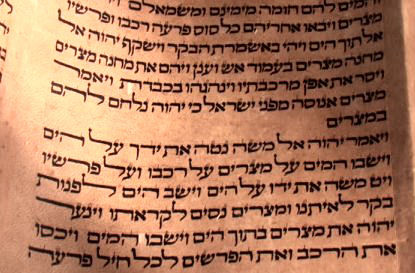
Pre-block, pre-Masoretic Paleo-Hebrew (no vowels) script. The Masoretic Text is written with an alphabet (called ‘block script’ because of the shape of most of the characters) which was actually Persian. It’s claimed to be 1000 years more recent than the hieroglyphs shown above. (ibid.)
If this Gan Aden Alphabet, or Language of the Gods, was universal as it is reasonable to suspect, then any alphabet derived from it could equally be universal, appearing anywhere in the world. How devious would it be then, to invent a new language from that original alphabet by adding vowels, accents and punctuation, then calling it ‘Hebrew’. This would mean that any appearance of the original 'Gan Aden' Alphabet anywhere in the world would be accredited to Hebrew and thus the Hebrews.
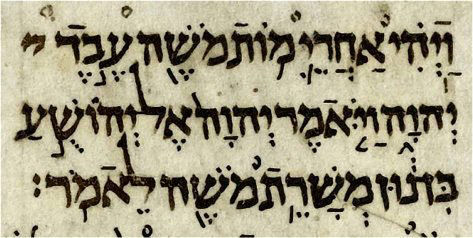
Masoretic pointed (vowels added) block text
in common use today. (ibid.)
Furthermore, any scriptures written in the newly invented Hebrew could claim an antiquity and authenticity by virtue of the same deception. Sumerian / Assyrian /Persian literature was also the source of many Old Testament stories, such as those of Gilgamesh.
Over the years, Felix and I have often written about the Masoretic Texts and each time we discover new snippets of information. The one thing that has always been consistent right from the beginning is that the Masoretes themselves admitted that they had been given corrupted texts to work from right at the beginning of the project. This applies to all three of the different Masorete groups or families or communities or whatever they were. Does this imply that there were uncorrupted texts or that the texts they were given to work from were complete forgeries? Who gave them the corrupted texts? It sounds very much like the Masorete groups were each given a contract to produce a new ‘Hebrew’ alphabet and to create a scripture for general non-Jewish consumption – let’s face it, the Jews supposedly already had their own Pentateuch or Torah whatever it’s called, although their ‘rites’ and laws are all based upon commentaries and reinterpretations of the Torah. So it seems as if the Masoretes were called upon to produce ‘rites’ and laws specifically for the non-Jewish Abrahamic religions.
When all the errors and inconsistencies were quickly discovered after the different versions were distributed, the Masoretes claimed the usual ‘we were only following orders’ defence, but whose orders and why? Furthermore, was the total forgery of the Book of Esther also a command from the same illusive source or did they simply provide that for free? It’s worth noting that all of the modern versions of the OT that are based upon the Masoretic Text are NOT the word of God, but the word of whoever commissioned the Masoretes.
The New Testament is claimed to date from the 4th century, with fragments going back as far as… well, whenever you like. The archaeological evidence presented by Gunnar Heinsohn regarding Saint Paul, places both he and Jesus in the 8th century, 400 years after the New Testament was supposedly codified, which makes no sense at all. Whilst Rome is not mentioned in the Old Testament it figures prominently in the New Testament. Although the city of Rome is not often directly mentioned, every place and event in the New Testament has Roman rule as its background. Obviously, the New Testament has to have been created during the period of the Roman Empire. Heinsohn claims this is from 700 AD up to the 10th century cataclysm, however, we now seriously doubt that the Roman Empire existed until some time after the cataclysm. Even if one accepts Heinsohn’s chronology, it’s curious how the origins of both Jesus and Muhammed become much more obscure than in the official AD timeline.
There really isn't time to do it justice here, but there is some fascinating research regarding the authorship of the NT and how all of the journeys and locations described therein fit perfectly with the topology of northern France, but not with the Middle East Holy Land.
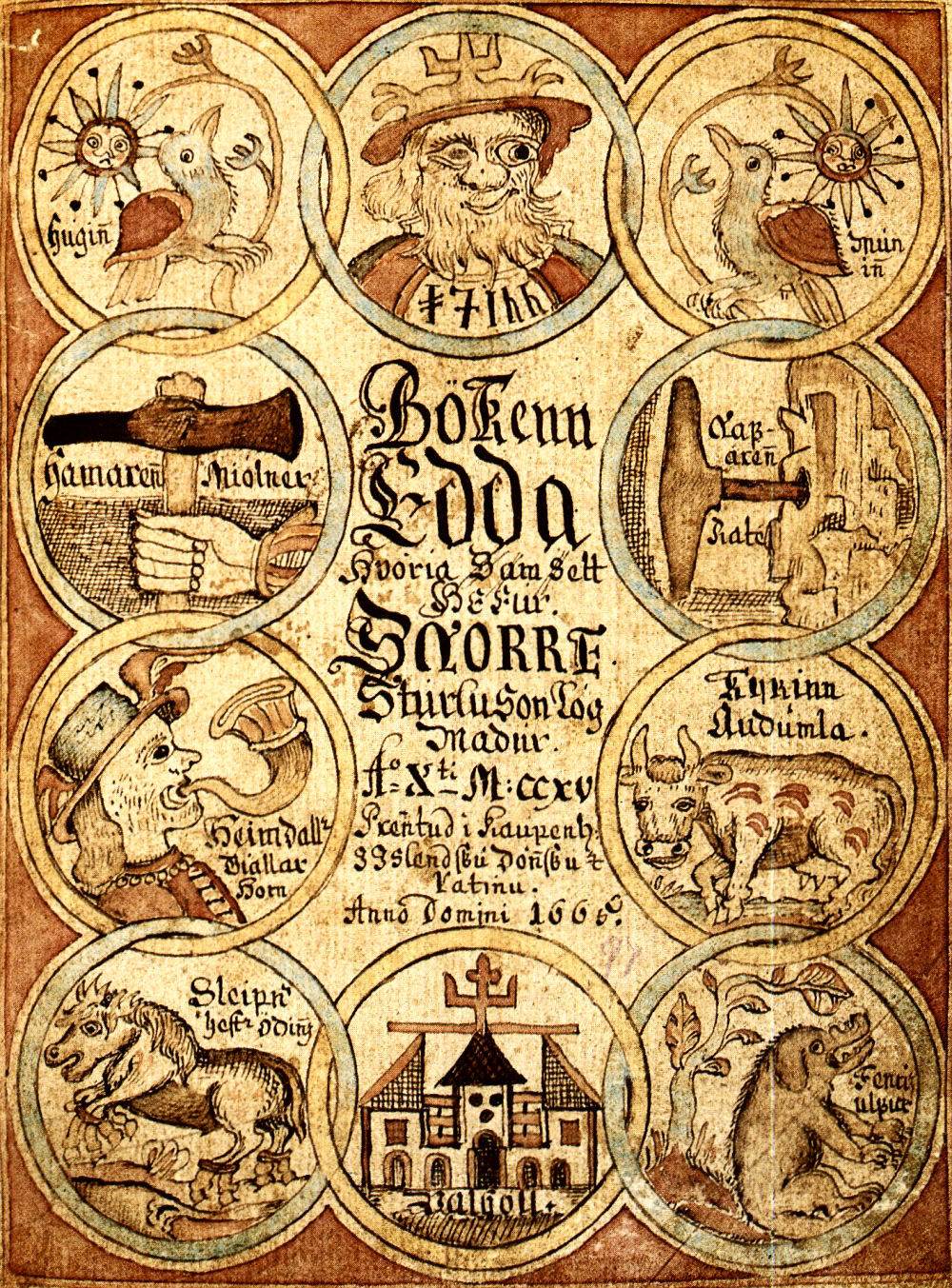
18th century mss of the Prose Edda, showing Odin, Heimdallr,
Sleipnir and other figures from Norse mythology.
Unknown author, Public domain
As far as ‘pagan’ manuscripts are concerned, the Prose Edda is a good example, https://en.wikipedia.org/wiki/Prose_Edda#Contents
with its tale of Gylfaginning – the story of Ragnarok, when many gods will perish, the world will be submerged in water and a new age will be born from the few survivors (does that sound familiar?)...
“Stanzas 65, found in the Hauksbók version of the poem, refers to a ‘powerful, mighty one’ that ‘rules over everything’ and who will arrive from above at the court of the gods (Old Norse regindómr), which has been interpreted as a Christian addition to the poem.” Source
Both the Prose Edda and the Poetic Edda, the major collections of Norse Mythology, were compiled in the 13th century – ‘from earlier sources’ which, of course, means that they were reinterpreted, edited and manipulated.
“In medieval convents, manuscript copying was a commercial craft, and focused exclusively on religious books such as psalters, gospels, missals, catechisms, and saints’ legends. They were mostly copied on papyrus. Parchment and vellum were reserved for luxury books, and since it was a very expensive material, it was common practice to scrape old scrolls in order to reuse them. Pagan works were the first to disappear. In fact, their destruction, rather than their preservation, was considered a holy deed, as hagiographers abundantly illustrate in their saints’ lives.” Source
In our article ‘A Quest for the Lost Realm of Faërie’, Felix and I discussed the ancient history of Ireland and how it had been manipulated. It will also serve as an excellent example of just one of the ways in which our entire 1st millennium chronology was rearranged:
“From the beginning, LGE [The Book of the Taking of Ireland] proved to be an enormously popular and influential document, quickly acquiring canonical status. Older texts were altered to bring their narratives into closer accord with its version of history, and numerous new poems were written and inserted into it. Within a century of its compilation there existed a plethora of copies and revisions, with as many as 136 poems between them. Five recensions of LGE are now extant, surviving in more than a dozen medieval manuscripts.” Source
“Every ancient author, without exception, has come to us through the medium of Christian editors, who have, either from roguery or folly, corrupted them all . We know that, in one batch, all the fathers of the church and all the Gospels were corrected, that is, corrupted, by the united exertions of the Roman See, Lanfranc, Archbishop of Canterbury, and the Monks of St. Maur. And the conduct of Sir W. Jones, relating to the crucifixion of Indra, shews that the same system is now carrying on in India.” Source: ‘The Anacalypsis’ by Godfrey Higgins, 1927.
Felix covered the issue of the earliest Jewish settlements in northern Europe in his ‘The Betrayal of Albion’ series of articles where it became clear that the Jews were granted the right to trade there during the 9th century, but were not allowed to create communities until the 11th century. In France it’s claimed that during the 8th to 9th century, Charlemagne encouraged Jews to immigrate from Italy as ‘royal clients’ independent of the feudal landowners, and of trading communities in the agricultural regions of Provence and the Rhineland. St. Jerome, makes it clear that he believed Jews to be living in Britain and even to have attained positions of dignity there. He is dated to the 4th century, but what is a Christian saint doing giving his opinions several hundred years before Christianity? However, it’s important to note that there is no archaeological evidence to show any specifically Jewish “permanent settlement was formed, no community established, and no synagogue built [in England]." Source: 'A History of the Jews in England by Cecil Roth, 1964
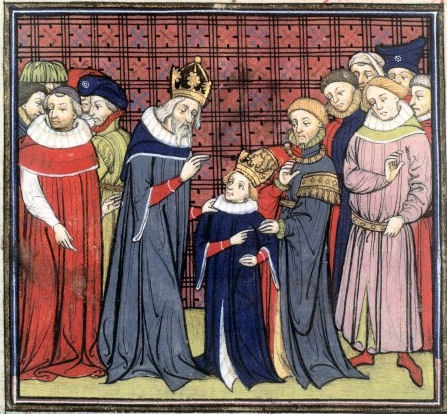
Charlemagne and his son, Louis the Pious.
Unknown author, Public domain
“The settlement of Jews in the city [Rouen] dates in all probability from the Roman period [WS: Which Roman period?] The first document, however, concerning the community contains an account in Hebrew of a terrible persecution which the Jews of Rouen and of other localities experienced at the beginning of the eleventh century. Therein it is said that Robert the Pious having concerted with his vassals to destroy all the Jews on their lands who would not accept baptism, many were put to death or killed themselves. Among the martyrs was the learned Rabbi Senior. An influential and highly esteemed man in Rouen, Jacob ben Jekuthiel, went to Rome to invoke for his coreligionists the protection of the pope; and the pontiff sent a high dignitary to put a stop to the persecution.” Source Berliner's "Magazin," iii.; "Oẓar Ṭob," pp. 46-48
This would seem to be another episode during the post-cataclysmic Crusade and the alleged Rhineland Massacres which we have already discussed previously.
“In 1066 numerous Jews of Rouen emigrated to England, having been induced to settle there by William the Conqueror, who, while still in Normandy, had always protected them. His son, William Rufus, showed himself no less favourably inclined toward them. On a complaint of the Jews of Rouen to the effect that many of their co religionists had been forced to embrace Christianity, William Rufus not only allowed the converted to return to their old faith, but himself actually persuaded some of them to do so...
“...In 1096 the Rouen community was totally destroyed by the Crusaders. It seems, however, that it was re-established shortly after, although there is no official document showing the further presence of Jews at Rouen before 1204.” Source
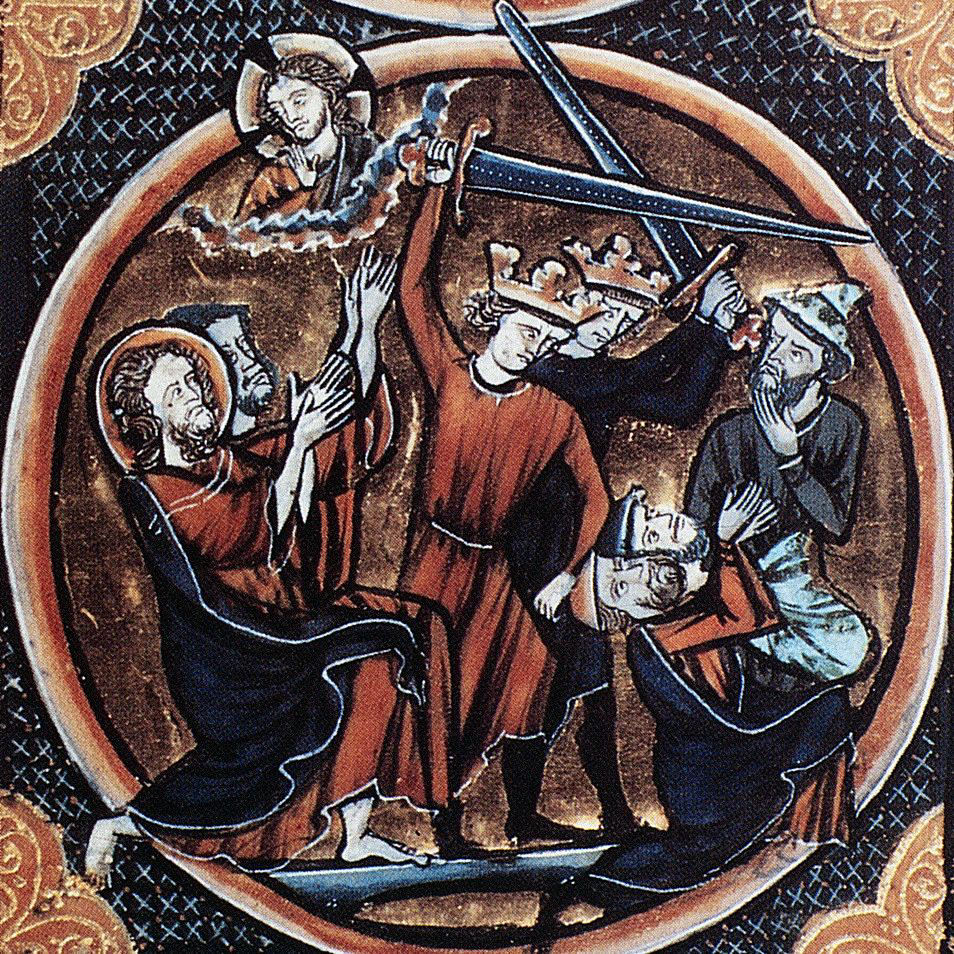
Jewish Persecutions circa 1250 AD
Source
It makes you wonder how a community could be totally destroyed and then re-established shortly after. This is particularly relevant given that there is very little evidence of any Jewish presence in northern Europe prior to the cataclysm, therefore after the cataclysm there must have been even less. So, it's the same "now you see them, now you don't" trick, the mystery of which is easily solved when you realise they were never there in the first place.
We have already discussed the language of Yiddish and how it was simply the only option available to any Jews present in northern European at any time, but how did it become almost universal to all Jews everywhere? Well the answer is it didn’t. Surviving Jews in other areas were equally obliged to speak other languages, for example Ladino. Wikipedia presents this as being another genuine language and assigns it as Judeo-Spanish within the Indo-European language group. They waffle on about its numerous elements from other local Spanish dialects and how it has been enriched by Semitic, Hebrew, Aramaic and Arabic vocabularies – particularly with regard to religion, law and spirituality, blah, blah blah. The technical term for this is ‘cobblers’. It’s Old Spanish with some Hebrew words. Any Jews in Spain would have to communicate with the local people at any time regardless of cataclysms, therefore they spoke Spanish. Ladino is or was Spanish, with some Hebrew words included that would never translate, of course when it was written down, the Hebrew alphabet was used, but mostly the Latin.
“In Turkey, and formerly in the Ottoman Empire, it has been traditionally called Yahudice in Turkish, meaning the "Jewish language." In Israel, Hebrew speakers usually call the language Espanyolit, Spanyolit, and only in recent years Ladino...
“...Judaeo-Spanish, once the Jewish trade language of the Adriatic Sea, the Balkans, and the Middle-East, and renowned for its rich literature, especially in Salonika, today is under serious threat of extinction.” Source
It’s just Spanish! Why is it that the Jews must claim everything as ‘theirs’?
“...native authors referred to the language almost exclusively as -Espanyol, which was also the name that its native speakers spontaneously gave to it for as long as it was their primary spoken language.” (ibid.)
“Espanyol” – Español – Spanish! The word “Ladino” is still used in Spain, but it’s used to describe someone who is cunning, devious, a rogue or scoundrel who is so ‘ladino’ that he possesses all of the tricks to get what he desires.
What’s very curious, or perhaps ridiculous, is that Ladino / Spanish is cited not just as the Jewish trade language of the Adriatic Sea, the Balkans, the Middle-East, Salonika (Thessaloniki, Greece), but also as being native to Israel, Turkey, Greece, Morocco, Bulgaria, Serbia, Bosnia Herzegovina, North Macedonia, Tunisia, and ‘other’ places…?!* The reason for this is given as being due to the Jewish expulsion from Spain. Does this mean then that Jews are native to wherever they are? The ethnicity of Ladino is stated as ‘Sephardic Jews[ish]’….?!*
Even curiouser and curiouser is that whilst the Jews are traditionally declared to be from Judea in Palestine, (where they presumably spoke Hebrew / Sumerian) or Aramaic,) Ladino / Spanish is declared as the Jewish trade language of the the Middle-East and as being native to Israel. The Sephardic Jews materialised in Spain during the 8th century AD supposedly accompanying the Moorish invaders, according to Jewish Encyclopedias, so what happened in-between their Judea period and the 8th century AD and if the Jews were native to Judea why did this Yahudice / Ladino Spanish spread back across the Mediterranean to the Middle East from Spain? None of it makes any sense.

Solomon Schechter studying the fragments of the
Cairo Genizah, c. 1898
Unknown author, Public domain
“The Cairo Geniza, alternatively spelled Genizah, is a collection of some 400,000 Jewish manuscript fragments and Fatimid administrative documents that were kept in the genizah or storeroom of the Ben Ezra Synagogue in Fustat or Old Cairo, Egypt. These manuscripts span the entire period of Middle-Eastern, North African, and Andalusian Jewish history between the 6th and 19th centuries CE, and comprise the largest and most diverse collection of medieval manuscripts in the world.” Source
It shows perfectly the close link between the Jews and the Arabs, especially the Fatimid dynasty, which is claimed to descend from Mohammed who was also a direct descendant of Ishmael. Once again, it also shows the Jews using the local language, but written in the Hebrew alphabet – in exactly same manner as Yiddish and Ladino, but not actually Yiddish or Ladino. Furthermore, it reveals that Aramaic, supposedly an ancient language, was still in use during the middle-ages.
It’s clear that Hebrew script was used as a cipher to hide communications and information from the profane in much the same way as Latin was used. In fact it’s a short step from Ladin to Latin. There’s even a Ladin language...
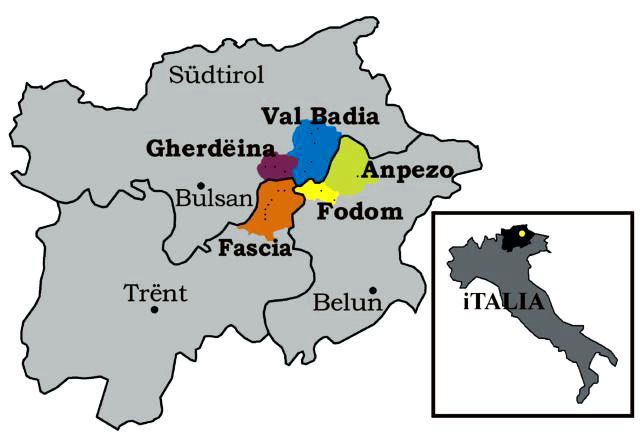
Distribution of the Ladin language.
CCA Share Alike 2.5 Generic
“Ladin (...autonym: ladin; Italian: ladino; German: Ladinisch) is a Romance language of the Rhaeto-Romance subgroup, mainly spoken in the Dolomite Mountains in Northern Italy in the provinces of South Tyrol, Trentino, and Belluno, by the Ladin people. It exhibits similarities to Romansh, spoken in Switzerland, as well as Friulian, spoken in north-east Italy… The name derives from Latin, because Ladin is originally a Vulgar Latin language left over from the Romanized Alps. Ladin is often attributed to be a relic of Vulgar Latin dialects associated with Rhaeto-Romance languages.”
Source
There’s no apparent Jewish association revealed by Wikipedia and there are many other uses of the word Ladino, which is exactly what you would expect when something is being hidden in plain sight, such as: all of this Indo-European language grouping being total bullshit; the Jews spoke whatever language they needed to in order to communicate with each other and the locals; Yiddish, Ladino, Yahudice etc, are all local languages mixed with a few Hebrew words; Romance Languages are just local languages mixed with a few Latin words and, as we have already seen, they were originally derived from Greek not Roman / Latin.
As if all that wasn’t enough, there’s Yevanic, spoken by the Romaniote Jews of Greece and Cyprus: "They are one of the oldest Jewish communities in existence and the oldest Jewish community in Europe. Their distinct language was Judaeo-Greek or Yevanic, a Greek dialect that contained Hebrew along with some Aramaic and Turkish words” i.e. Greek written in the Hebrew alphabet! Source
As we have noted earlier, Hebrew as a written script, was heavily modified by the Masoretes at some ill-defined and variable point after the 10th century cataclysm with no definitive version until the 16th century. What this means is that all of the supposedly ‘Jewish’ languages; Yiddish, Ladino, Yahudice, Yevanic, etc., can only have been written in Hebrew script after the addition of vowels and punctuation by the Masoretes, otherwise they would read like early txt msgs, but in Greek or Spanish etc. Therefore, they all most definitely originate from the post-cataclysm period and probably well into the middle-ages.
If Jews had to be invited into northern Europe there obviously weren’t any previously, or at least not enough to go around. Where they were invited from is generally not made clear, although Italy (Rome?) is mentioned with regard to Charlemagne’s son, Louis the Pious.
The curious thing is that the walled precincts,or ghettos, were part of the package offered to the imported Jews by the Hostile Confederacies in northern Europe - so they knew beforehand that they would need to be protected. In other words, the establishment of ‘ghettos’ wasn't something that became necessary at some point after they settled - it was part of the conditions of the contract they negotiated before they arrived.
‘Ghetto (n.) 1610s, "part of a city in which Jews are compelled to live," especially in Italy, from Italian ghetto "part of a city to which Jews are restricted," of unknown origin. The various theories trace it to: Yiddish get "deed of separation;" a special use of Venetian getto "foundry" (there was one near the site of that city's ghetto in 1516); a clipped form of Egitto "Egypt," from Latin Aegyptus (presumably in memory of the exile); or Italian borghetto "small section of a town" (diminutive of borgo, which is of Germanic origin; see borough). Extended by 1899 to crowded urban quarters of other minority groups (especially blacks in U.S. cities). As an adjective by 1903 (modern slang usage from 1999). Ghetto-blaster "large, portable stereo cassette-player" is from 1982.’ Source
So, should we understand from the above that there were no ‘ghettos’ in Europe until the 16th century? The clipped form of Egypt sounds highly suspect, but the ‘borghetto’ origin is much more plausible and shows no connection to specifically Jewish areas, which were more usually referred to as Jewry (Jew-ery.)
I suppose if they were also given trading charters, protection, special privileges and exemptions from taxes then it's pretty obvious they would want to be segregated from the ‘hoi-polloi’. Maybe they weren't ghettos, but elite protected housing estates and the ‘ghettos’ epithet has been promoted to evoke a sad serenade of violins whenever the subject is mentioned?
Jewish "ghettos" from across Europe
Coincidentally, or not, at about the same time that the Masoretic Old Testament appeared (after the cataclysm,) something “epic” took place at Troyes, in the Champagne area of France. During this period, many Christian rulers were busily inviting Jews into their northern European kingdoms where they were given trading charters, protection (including isolation within walled precincts), special privileges and exemptions from taxes. This “saw the emergence of an early rabbinic elite that was part of the commercial middle class the Jewish settlers were forming.” Source

Rashi, from a 1539 woodcut
Public domain
This epic, legendary event involved Rabbi Shelomoh ben Yitsḥak of Troyes, otherwise known as Rashi (fortunately) and “small rabbinical circles” who between them produced his running commentary on most of the Hebrew Bible and the Babylonian Talmud. This event is celebrated as the creation of new categories of Jewish law and practice, “making a formerly Mediterranean and Islamic Jewish culture into the Jewish culture of northern Christian Europe or Ashkenaz.” (ibid.)
Let’s be aware that ‘there is only one complete extant manuscript of the Babylonian Talmud which was written in 1342, probably in France,’ therefore the copy that Rashi used must have been lost or something else was going on, such as all this happening much later than they claim. Furthermore, for there to have been an established “Mediterranean and Islamic Jewish culture” we have to also believe that Islam itself was well established by the 11th century.
“His writings circulated with great rapidity, and his commentary on the Talmud greatly extended the knowledge of the subject, thus increasing the number of Talmudic schools in France, which soon came to be of great importance, especially those at Troyes, Ramerupt, Dampierre, Paris, and Sens. His two sons-in-law, Judah b. Nathan (RIBaN) and Meïr b. Samuel, and especially the latter's three sons. Samuel(RaSHBaM), Judah, and Jacob (R. Tam), were the first of a succession of tosafists who were closely identified in work and methods with Rashi.” Source
Oddly, the same Jewish Encyclopedia states that it took some 450 years before Rashi's commentary on the Pentateuch was first printed at Reggio, northern Italy, in 1475. It was the first dated Hebrew book printed, all the others are undated, including the Pentateuch, Torah, etc. So, one wonders exactly how his writings circulated “with great rapidity.” In the meantime we are told that Rashi’s grandsons... “built a major intellectual palace of synthesis on the basis of Rashi’s Talmudic commentary.” (ibid.) It was even translated into Latin by Christian scholars of the seventeenth and eighteenth centuries, some parts several times. However, Tosafist rabbis of France and Germany, were still criticising Rashi’s work in the 18th century.
Even more oddlier still is that he is said to have known only Hebrew and French with a few words of German. This is strange because Hebrew was, at the time, only spoken during religious rituals and Yiddish was the spoken language of the Jews in that area.
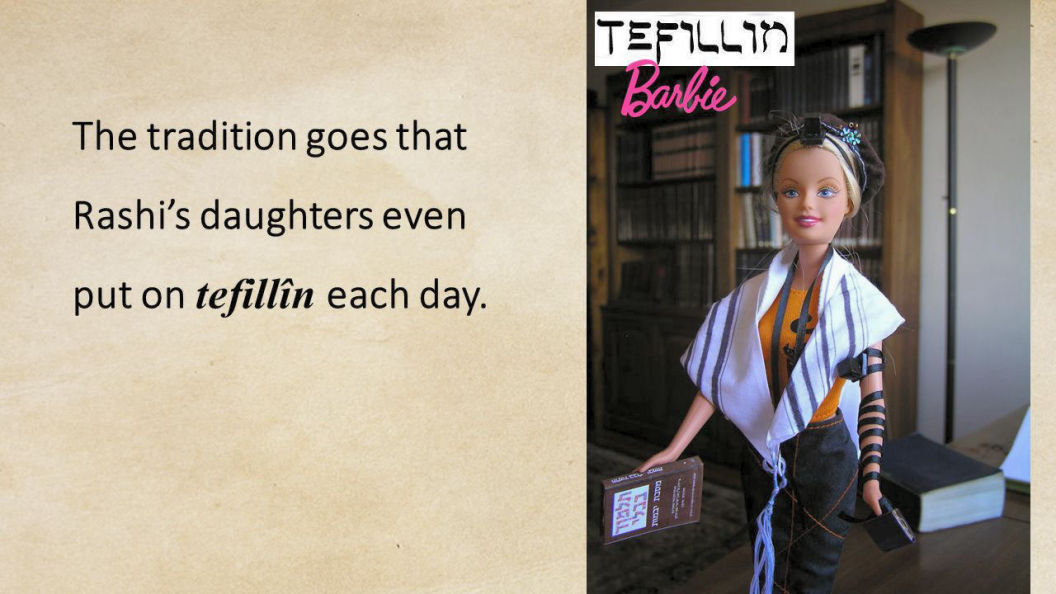
Tefillin Barbie ...no comment
Source
The Jewish Encyclopedia fair waxes lyrical regarding the fame of Rashi, which soon spread beyond the boundaries of northern France and the German provinces of the Rhine, even unto Provence, Spain and thenceforth to the East.
“In France itself, however, repeated expulsions by successive kings and the burning of Hebrew books, as at Paris in 1240, [WS: presumably all undated and handwritten] scattered the Jews and destroyed their institutions of learning. Throughout these persecutions, the Bible and the Talmud with the commentaries of Rashi, were their inseparable companions, and were often their supreme as well as their only solace, and the chief bond of their religious unity.” Source
We are also told that French Jews took their literature with them and diffused it among foreign communities, thus steadily increasing its popularity. Well, OK, but his books weren’t printed until 1475, so did these French Jews have handwritten copies? Also, how were the foreigners able to understand what was written if Rashi only knew Hebrew and French? In fact neither Yiddish nor Ladino are mentioned in relation to Rashi’s works. Furthermore, in the 11th century, when Raschi was working on the Hebrew Bible, Talmud etc., was he using source material written in the brand-spanky-new Masoretic Hebrew with vowels, sentences and punctuation or was he using the original raw Sumerian script? The Masoretic version of the Pentateuch was at the time newly created in the Middle-East and therefore (presumably) not readily accessible to Rashi in Troyes, France. Given that the Masoretes totally changed the Hebrew Bible, how could Rashi’s commentaries be relevant if they were made in relation to the Pre-Masoretic block text, which was basically old Assyrian (Persian), which had no vowels?
“Rashi's commentaries on the Talmud became the text-book for rabbis and students, and his commentary on the Pentateuch the common study of the people. The popularity of the works extended to their author, and innumerable legends were woven about his name, while illustrious families claimed descent from him.” (ibid)
And so Rashi became a legendary figure.. or maybe he was from the very beginning. He is credited with inventing sliced bread and influencing Martin Luther via the French monk Nicolas de Lyre (d. 1340.)
Essentially, this Rashi episode sounds like the backdated creation of a specific Ashkenazi Judaism – “the Jewish culture of northern Christian Europe or Ashkenaz.” I’m fairly confident that none of it took place in the 11th century along with the creation of a network of Talmudic schools etc. and in the midst of forced baptisms with Crusade annihilations.
"In time, all Jews who had adopted the 'German rite' synagogue ritual were referred to as Ashkenazim to distinguish them from Sephardic (Spanish rite) Jews. Ashkenazim differ from Sephardim in their pronunciation of Hebrew [WS: not just the word 'Hebrew' but all of them one assumes,] in cultural traditions, in synagogue cantillation (chanting), in their widespread use of Yiddish (until the 20th century), and especially in synagogue liturgy." Source
So we have German rite and Spanish rite Jews... but what about the Byzantine, Greek, Turkish, Arabian, Egyptian, Persian, Judean rite Jews? What happened to all of them? Doesn’t this sound as if the Spanish rite Sephardic Jews and the German rite Ashkenazi Jews took their identity and even their language from Spain and Germany respectively after they arrived there? So with what did they identify themselves before they arrived in Spain / Germany? Did they even exist before they turned up in those places? The northern European Ashkenazi, with their Germanic Yiddish language, seem to have been an invention of Rashi, I wonder who invented the Spanish Sephardic Jews. Let's see...
Well, as it turns out, my good friend Silveryou has unearthed a character who seems to be the Sephardic equivalent of Rashi…
“Moses ben Maimon[a] (1138–1204), commonly known as Maimonides and also referred to by the acronym Rambam (Hebrew: רמב״ם), was a Sephardic Jewish philosopher who became one of the most prolific and influential Torah scholars of the Middle Ages. In his time, he was also a preeminent astronomer and physician, serving as the personal physician of Saladin. Born in Córdoba within the Almoravid Empire (present-day Spain), on Passover eve, 1138 (or 1135), he worked as a rabbi, physician and philosopher in Morocco and Egypt.” Source
Just like Rashi, his writings on Jewish law and ethics didn’t receive universal acclaim and yet they survived and were, and still are, widely disseminated. Many Jews, especially the Arabian ones, simply called him Moses, in fact ‘Moses son of Amram’ – yes, that’s right the actual biblical Moses. Also, just like Rashi, he was prolific and wrote an impossibly enormous number of books, not just on Jewish law, but also on medicine, philosophy and science.
All of this was happening at around the same time in both the Ashkenazi northern European area and the Sephardic, Spanish, Mediterranean, Middle Eastern area. Even the Kabbalah was conceived in Spain at around the same time as well.
“The meaning of the term ‘Ashkenaz’ and the geographical origins of Ashkenazi Jews are some of the longest standing questions in history, genetics, and linguistics” or so it says in one of the hundreds of missals written on the topic. The thing is though, it’s all one massive and utterly pointless waste of time. You can find ‘evidence’ to support any opinion you fancy. It all gets even more entangled with that other ‘red-herring’, the Khazar subject. Once you realise, or accept, that the Roman Empire didn’t actually exist until the Middle Ages, then the entire ‘House-of-Cards’ upon which the Ashkenazi and Khazar theories are built, simply collapses.
“We know from experience that the Jews have no respect whatsoever for local gentile conventions, therefore it’s no surprise that the Jews of central and eastern Europe called the area Ashkenaz. Spain was denominated Sefarad (Obadiah 20), France was called Tsarefat (1 Kings 17:9), and Bohemia was called the Land of Canaan. In the high medieval period, Talmudic commentators like Rashi began to use Ashkenaz to designate Germany, earlier known as Loter.” Source
All Jews had at least two names – their Jewish name and a name that conformed to the locale in which they operated. Rashi used the term “leshon Ashkenaz” (Ashkenazi language) to describe Yiddish which we have seen is a Germanic local language with no Jewish origin whatsoever. The same Wikiperdida page tells us that Byzantium and Syrian Jewish letters referred to the Crusaders as ‘Ashkenazim’.
[Sources: *Eliezer b. Nathan of Mainz (early 12th century) distinguishes between Ẓarefatim (French) and Ashkenazim (German / Saxon) in reference to the crusaders as "a foreign people, a bitter and impetuous nation" (A.M. Habermann (ed.), Gezerot Ashkenaz ve-Ẓarefat (1946), 72). Letters from Byzantine and Syrian communities written during the First Crusade also refer to the crusaders as "Ashkenazim" (Mann, in: Ha-Tekufah, 23 (1925), 253, 256, 260).]
So does this indicate that the Crusaders were actually Ashkenazi Jews from Germany and France? Again, the same source illustrates how, on the one hand, the Norman / Roman Confederacy were supposedly inviting Jews to their main cities and granting them protection, tax benefits and even elite walled housing estates in return for their financial prowess, and yet, as we have already seen, it’s claimed that during the exact same period...
“Numerous massacres of Jews occurred throughout Europe during the Christian Crusades. Inspired by the preaching of a First Crusade, crusader mobs in France and Germany perpetrated the Rhineland massacres of 1096, devastating Jewish communities along the Rhine River, including the SHuM cities of Speyer, Worms, and Mainz”. (Ibid)
As has been highlighted previously during our discussion of the First Crusade and the Rhineland Massacres of 1096, Michael Toch, in his 2012 book entitled ‘The Economic History of European Jews’, states the following...
“No evidence has yet been found of a Jewish presence in antiquity [those before the Middle Ages - 476 CE and the beginning of the Renaissance in the 14th C ] in Germany beyond its Roman border, nor in Eastern Europe. In Gaul and Germany itself, with the possible exception of Trier and Cologne, the archeological evidence suggests at most a fleeting presence of very few Jews, primarily itinerant traders or artisans."
So what about the ShuM cities and Rashi with all of the schools he established? Yet again, are we supposed to believe that none of it left any archaeological evidence whatsoever? Obviously, either it all happened much later in the Middle Ages, or its all a deception... that happened much later.
"Though Judaism was born encased in theological–historical myth, no Jewish historiography was produced from the time of Josephus Flavius (1st century CE) to the 19th century (Sand 2009). Early historians bridged the historical gap simply by linking modern Jews directly to the ancient Judeans (fig. 2), a paradigm that was later embedded in medical science and crystallized as a narrative. Many have challenged this narrative (Koestler 1976; Straten 2007), mainly by showing that a sole Judean ancestry cannot account for the vast population of Eastern European Jews in the beginning of the 20th century without the major contribution of Judaized Khazars and by demonstrating that it is in conflict with anthropological, historical, and genetic evidence (Patai and Patai 1975; Baron 1993; Sand 2009)." Source

(Click the image to open full size in a New Tab)
Source
OK, so the only historiographical ‘evidence’ linking Jews to Judea, Israel, Moses and Abraham comes from Josephus Flavius a Roman-Jewish historian of the first century AD. However, if we accept that there was no Roman Empire in the Middle East at that time and also that there’s no archaeological evidence to support the existence of Judea or Israel, then its all either back-dated ‘history’ or fake. In order to fill the vacuum the Khazar connection has been offered as an explanation and it’s all tied up with that other conundrum – the Ashkenazi.
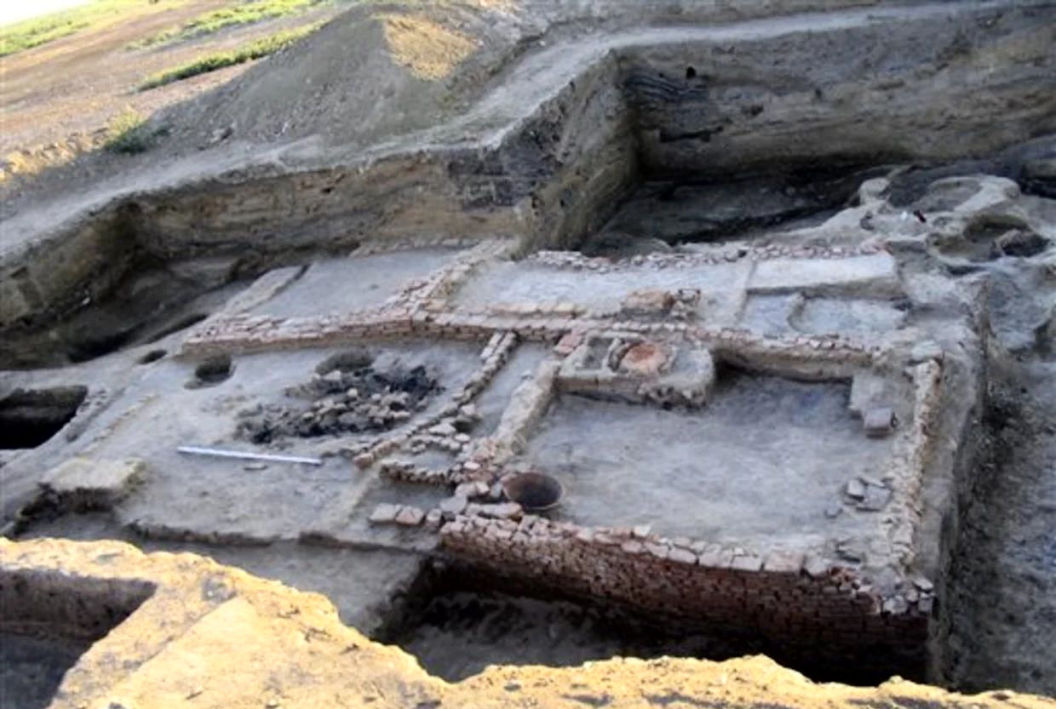
Itil near Astrakhan, a Silk Road city and the Khazar capital
(No Jewish artefacts were discovered there.) Source
"The elite Khazar conversions, however, became the springboard for a far more sweeping theory of Jewish origins, begun by Ernst Renan, who in 1883 suggested that the general Khazar population also converted and became the ancestors of Ashkenazic Jewry. The latter were, therefore, not descendants of Israelites at all but, rather, were deemed to be “Asiatics” with no claim to a biblical inheritance." (ibid.)
Here we are again in that by now familiar area around the Caucasus Mountains - legendary for being the birth place of white, Caucasian people amongst other things. There are so many theories, opinions and DNA studies that all prove whatever it was they set out to prove: ‘Khazars’ resembles ‘Caesars’; they became Jewish around the 750s... or 860, by choice following sales pitches made by all 3 Abrahamic religions; their particular form of Judaism was based upon the Babylonian Talmud and they were governed by fanatical Rabbis; they spread into 'Ashkenaz' via the Slavic countries, etc., etc.
Among the classical writers of the Middle Ages they were known as the ‘Chozars,’ ‘Khazirs,’ ‘Akatzirs,’ and ‘Akatirs,’ and in the Russian chronicles as ‘Khwalisses’ and ‘Ugry Byelyye.’ In Part Two we encountered them in The Shahnameh, although towards the end and there was nothing remarkable mentioned about them – especially not their alleged Judaism.
"Like the Mongol Empire, or Imperial Russia or USSR, and like Poland-Lithuania, the Khazar realm was a multiethnic entity. We don’t know the percentage of Eteo-Khazars (Khazars proper, members of the ruler’s own tribe) in the population of the realm, or who exactly they were. When we say “Khazars adopted Judaism,” we cannot be certain who we are talking about—the Khazars proper, or also the ethnic relatives of Alans, Volgan Tatars and Eastern Slavs. We simply don’t know and never will. Whoever tells you that he or she found “the Khazar gene” is a charlatan.” Source
...as Milorad Pavić (Dictionary of the Khazars) put it, ...“there were many nations in Khazaria, but there was no Khazar nation. Basically the Khazars could have been referred to by any number of names - Magyar, Hun, Alans, Bulgars, Göktürks, Avars, Ashina, Slavs, Caucasian Iberians / Armenians etc...”
Before going any further into this black hole, let’s see if Gunnar Heinsohn has anything to say about them...
“The Khazars awsome [sic] power and immense imperial reach appears to have arrived in an instant out of nowhere at the beginning of the 8th c. CE. This author’s stratigraphical approach places Antiquity (1st-3rd c. CE; Sarmatians), Late Antiquity (4th-6th c. CE; Huns), and the Early Middle Ages (8th-10th c. CE; Khazarians) in one and the same period, illuminated by different sources coming from a variety of areas and languages.”
“...Therefore the outline of Sarkel, the central Khazarian fortress, in the form of a Roman period compound, along with its Roman (“Byzantine“) columns that stunned its excavator, Mikhail I. Artamonov (1962), no longer come as a surprise. The urge to move the menorah-stone, found in this Khazarian fortress, to a period before the Khazarian 8th c. in order to support the claim that Jews of the Khazarian period are fictitious (Toch 2013; Stampfer 2014b), may well subside once the stratigraphical parallelity of Antiquity, Late Antiquity, and Early Middle Ages is taken into account” Source: ‘Sarmatians, Huns, And Khazars: Were They One And The Same Confederation?’
Gunnar Heinsohn 16-01-2015
Again Heinsohn demonstrates that it’s impossible to find Sarmatian Early Antiquity building strata beneath Late Antiquity Hunnic building strata which in turn should be under Khazarian towns of the Early Middle Ages. Neither are there any archaeological traces for the imagined centuries between the textbook official Roman period and early phase of the subsequent Árpád dynasty.
As we saw in Part One, there is an equal degree of mystery regarding the origin of the Huns who are now being seen as a political confederacy composed of various elements rather than a specific race. Like the Khazars and their Viking/Varingian counterparts, they simply materialised along with their Gothic counterparts, mirrored again by the Sarmatians and their Wielbark-Gothic/Quadic foes.
Heinsohn goes on to state that the Jewish component of the associated archaeological artefacts become “Jewish artifacts of the Sarmatian=Hunnic=Khazarian Federation of the 8th-10th c. CE. [Then] The core problem of the controversies will simply disappear. Everybody, then, can accept that there were Jews in the Khazarian realm. The written sources may have been exaggerated. Yet, they were not all concocted legends “with no factual basis“ (Stampfer 2014b). Neither were the unquestionable Khazarian Moses coins fakes. However, the debates about small, large or non-existant Khazarian elements in the Jewish gene pool would certainly be carried on because of the stunning mystery of the origins of Western European Askenazi Jews. It provides a permanent invitation to look for Ashkenazi ancestors in the Asian realm of the Khazars. That led astray everybody from Arthur Koestler to Shlomo Sand, and may keep Jews – as well as anti-Semites (see Stampfer 2014a) – obsessed with the Khazars for years to come.” (ibid.)
So, for Heinsohn at least, the issue is not whether the Khazars were the original Ashkenazi Jews, but rather what are the true origins of the Ashenazim. He cites the same chronological confusion that has mystified the Khazar issue, as having the exact same effect on the true origins of the Ashkenazi Jews. Regarding the Khazars (alias the Sarmatians, Scythians and the Huns) themselves, Heinsohn traces their origin to the Xiongnu Empire – another Hostile Confederacy that extended throughout Mongolia, northern China and Central Asia, right up to those ever present Caucasus Mountains.
“Again, most of the 8th-10th EMA [Early Middle Ages] Jewish material has been aloted to the 1st-6th c. CE of Antiquity and Late Antiquity, and, therefore, was no longer recognizable as an ‘autochthonous Jewry’ immediately preceding the 10th/11th c. CE. Sixth century Jews, after all, could not possibly have been the ancestors of 10th/11th c. Askenazi. In actual fact, all Jewish hard evidence of that French-German region stratigraphically immediately precedes the 10th/11th c. CE. The Ashkenazi, therefore, are descendants of West-European Jews coming out of the 10th c. Cataclysm ...that [which] few people of any denomination or ethnicity had survived anywhere.,,
“...after the 10th... c. cataclysm ...there were no surplus populations left that could march elsewhere to resettle devastated regions. Thus, neither Jews from the Khazarian realm nor Jews from Southern Italy (another popular theory) could refill Jewish habitats of the European Northwest. There were just no masses left for any exodus. That’s why it cannot come as a surprise that there is no convincing genetic evidence for a Khazar origin of Ashkenazi Jews (Behar et al. 2013).” (ibid)
(That same argument applies to Crusaders and Pilgrims from Western Europe migrating East and massacring thousands of Jews on the way.) Heinsohn refutes the theory that Ashkenazi Jews were descendants of a mass immigration out of southern Italy by highlighting the fact that Yiddish is a Germanic language, as we have already illustrated. He also notes that the cataclysm would have had the same effect in Italy as elsewhere.
The whole subject of the Khazars and Judaism is an intense and emotive one and I can already hear the voices of dissent that Heinsohn’s theory will bring. To Felix and me the most peculiar aspect of it all is that even the Jews themselves are quite happy to go along with the Khazars as Ashkenazim theory, or at least many of them are. I suppose any explanation for an actual connection between modern Jews and antiquity is better than no connection at all. What also intrigues us is that, once again, that same Caucasus / Ukraine part of the world is pushed front-and-centre.
In an attempt to shed a bit more light on the subject, along come the Scythians…

Scythian warriors
Public domain
“After the Scythians' disappearance, authors of the ancient, mediaeval, and early modern periods used the name ‘Scythian’ to refer to various populations of the steppes unrelated to them.” Source
...which is worth bearing in mind when you read the following:
“Uncertainties concerning the meaning of 'Ashkenaz' arose in the Eleventh century when the term shifted from a designation of the Iranian Scythians to become that of Slavs and Germans and finally of 'German' (Ashkenazic) Jews in the Eleventh to Thirteenth centuries (Wexler, 1993). The first known discussion of the origin of German Jews and Yiddish surfaced in the writings of the Hebrew grammarian Elia Baxur in the first half of the Sixteenth century (Wexler, 1993)...
“...There are good grounds, therefore, for inferring that Jews who considered themselves Ashkenazic adopted this name and spoke of their lands as Ashkenaz, since they perceived themselves as of Iranian origin. That we find varied evidence of the knowledge of Iranian language among Moroccan and Andalusian Jews and Karaites prior to the Eleventh century is a compelling point of reference to assess the shared Iranian origins of Sephardic and Ashkenazic Jews (Wexler, 1996). Moreover, Iranian-speaking Jews in the Caucasus (the so-called Juhuris) and Turkic-speaking Jews in the Crimea prior to World War II called themselves “Ashkenazim” (Weinreich, 2008).” Source
This presents us with an explanation for the common origin of both the Ashkenazi and Sephardic Jews. However, why would Jews describe themselves as being Scythians (Iranians) when they claim to be Hebrews, Israelites or Judeans from their ‘promised land’ in Palestine? From the information given above it appears that the Jews, or at least Judaism, actually originated in Iran.
“The Rhineland hypothesis cannot explain why a name that denotes ‘Scythians’ and was associated with the Near East became associated with German lands in the Eleventh to Thirteenth centuries (Wexler, 1993). Aptroot (2016) suggested that Jewish immigrants in Europe transferred Biblical names onto the regions in which they settled. This is unconvincing. Biblical names were used as place names only when they had similar sounds. Not only Germany and Ashkenaz do not share similar sounds, but Germany was already named “Germana,” or “Germamja” in the Iranian (“Babylonian”) Talmud (completed in the Fifth century A.D.) and, not surprisingly, was associated with Noah's grandson Gomer (Talmud, Yoma 10a). Name adoption also occurred when the exact place names were in doubt as in the case of Sefarad (Spain). This is not the case here, as Aptroot too notes, since “Ashkenaz” had a known and clear geographical affiliation... Finally, Germany was known to French scholars like the RaDaK (1160–1235) as “Almania” (Sp. Alemania, Fr. Allemagne), after the Almani tribes, a term that was also adopted by Arab scholars. Had the French scholar Rashi (1040?-1105), interpreted aškenaz as “Germany,” it would have been known to the RaDaK who used Rashi's symbols. Therefore, Wexler's proposal that Rashi used aškenaz in the meaning of “Slavic” and that the term aškenaz assumed the solitary meaning “German lands” only after the Eleventh century in Western Europe as a result of the rise of Yiddish, is more reasonable (Wexler, 2011). This is also supported by Das et al.'s major findings of the only known primeval villages whose names derive from the word “Ashkenaz” located in the ancient lands of Ashkenaz. Our inference is therefore supported by historical, linguistic, and genetic evidence, which has more weight as a simple origin that can be easily explained than a more complex scenario that involves multiple translocation.” (ibid)
[Clarification of sources for the Scythian / Askenazi association:
Wexler, P. (1993). The Ashkenazic Jews: a Slavo-Turkic People in Search of a Jewish identity. Colombus, OH: Slavica.
Wexler, P. (1996). The Non-Jewish Origins of the Sephardic Jews. Albany, NY: State University of New York Press.]
“The prevalent view claims Yiddish has a German origin, whereas the opposing view posits a Slavic origin with strong Iranian and weak Turkic substrata. One of the major difficulties in deciding between these hypotheses is the unknown geographical origin of Yiddish speaking Ashkenazic Jews (AJs). An analysis of 393 Ashkenazic, Iranian, and mountain Jews and over 600 non-Jewish genomes demonstrated that Greeks, Romans, Iranians, and Turks exhibit the highest genetic similarity with AJs. The Geographic Population Structure analysis localized most AJs along major primeval trade routes in northeastern Turkey adjacent to primeval villages with names that may be derived from “Ashkenaz.” Iranian and mountain Jews were localized along trade routes on the Turkey’s eastern border. Loss of maternal haplogroups was evident in non-Yiddish speaking AJs. Our results suggest that AJs originated from a Slavo-Iranian confederation, which the Jews call “Ashkenazic” (i.e., “Scythian”), though these Jews probably spoke Persian and/or Ossete. This is compatible with linguistic evidence suggesting that Yiddish is a Slavic language created by Irano-Turko-Slavic Jewish merchants along the Silk Roads as a cryptic trade language, spoken only by its originators to gain an advantage in trade. Later, in the 9th century, Yiddish underwent relexification by adopting a new vocabulary that consists of a minority of German and Hebrew and a majority of newly coined Germanoid and Hebroid elements that replaced most of the original Eastern Slavic and Sorbian vocabularies, while keeping the original grammars intact.” Source
At first this may seem to be contrary to the theories put forward earlier regarding Yiddish. However, this is not necessarily the case. If in fact Yiddish and the term Ashkenaz both originated in Iran, specifically related to the Silk Road trade routes, then the 10th century cataclysm would have devastated that organisation just as it did every other. The revival of the terms Yiddish and Ashkenaz post cataclysm in France / Germany could indicate a revival of that same organisation which was then either extended from Iran into northern Europe or had previously been operating in that area, but under a different name.
“The... “Irano-Turko-Slavic” hypothesis considers AJs [Ashkenazi Jews] to be the descendants of a heterogeneous Iranian population, which later mixed with Eastern and Western Slavs and possibly some Turks and Greeks in the territory of the Khazar Empire around the 8th century A.D. The name “Ashkenaz” is the Biblical Hebrew adaptation of the Iranian tribal name, which was rendered in Assyrian and Babylonian documents of the 7th century B.C. as aškūza , called in English by the Greek equivalent “Scythian” ( Wexler P. 2010, ‘Do Jewish Ashkenazim i.e. ‘Scythians’ originate in Iran and the Caucasus and is Yiddish Slavic?) Already by the 1st century, most of the Jews in the world resided in the Iranian Empire ( Baron 1952 ). These Jews were descended either from Judaean emigrants or, more likely, from local converts to Judaism and were extremely active in international trade, as evident from the Talmud and non-Jewish historical sources ( Baron 1957 ; Gil 1974 ). Over time, many of them moved north to the Khazar Empire to expand their mercantile operations. Consequently, some of the Turkic Khazar rulers and the numerous Eastern Slavs in the Khazar Empire converted to Judaism to participate in the lucrative Silk Road trade between Germany and China ( Foltz 1998 ), which was essentially a Jewish monopoly ( Rabinowitz 1945 , 1948 ; Baron 1957 ). Yiddish emerged at that time as a secret language for trade based on Slavic and even Iranian patterns of discourse. When these Jews began settling in Western and Eastern Slavic lands, Yiddish went through a relexification process, that is, replacing the Eastern Slavic and the newly acquired Sorbian vocabularies with a German vocabulary while keeping the original grammar and sound system intact ( Wexler 2011a ). Critics of this hypothesis cite the fragmentary and incomplete historical records from the first millennium ( King 1992 ) and discount the relevance of relexification to Yiddish studies ( Wexler 2011b ).” Source
The article quoted above includes DNA genome analysis of Ashkenazi Jews, although they were all Americans. Also it seems quite strange to claim that when you replace the vocabulary of one language with the vocabulary from another one, it's still the same original language. However, it gives further clarification of the Ashkenazi related place names in Iran:
“GPS positioned nearly all Ashkenazic Jews (AJs) on the southern coast of the Black Sea in northeastern Turkey adjacent to the southern border of ancient Khazaria ( 40°41’∼ N, 37°39’˜ E) ( fig. 4 ). There we located four primeval villages that bear names that may derive from “Ashkenaz”—İşkenaz (or Eşkenaz) at (40°9′N, 40°26′E) in the province of Trabzon (or Trebizond), Eşkenez (or Eşkens) at (40°4′N, 40°8′E) in the province of Erzurum, Aşhanas (today Üzengili) at (40°5′, 40°4′E) in the province of Bayburt, and Aschuz (or Hassis/Haza, 30 B.C.–A.D. 640) ( Bryer and Winfield 1985 ; Roaf et al. 2015 ) in the province of Tunceli—all of which are in close proximity to major trade routes.” Source
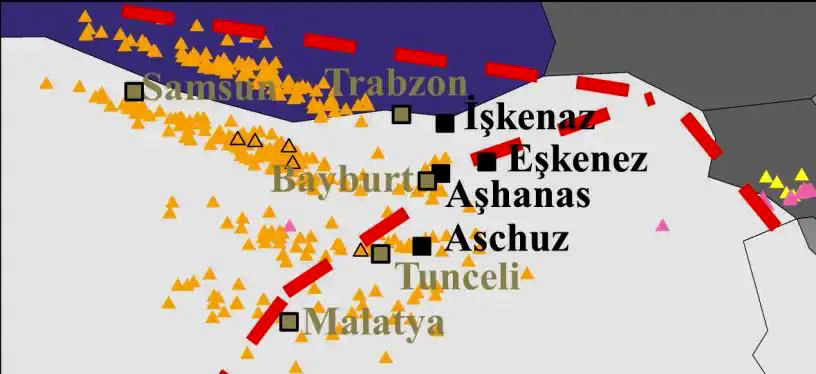
'Ashkenazic' Towns
Source
It should be obvious by now that we don’t rate the Bible as a historical document, so to present evidence from it in support of a theory may seem hypocrytical. However, the Bible contains the beliefs of the people who wrote it regardless of whether they are the truth or not and when it was written.
“In the Bible, the name of Scythians sounds as "Ashkuzi", which is a slight Semite distortion of the name of a Turk tribe "As-kishi". Not without reason, the Arabian authors of IX century (for example, Khvaresmi) called Scythia the country of Turks, the country of As-Kishi or Togusogus. So, the Bible fixed the ancient Turk tribe of Scythians, as "Ashkuzi". Appearing in this ethnonym word 'as' is also from Turk and means "to stray", "wander", i. e. to carry a nomadic life...
“...The kinship of Kimmerians and Scythians is also reflected in the Bible, where the ancestor of Kimmerians Gomer and the ancestor of Scythians Ashkuz are called brothers, the sons of Tagarm, the latter name being just the distorted name of the common Turk deity Tanhri (Teiri). We must note here that Tagarm was respected as an ancestor of the medieval Turk tribes of Khazars.” Source
“In the 10th-century History of Armenia of Yovhannes Drasxanakertc'i (1.15) Ashkenaz was associated with Armenia, as it was occasionally in Jewish usage, where its denotation extended at times to Adiabene, Khazaria, Crimea and areas to the east. His contemporary Saadia Gaon identified Ashkenaz with the Saquliba or Slavic territories, and such usage covered also the lands of tribes neighboring the Slavs, and Eastern and Central Europe. In modern times, Samuel Krauss identified the Biblical 'Ashkenaz' with Khazaria.” Source
Spot the Scythian!
Sarmatians, Dacians, Scythians, Huns, Khazars... take your pick. (1882) by Albert Kretschmer, painters and costumer to the Royal Court Theatre, Berin, and Dr. Carl Rohrbach, Public domain
The ‘Scythians’, in the broadest sense of the term, were highly influential and successful merchants who dominated and developed the Silk Road trade routes incorporating Greece, Persia, India and China (and much later Germany and northern Europe), in fact the entire Iranian Empire. Here we seem to have come full-circle, back in Shahnamehland.
It doesn’t seem to have occurred to anyone that this whole Ashkenaz phenomena, which seems to crop up everywhere and have a connection to “all the world and his wife” regardless of race, colour, creed or location, could be an integral part of the one overriding thing that all of these seemingly unrelated peoples and places have in common – the Silk Road. The picture emerging seems to us to illustrate that the term ‘Ashkenaz’ had something to do with a form of pre-cataclysm multi-national corporation. They developed a cipher language that is today called ‘Yiddish’, but it cannot have been called by that name originally as the word is clearly of German origin (Middle High German ‘jüdisch’) and is derived from the later post-cataclysm Germanic Yiddish. Perhaps it was what’s now called Palavi, a term used to refer to assorted Middle Iranian languages who’s written forms are all derived from a specific Aramaic script – as is Hebrew itself? The members of this corporation are identified as the Scythians, which is another of those illusive, vague catch-all names that has been applied to many different ancient tribes. The actual Scythian language is even more illusive as virtually nothing at all is known about it, which isn’t at all surprising given the general vagueness regarding their identity.

Note the absence of Jerusalem. (Click map to enlarge in a new tab.)
Source
This general lack of definition can be explained if we consider the features of the Silk Road trade routes. They are said to have covered 6,400 kms (4,000 miles) in total from China in the east to Europe in the west, traversing some of the most isolated and treacherous territories in the world. Goods were transported in caravans via a relay system, whereby local couriers would receive the merchandise from an earlier intermediate destination and then pass it on to the next. The logistics of this must have involved numerous intermediaries from different tribes and countries, involving issues such as local treaties, arrangements for security and all in different languages, but above all, it would require an overseeing, managing body. In an earlier quote we learned that Jews involved in the Silk Road trade “were descended either from Judaean emigrants or, more likely, from local converts to Judaism.”
Could this overseeing, managing body and all of the local intermediaries be one and the same organisation that is now referred to as ‘Judaism’? I’m not suggesting that the original founding Silk Road traders were “Jews” or that they practiced “Judaism.” However, once this Silk Road Traders Corporation established itself and then became highly successful, wealthy and therefore powerful, is it unreasonable to expect that it developed its own language, commercial code / religion, laws and identity? The actual organisation of this commercial society could well have resembled Freemasonry whereby the ‘hook’ is greed and commercial advantage. The organisation is a hierarchy with rituals and secret codes. There are severe penalties for betraying the secrets of the society and the upper echelons are open only to the elite. The three entry-levels of ‘Craft Freemasonry’ comprise the footsoldiers or local couriers, and the entire organisation is subdivided into regional zones. Of course, Freemasonry is not the only allusion that can be applied, that of the Mafia works equally well. Also the general set-up in The City of London with its guilds and autonomous authority is highly relevant.
The four “primeval” villages of İşkenaz, Eşkenez, Aşhanas and Aschuz are all in close proximity to Khazaria, the Black Sea and not all that far from the borders of all three Iranian kingdoms of Iran, Turan and Rum, but not close at all to the major Silk Road trade route. If you were going to set up an organisation to control and manage all of the trade traversing the Silk Road, this would not be the ideal place for your headquarters. Such a location would have left a much more significant mark on the landscape.
I realise this is all speculation or ‘Maybesian Thought’, but the official narrative has proven itself to be so unlikely, confused and even impossible, that speculation is the only option remaining. I prefer to think of it as a reinterpretation of the evidence in the light of the cataclysm and the National History of Iran. So, how does the introduction of the ‘Silk Road Corporation’ into the mix affect the overall picture?
If you have been following this series of articles from the beginning, then you will be aware that we have put a lot of emphasis upon the lack of evidence In the Shahnameh and also in terms of archaeological evidence, for the existence of the Achaemenid Empire. But, what if this elusive ‘empire’ wasn’t a political one, but a commercial empire that existed alongside or behind the scenes of the political one?
“Based in Western Asia, it was the largest empire the world had ever seen at its time, spanning a total of 5.5 million square kilometres (2.1 million square miles) from the Balkans and Egypt in the west to Central Asia and the Indus Valley in the east.” Sources: ‘East-West Orientation of Historical Empires’, Peter Turchin, Jonathan Adams & Thomas D. Hall, 2006. ‘Size and Duration of Empires: Growth-Decline Curves, 600 B.C. to 600 A.D’, Rein Taagepera, Social Science History, 1979.
It coincides exactly with the central and western area of the Silk Road trade routes. In the far east it stops at the Indus Valley.
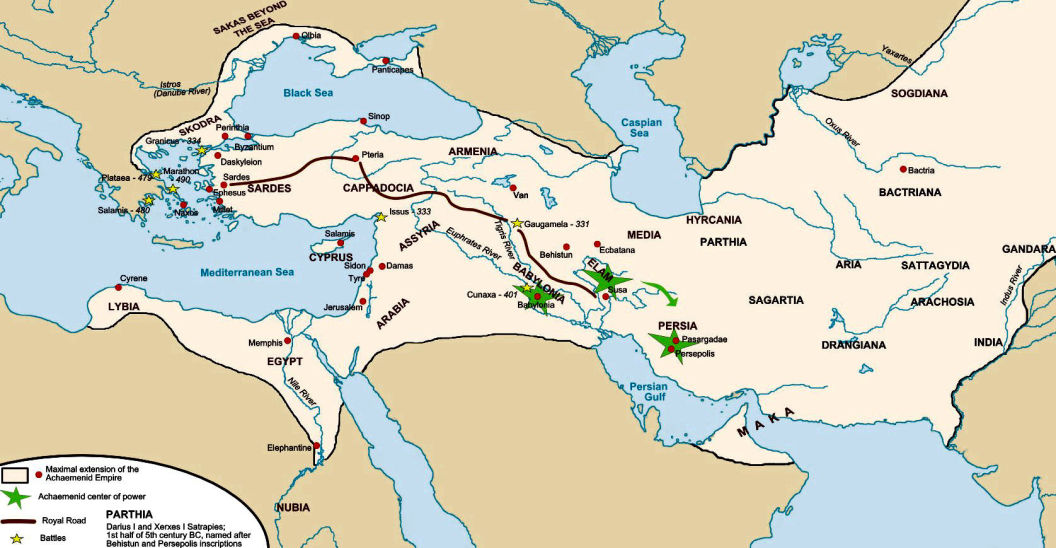
The Achaemenid Empire
Even the ‘Royal Road’ shown on the map is part of the Silk Road.
Fabienkhan CC BY-SA 2.5
“In the modern era, the Achaemenid Empire has been recognized for its imposition of a successful model of centralized, bureaucratic administration; its multicultural policy; building complex infrastructure, such as road systems and an organized postal system; the use of official languages across its territories; and the development of civil services, including its possession of a large, professional army. Its advancements inspired the implementation of similar styles of governance by a variety of later empires.” Source: ‘Achaemenid Dynasty’, Encyclopædia Iranica, Rüdiger Schmitt, 2011.
It sounds like an accurate description of the much much later East India Companies don’t you think?
“The chief authorities of administration and the military, the satraps and generals, are called... the king’s bandakā “vassals, followers” (not “slaves,” as the Old Persian word has been mistranslated formerly). They bore the “belt of vassalage” and therefore were named as “those equipped with a binding (Old Iranian *banda), a belt,” whose loyalty was generously remunerated and whose disloyalty was severely punished by the king.” Source
This is interesting as we hear a great deal about belts in the Shahnameh and always in relation to priests. It’s also a small step from a belt to a Masonic Apron...
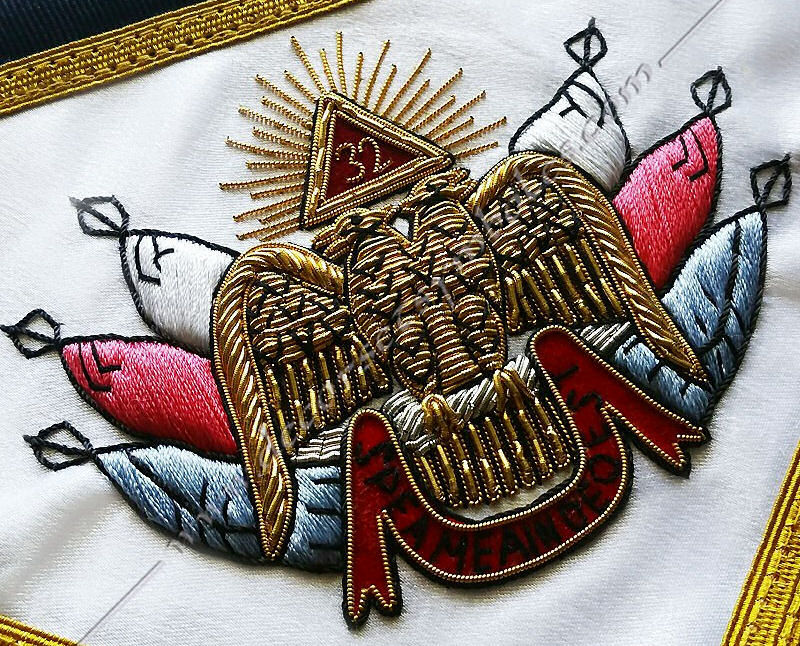
32nd degree masonic apron of the Ancient and Accepted Scottish Rite.
Note the double-headed eagle clutching SPEAMEAINUEOEST (?!*)
Source
“The uniform administrative language in the bureaucracy (of which we know little) and the general means of communication and diplomatic correspondence was Aramaic. Aramaic had already in Neo-Assyrian times become the diplomats’ international language; and its triumph over cuneiform as a writing system followed from that of papyrus as a writing material. Under Cyrus, Aramaic was used by administrative offices in the western part of the empire; under Darius, in the whole empire. Modern scholars therefore coined the term Reichsaramäisch, “Imperial Aramaic.” Aramaic documents have been found from Upper Egypt (Elephantine) and western Asia Minor (Sardis) to northwest India. In contrast, the royal inscriptions were written mostly in three languages and in cuneiform writing systems (Old Persian, Elamite, Babylonian; sometimes also in Hieroglyphic Egyptian and Aramaic)." (ibid)
If we try to stop thinking of the Achaemenid Empire as another ancient political phenomena and instead consider the possibility that it was a fundamentally commercial empire, then we can reconcile the mainstream narrative with Iranian National History as the two ‘empires’ could function simultaneously – one inside the other. Given the nature of the Zoroastrian belief system with its basis of contracts and covenants, it worked in harmony with the commercial side of the empire. The monotheism ensured loyalty and subservience to the political “King of Kings” as God’s representative on Earth and the priests were the liaison between the commercial empire and the political / religious one as both aspects were harmonised into one cohesive whole.
However, how do we get ‘Ashkenaz’ from ‘Achaemenid’ you may ask? Well, they both begin with ‘A’... There doesn’t appear to be any connection whatsoever. The Achaemenid Dynasty, according to the official story (but not the Shahnameh,) was founded by one Achaemenes (Haxāmaniš) located near Susa down by the Persian Gulf.
“Haxāmaniš means rather ‘characterized by a follower’s spirit’ (B. Schlerath, Die Indogermanen, Innsbruck, 1973, p. 36, n. 9) [rather] than ‘having a friend’s mind,’ as it is interpreted traditionally. The Achaemenids (‘descendants of Achaemenes’) are thus named after Haxāmaniš/Achaemenes, of whose history nothing is known.” Source
No wonder they redefined the meaning of Haxāmaniš because ‘having a friend’s mind,’ sounds either like he had someone else’s mind or that he could possess the minds of his friends. Mind you, ‘characterized by a follower’s spirit’ is a very strange description for the leader of a dynasty.
“The Achaemenids were initially rulers of the Elamite city of Anshan near the modern city of Marvdasht; (Briant, Pierre, 2002, from Cyrus to Alexander: A History of the Persian Empire.) the title "King of Anshan" was an adaptation of the earlier Elamite title "King of Susa and Anshan" (Brosius, Maria, 2006, The Persians.)
Susa is also called Shushan, Susiane, Shush and Susiana. If you combine any of those names with Anshan you still don’t get a satisfactory match with Ashkenaz, but then let’s not forget it was the Scythians who were originally referred to as the Ashkenazi and they were the various assorted membership of the corporation as a whole. A comparison would be the general membership of Freemasonry being referred to as ‘The Brotherhood’.

Phoenician galley (left) before city wall with four towers; two lions standing outward in exergue / Persian (Achaemenid) king and driver in chariot drawn by two horses.
Classical Numismatic Group, Inc. http://www.cngcoins.com CC BY-SA 2.5
Another strong possibility is that these early founders of the Achaemenids were actually the Phoenicians. They are yet another one of these numerous ancient empires about whom nothing concrete is known “since little has survived of Phoenician records or literature, most of what is known about their origins and history comes from the accounts of other civilizations and inferences from their material culture excavated throughout the Mediterranean Sea.” Source
Furthermore, the Phoenicians were again much more like a confederacy than an actual empire and their raison d’etre was commerce. “there is no evidence the Phoenicians viewed themselves as a single nationality.” (ibid) Phoenicia itself was supposedly in the Lebanon and it’s claimed to have had close relations with Israel. I wonder which Israel that might have been? Phoenicia and the Phoenicians don’t get mentioned in either the Shahnameh or the Bundahishn.
This is even more speculation, or reinterpretation of the evidence, so those who insist upon hard ‘facts’, please be warned, besides, we’ve seen all the supposed hard facts and they just don’t pass muster.
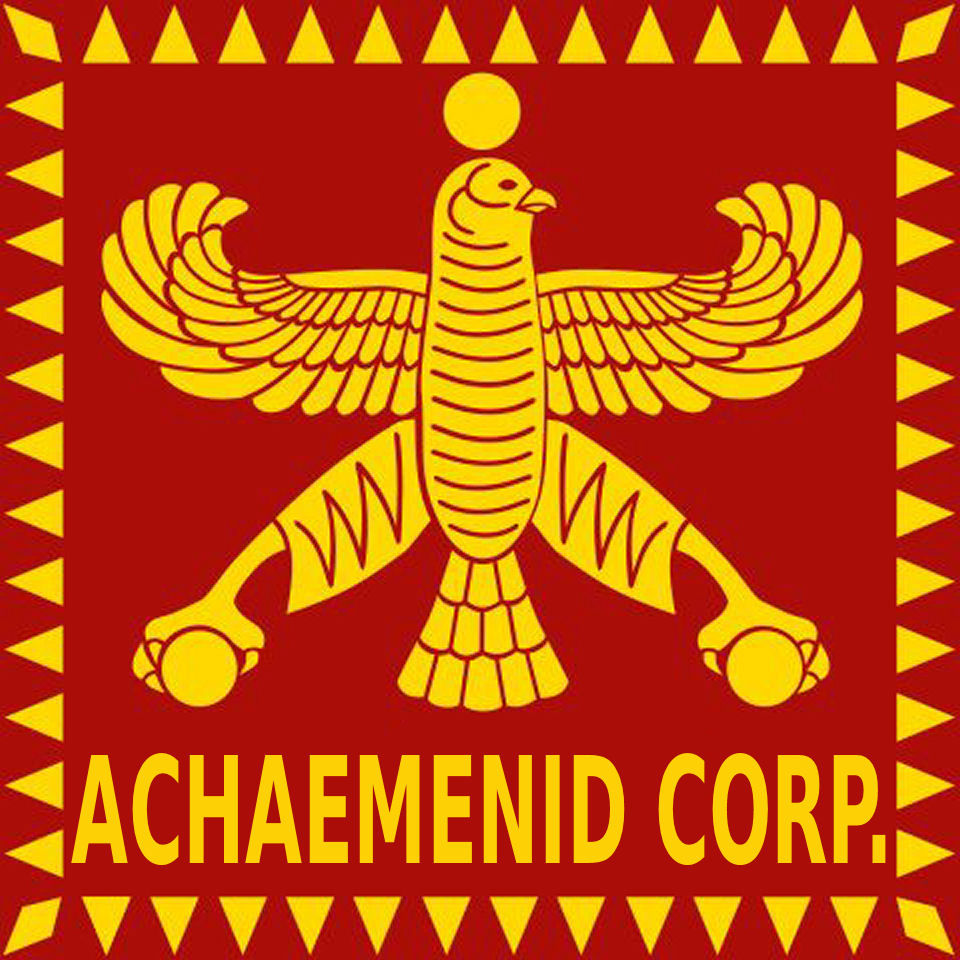
Sodacan, Public domain
Given the highly interwoven relationship between religion and the state, it’s not unreasonable to assume that Zoroastrianism was an integral part of the Achaemenid Corporation’s organisational structure. Therefore, the introduction of one implies the introduction of the other. In the Shahnameh we have seen that Zoroastrianism was introduced as a new religion to the Persian / Iranian Empire “by the sword” upon the installation of Goshtasp as ‘King of Kings’, who then shared his court with the prophet Zoroaster.
By means of a selfish and greedy nature, that caused conflict with his father, Goshtasp had abandoned Iran and fled to Rum. Following various shenanigans he ended up marrying the King of Rum’s daughter and becoming his new father-in-law’s favourite… and puppet. It seems he also became a Zoroastrian and from this we can assume that Rum was already Zoroastrian at that time, or at least the King’s Court was. Goshtasp went from Rum to Iran in order to take the throne after his own father's death. Specific chronology for this event is unavailable from the Shahnameh, however, the Bundahishin claims there were some 260 years from the introduction of Zoroastrianism until the coming of Sekandar who reigned for just 16 years, then the Ashkanians are said to have ruled for 284 years. We showed earlier in Part Two how this figure of 284 years doesn’t add up when compared with the descent of Ardeshir from Sasan, therefore it must, unfortunately, call into question all of the time spans given in the Bundahishin.
If we equate the development of the Achaemenid Commercial Empire to the rise of materialism in general, it doesn’t take a great stretch of the imagination to realise that it would attract those with a materialistic nature. Since materialism fosters greed and greed implies rivalry, competition and ruthlessness, then clearly those who would be the most useful to the organisation would be people who excelled in those areas.
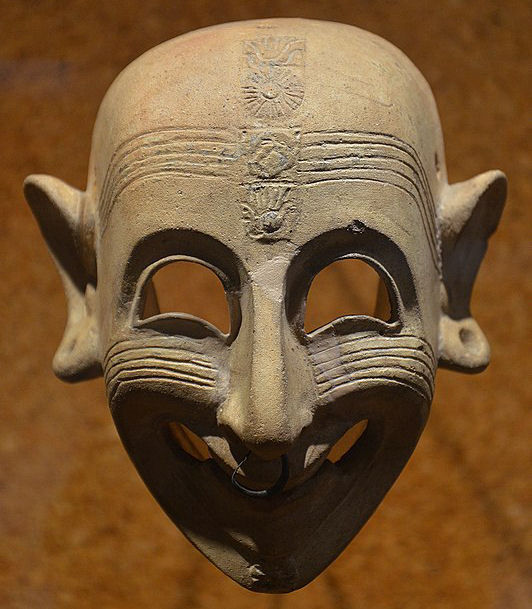
Phoenician grinning mask
Carole Raddato from FRANKFURT, Germany, CC BY-SA 2.0
If we combine this with the situation whereby the entirety of society was run and managed by a religious hierarchy, then at the helm of the Commerical Empire we would expect to find a ‘Kabal’ of ruthless materialists beneath the religious facade.
What may be one of the earliest comments on the Phoenicians comes from Homer in the Odyssey…
“A shrewd Phœnician, in all fraud adept,
Hungry, and who had numerous harmed before,
By whom I also was cajoled, and lured
To attend him to Phœnicia, where his house
And his possessions lay; there I abode
A year complete his inmate; but...
To Lybia then, on board his bark, by wiles
He won me with him, partner of the freight
Professed, but destined secretly to sale [to be sold],
That he might profit largely by my price.
Not unsuspicious, yet constrained to go,
With this man I embarked.”
In the Old Testament, the Torahs and the official mainstream narrative, much is spoken of how the Achaemenid Empire affected the re-establishment and development of Judaism after the Babylonian exile. If we consider the lack of evidence for the Achaemenid Empire as a real political entity within the Iranain National Historical record and the archaeological record, along with a similar lack of evidence for the existence of Judea, the Hebrews, the Phoenicians, ancient Israel and Jerusalem, then a different picture emerges.
In the ancient maps below, see if you can find Judea, Israel, Jerusalem, Phoenicia or even Egypt, as named locations (click to enlarge in a new tab...)
“World map according to ideas by Posidonius (150–130 BC), drawn in 1628 by cartographers Petrus Bertius and Melchior Tavernier. Many of the details could not have been known to Posidonius; rather, Bertius and Tavernier show Posidonius's ideas about the positions of the continents.”
Petrus Bertius, Public domain
“Eratosthenes (276–194 BCE) drew an improved world map, incorporating information from the campaigns of Alexander the Great and his successors.” Edward Bunbury, Public domain
Evidence for the influence of Zoroastrian and other belief systems upon Judeaism and Christianity are plentiful, but to detail it all here would be too great an undertaking. Even the Phoenicians made a contribution…
“Special sites known as ‘Tophets’ were allegedly used by the Phoenicians ‘to burn their sons and their daughters in the fire,’" and are condemned by Yahweh in the Hebrew Bible, particularly in Jeremiah 7:30–32, and in 2nd Kings 23:10 and 17:17. Later scholarship differs. William Dever, sometimes called the 'dean of biblical archaeology,' writes that it is out of 'prejudices, ancient and modern,' that the 'myth of ‘cult prostitution’' arose. He comments that 'other texts in addition to II Kings 23:10 unhesitatingly describe child sacrifice among the Israelites', and points to I Kings 16:34. Notwithstanding differences, cultural and religious similarities persisted between the ancient Hebrews and the Phoenicians.” Source
It’s from the same source that we also learn how “religious rites were primarily for city-state purposes; payment of taxes by citizens was considered in the category of religious sacrifices.” Sounds eerily familiar.
The following links are provided for further reference:
‘How Persia Created Judaism: Persian and Jewish Religion’ by Dr Mike D. Magee
‘Zoroastrianism, Judaism, and Christianity are all connected’ by Jack Son
‘Hebrew Goddesses, Origins of Judaism & Persia’ by Dr. Michael David Magee
‘How the Bible Borrowed from Other Stories’ by Red Johnson
‘10 Ways The Bible Was Influenced By Other Religions‘ by Melloson Allen
So, where does that leave us having been brainwashed for the past 1000 or so years into believing that everyone is descended from Adam and Eve, through Abraham and Noah? Well, let’s reconsider the biblical conflict between Abraham's wife Sarah and her maidservant Hagar, over their sons Isaac and Ishmael, in the light of the Achaemenid Corporate Empire.

Abraham dismisses Hagar and Ishmael
by throwing some kind of liquid over them.
Georg Pencz, CC0
Ultimately it is Isaac who perpetuates the Abrahamic covenant due to his miraculous birth by the elder and infertile Sarah, while Ishmael becomes the father of another ‘great nation’ that will later be associated with Islam. Then Isaac’s twin sons, Jacob and Esau, engaged in sibling rivalry over who will receive their father's birthright. Doesn’t this sound familiar? Like an old gangster movie? Are all these tales of internecine rivalry actually power struggles amongst the Achaemenid mafiosi? Could Abraham have been the original Godfather? The “covenant,” or contract, is symbolised by a ring – the very symbol of Zoroastrianism. The same ring worn by Popes, Archbishops and the upper echelons of religious hierarchies… Godfathers, Freemasons.
What we are suggesting here is that ‘proto-Judaism’ was born when the Zoroastrian belief system was adapted specifically by and for the elite of the Achaemenid Corporate Empire. It’s very important to bear in mind that the Persian / Iranian Empire always consisted of three distinct kingdoms: Iran; Rum and Turan. At no point in the Iranian National History were these three kingdoms ever consolidated into one, not even during or after the coming of Sekandar / Alexander. The official narrative claims that its darling political Achaemenid Empire was one consolidated kingdom that covered the same area as the Persian / Iranian Empire and its three kingdoms. These two contradictory views only reconcile if the Achaemenid Empire was a separate quasi-religious commercial empire working within all three kingdoms of the Persian / Iranian Empire.
The fiction that has developed around the almighty Achaemenid Empire was specifically designed to give it ‘provenance’, a place in ancient history that bestows upon it seniority, priority and therefore justification for its existence.
We have seen that Zoroastrianism came to the Iranian Empire from Rum – it was Ruman. It was enforced in Iran by the installation of a ‘King of Kings’ who was a convert at best or a Ruman puppet more likely. It spread to Turan “by the sword” after various religious wars. The scenario we are proposing regarding the development of a specific religion by and for the elite of the Achaemenid Corporation had maybe about 250 years during which to develop before the coming of Sekandar / Alexander. Sekandar came from Macedonia in Rum, the original source of Zoroastrianism. He inherited the throne of the Kingdom of Rum from his father (step-father actually, his real father was Darab, King of Kings in Iran.) He came with a mighty force of warrior-priests under the auspices of the Homa bird of royal fortune, an invocation to Jupiter / Zeus and the “beloved cross.” Quite a cocktail really.
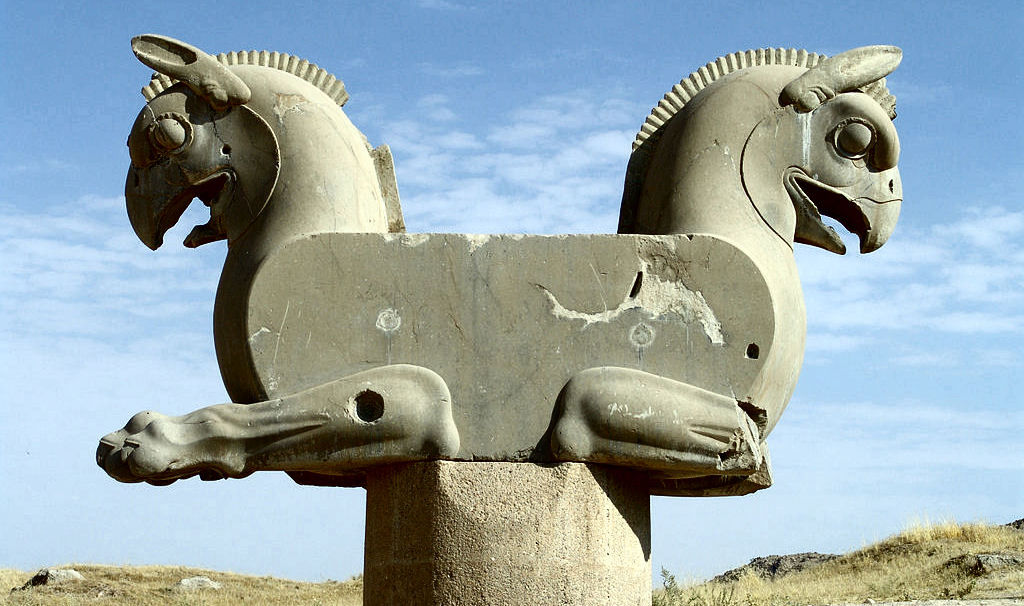
The mythical statue of the Homa bird in Persepolis, Iran.
درفش کاویانی (Derfash Kaviani) CC BY-SA 3.0
Is this image above the origin of all the later double-headed ‘eagles’ that abound in flags and coats-of-arms? Does it represent the the two ‘faces’ of the external political entity and the internal commercial one?
We have already mentioned how Alexander's / Sekandar’s victory over Iran was assisted from within by Zoroastrian officials, who actually dealt the mortal blow to Dara, the Iranian King of Kings and half-brother to Sekandar himself. If we re-examine this in the light of the Achaemenid Corporation, something more sinister and dastardly emerges...
Let’s assume that the elite religion of the Achaemenid Corporation, seeing itself as God’s ‘Chosen People’, decided on a strategy to develop an offshoot religion through which it could maintain its elite position whilst exerting control of not only the associated external partners of the corporation itself, but everyone else as well. Sekandar was all of 11 years old when he succeeded to the throne of Rum and embarked upon his mission to conquer the world. It’s not difficult to image someone of that age being highly suggestible and malleable.
Looking behind and beyond the Bayesian interpretations of the Shahnameh translators, it appears that this new religion was another adaptation of the original ‘pagan’ beliefs of the time, combined with Zoroastrian elements and influences from the new elite religion of the Achaemenid Corporation. As we have stated before and covered in some depth in our 'Legal-Fiction, Cruci-Fiction – the Strawman and the True Cross’ article, the symbol of the cross was in use long before Christianity. It formed part of the sun-god ritual whereby he died in mid-winter and was reborn upon crossing the vernal equinox.
Jupiter or Zeus may well have been chosen by the Shahnameh translator as a representative match for an unfamiliar god in the original text, particularly as the kingdom of Rum is always rendered as either Greek or Roman depending upon the translator’s supposition of the prevailing chronology. We are informed of a ‘Christian Tradition’ whereby a marriage contract is drawn up, but this has never been known outside of Judaism’s Ketubah contract. At one point Sekandar swears by the Holy Ghost and the Messiah’s Faith. Again In Judaism the Holy Ghost, or Holy Spirit, has the exact same connotation as “Farr,” in Zoroastrianism, i.e. the divine force, quality, and influence of God over the Universe or over his creatures.
The concept of a Messiah is not found in Zoroastrianism, but is common to both Judaism and Christianity. Originally the word Messiah derives from “anointed one”. If we refer to the translator’s preference for Greek and Roman references then we arrive at ‘anoint’ from “Church Latin chrisma, from Greek khrisma "an unguent, anointing, unction," from khriein "to anoint." Source
Chrisma was "oil mingled with balm, a sacred ointment consecrated and used in Church rites, late Old English chrisma.” (ibid.) So, the anointed one was someone to whom Chrisma had been applied during a ritual. This same etymology gives us the word ‘Charisma’, “Latinized form of Greek kharisma ‘favor, divine gift,’ from kharizesthai ‘to show favor to,’ from kharis ‘grace, beauty, kindness’ (Charis was the name of one of the three attendants of Aphrodite), which is related to khairein ‘to rejoice at’." Source
From this we may as easily assume that the term “Messiah’s faith” could just as easily refer to Jesus Christ as it does to the faith of one who has been anointed with the gift of divine grace and favour. As none of the events of the New Testament are ever mentioned in Iranian National History, then it’s probably wiser to choose the later. Mithras is often compared with Jesus, although again, he is never mentioned in the Shahnameh, but he does feature in later Zoroastrian texts and is claimed to have been worshipped within a specific Roman military cult, however, that would have to be the later actual Romans and not the facsimile ancient ones… unless it wasn’t a Roman cult at all, but someone else’s entirely.
When Sekandar invaded Iran and killed his half-brother Dara, he made himself the “New Dara”. In the Shahnameh at least, he doesn’t seem to have enforced a new religion, which is exactly what one would expect to have happened if that new religion actually was Christianity, as implied by the translator. There were no baptisms recorded and no churches built. What he did change was the relationship between god and man. Previously the King of Kings’ special relationship with God was one of cooperation and they were connected by “Farr” which is akin to ‘Holy Spirit’. This Farr was not exclusive to the King of Kings, it was also found in many other important characters within the Shahnameh. When Sekandar came he demanded that he should be worshipped as God’s earthly representative. He placed himself between God and man, very much like the later Roman cult of the Emperor and the Catholic Popes. He isolated man from God and made himself a “barrier” as Ferdowsi (the author) himself puts it in the Shahnameh. Whilst there are no claims that he set up statues of himself in temples, as there are in the mainstream Alexander accounts, there is an indication that he destroyed many Zoroastrian Fire temples and sought out any legitimate heirs of the deposed dynasty and murdered them. This whole Sekandar episode may well have been a phase in the development of the religious attitude that the Achaemenid Corporation was trying to cultivate by placing a barrier (themselves, no doubt with a toll booth) between man and god.
Curiously there is an episode in Sekandar’s assault upon the political empire of Iran that links to the tale of Isaac and Ishmael related a few paragraphs back. When Sekandar made his way through Arabia he encountered a descendant of Ishmael near Mecca, named Nasr, who revealed the “secrets of his lineage.” In many ways this is a bizarre episode in the Shahnameh as the entire biblical concept of descent from Abraham, the Hebrews and Israel etc., are totally absent from the poem. As such it has no context, or maybe the context is an entirely different one. However, we should bear in mind that the Shahnameh was copied extensively and was very popular with the various Islamic Sultans, therefore the entire incident may have been concocted to appeal to them. This would also explain the other out of context, solitary mention of the Jews in relation to their ridiculed defeat of Jesus.
Anyway, Sekandar assists Nasr and his tribe by freeing them from the tyranny of a rival tribe. He “sought out everyone he could find from the family of Jaza’ and had them killed: the children’s souls were parted from their bodies, and not one of his race was left alive.” Following this genocide, Sekandar undertook a pilgrimage to the shrine at Mecca, scattering gold coins among the people of Esmail (Ishmael) wherever he went.
So, if this episode doesn’t have a biblical context, what else could it mean? If we apply the context of the Achaemenid Corporate Empire to the situation, then it may offer a more satisfactory explanation. Let’s assume that Sekandar’s overall mission had something to do with the corporation’s imperialistic ambitions. Maybe certain rival commercial factions were causing problems for them or refusing to cooperate. In Arabia for example, perhaps the ‘Tribe of Jaza’ (possibly Qahtan Arabs) were in control of all the trade passing through the area. Ishmael apparently had one daughter and 12 sons (The One plus Twelve coven again.) These sons gave rise to ‘The Twelve Tribes of Ishmael’... which sounds so close to ‘The Twelve Tribes of Israel’ that you have to wonder if it was a typing error. They were supposedly the sons of Isaac so they really should have been ‘The Twelve Tribes of Isaac’ not Israel. Israel was supposed to be a place, a Promised Land, not a person, so how could it have spawned any tribes? Anyway, the Ishmaelite ‘mob’ needed Sekandar’s help to take control of the Yemen on behalf of the Achaemenid Corporation. So, there you have it, the Ishmael mob controlling Arabia and Egypt while the Isaac mob control the rest. Maybe later these would become the Sephardics and the Ashkenazim?
Another possibility presents itself from within the murky depths of the mainstream narrative concerning the Achaemenids and the Phoenicians…
“As Cyrus began consolidating territories across the Near East, the Phoenicians apparently made the pragmatic calculation of "[yielding] themselves to the Persians." Most of the Levant was consolidated by Cyrus into a single satrapy (province) and forced to pay a yearly tribute of 350 talents, which was roughly half the tribute that was required of Egypt and Libya...]
“...In fact, the area of Phoenicia was later divided into four vassal kingdoms—Sidon, Tyre, Arwad, and Byblos—which were allowed considerable autonomy. Unlike in other areas of the empire, including adjacent Jerusalem and Samaria, there is no record of Persian administrators governing the Phoenician city-states. Local Phoenician kings were allowed to remain in power and even given the same rights as Persian satraps (governors), such as hereditary offices and minting their own coins. The otherwise decentralized nature of Persian administration meant the Phoenicians, though no longer an independent and influential power, could at least continue to conduct their political and mercantile affairs with relative freedom.” Source
Does that sound like a change of management within the Phoenician mafia bringing them firmly under Achaemenid control? As we will see, this concession to the local Phoenician governors will happen again shortly… in the next paragraph after the image in fact…
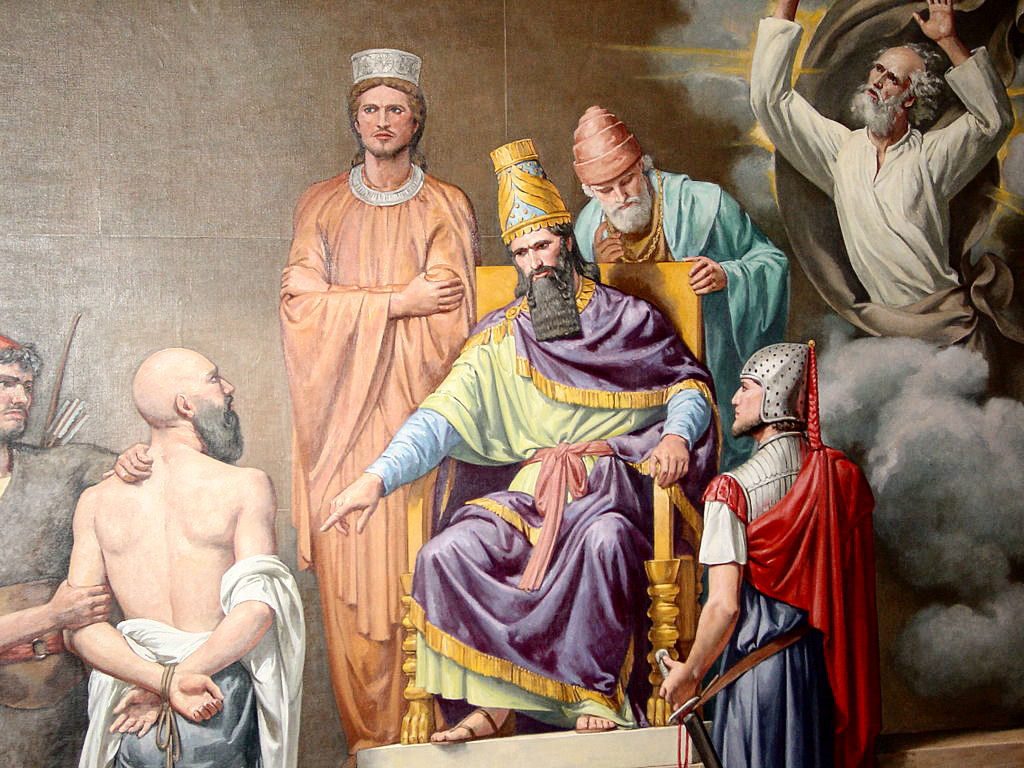
Hiram Abiff, Phoenician King of Tyre. In Freemasonry he is the Master Craftsman,
Chief Architect of Solomon’s Temple and ‘the Widow’s Son’.
Ben Schumin, CC BY-SA 2.5
Sekandar didn’t name his successor, not because he didn’t have the opportunity, but because he chose not to, or was persuaded otherwise by the King of Babylon. Instead, the kingdom of Iran was left under the control of “The People’s Kings” as opposed to a “King of Kings.” These were all loyal local elites and they were collectively known as the Ashkanians. The translator of the Shahnameh claims that they were the Parthians and that their name comes from Ashk who was their founder. This isn’t supported by the text and why would they have 2 names? If they were the Parthians then why were they called the Ashkanians in the text?
This vagueness allows room for the speculation that the name ‘Ashkanian’ is closely related to Ashkenazi who could just as easily have been the local ‘Regional Grand Masters’ of the Achaemenid Commercial Empire.
What’s interesting is that the kingdoms of Rum and Turan were not given the same treatment as there is no mention of “People’s Kings” in either of those kingdoms, only in Iran. It was also in Iran that the Sassanian dynasty later deposed the Ashkanians and re-established a “King of Kings” in Iran.
Just how the Achaemenid Corporation’s elite inner cult, their ‘Religion of the Peoples’ and Sekandar’s barrier all developed into Judaism, Christianity and Islam, and when this took place, is once again going to have to be a matter of speculation based upon a re-interpretation of events, but from what we've seen previously, it looks most likely that it all actually took effect after the cataclysm of the 10th century. However, that doesn't mean that it wasn't already in preparation before that event though. Hopefully, we will be able to demonstrate how it happened a bit later.
We have already discussed the Cairo Geniza earlier. However, it has more to offer in our search for the Achaemenid Corporation...
“Among the non-literary items there are legal documents and private letters. Also found were school exercises and merchants' account books, as well as communal records of various sorts (Robert Brody, Spring 1999 – Winter 2000, ‘Cataloguing the Cairo Genizah’)… Many of these documents were written in the Aramaic language using the Hebrew alphabet…
“They also demonstrate that the Jewish creators of the documents were part of their contemporary society: they practiced the same trades as their Muslim and Christian neighbors, including farming; they bought, sold, and rented properties…
“Judaic scholar Shelomo Dov Goitein created an index for this time period… He identified material from Egypt, Israel, Lebanon, Syria (but not Damascus or Aleppo), Tunisia, Sicily, and even covering trade with India. Cities mentioned range from Samarkand in Central Asia to Seville and Sijilmasa, Morocco to the west; from Aden north to Constantinople; Europe not only is represented by the Mediterranean port cities of Narbonne, Marseilles, Genoa and Venice, but even Kiev and Rouen are occasionally mentioned (Goitein. A Mediterranean Society, vol. 1.)…
“Jewish bankers in Old Cairo used a double-entry bookkeeping system which predated any known usage of such a form in Italy, and whose records remain from the 11th century AD, found amongst the Cairo Geniza.” (‘Medieval Traders as International Change Agents: A Comment’, Michael Scorgie, The Accounting Historians Journal, Vol. 21, No. 1, June 1994.)” Source
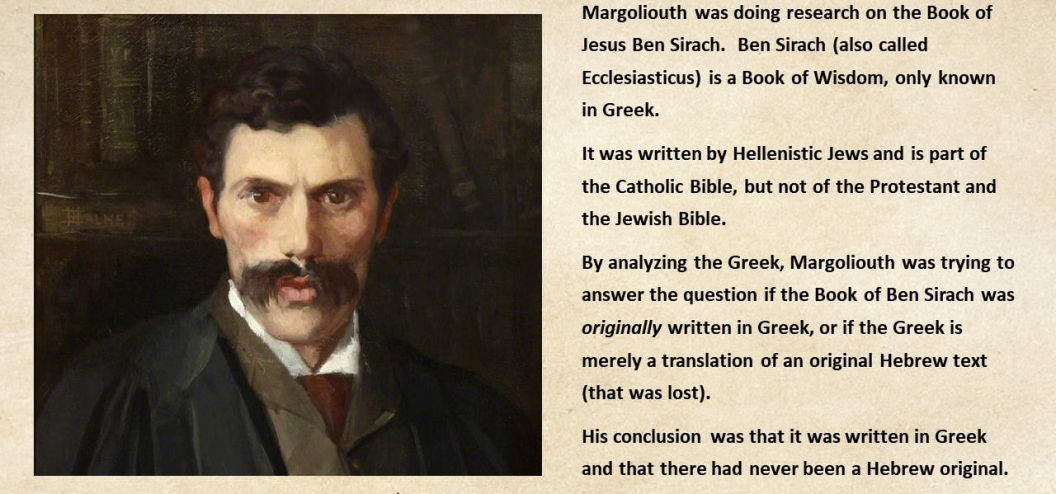
Professor David Samuel Margoliouth, of Cambridge University, was involved in the original examination of fragments from the Cairo Geniza. Source
It shows perfectly the close link between the Jews and the Arabs, especially the Fatimid dynasty, which is claimed to descend from Mohammed. Once again, it also shows the Jews using Aramaic, a supposedly dead ancient language written in Hebrew script, right up through the Middle Ages – in exactly same manner as Yiddish and Ladino. It should be noted that even the online Jewish Virtual Library claims that...
“...some of the fragments found in the Cairo Genizah [estimated at 500 B.C.E.– 500 C.E. belong, without doubt, to the beginning of this period.” Source
So, it seems that the Ishmael ‘mob’ were highly successful in their takeover of the Arabian sector of the Achaemenid Corporation, as the Fatimid dynasty claims direct descent from Ishmael via Mohammed. If we follow this ‘Maybesian’ thinking through, then maybe Islam was their version of the previously proposed strategy to develop a religion by which it could control, not only the associated external partners of the corporation itself, but everyone else as well.
Abu Bakr (who was also mentioned in Rostam’s /Ferdowsi’s Shahnameh prediction) was a very wealthy Arab merchant, in fact just the sort who would benefit from a road being driven through what is now Iraq, which was initially the stated goal of the Arab incursion into Persia as recorded in the Shahnameh. He was also the senior companion, father-in-law and financial backer of Muhammed, who gave him the title "al-Siddiq" ('the Truthful / Righteous'.)
Here we have an explicit link between the Achaemenid Corporation and Islam in the joint goals of the Arab / Muslim invasion of the Persian Empire. One goal, which is presented as an incidental one in the Shahnameh, is clearly a commercial one. The other, which is presented front and centre with all the bells and whistles until it immerses the other, is a religious crusade. This obfuscation of commercial interests within a religious facade set the standard for future events.
We have deliberately ignored any chronology in our speculations regarding the Achaemenid Corporation, but we have already presented our case for the Islamic conquest of the entire Iranian Empire being in a very large part due to the 10th century cataclysm in Part Two. However, it must be noted that the eventual resulting Islamic Empire was once again identical to that claimed by the mainstream for the political Achaemenid Empire – in other words the Silk Road Trading ‘Empire’. This should come as no surprise given that a highly organised commercial ‘empire’ with control of all the major means of communication, with vast resources at its disposal and a loyal ‘international’ following, would have recovered much more quickly from the 10th century cataclysm than any purely political faction.
If we jump ahead to the Rashi and Rambam events of the Middle Ages whereby Rashi established the now ‘Jewish’ Ashkenazi in northern Europe and Rambam did the same with the now ‘Jewish’ Semitic Sephardis in Spain, the Mediterranean and the Middle Eastern areas, we find the completed resurgence of the pre-cataclysm Achaemenid Commercial Empire, but on an even larger scale that incorporated northern, western and central Europe. The ploy of encasing commercial goals within religious crusades went into overdrive and offers a much more convincing explanation as to why the Christian Crusaders were often called Ashkenazi. However, the ‘canon-fodder’ Crusaders were either Christians or Muslims, whilst the elite who controlled them and enacted their commercial ambitions within the religious facade they provided were the Ashkenazi or the Sephardics.
It’s clear that the 10th century cataclysm presented a huge opportunity for the Achaemenid Commercial Corporation to expand into Europe. Why it couldn’t do so before is a significant part of the mystery that surrounds the pre-cataclysmic period.
The conclusions drawn from any speculation, or reinterpretation of events, can only be meaningful if they hold true when compared to a known set of similar events. Well, given the total chaos that comprises the chronology of our so-called history you may think that such a comparison is impractical. However, maybe not...
There was an ancient civilisation that had its own highly developed culture and a belief system which wasn’t really a religion as such, but rather a way of life. This civilisation had managed to survive more or less intact well into the 17th century. They had advanced scientific and astrological knowledge and a system of medical care. It wasn’t known for its warlike aggressivity, more for its tolerance. It had a vast and highly colourful pantheon of gods, goddesses and nature spirits. Obviously, it couldn’t be allowed to carry on like that...
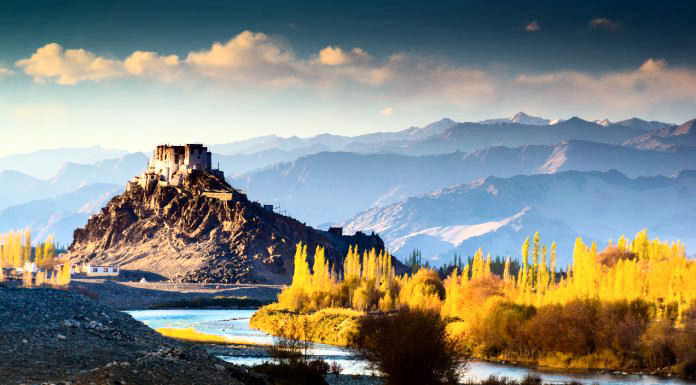
Stakna Monastery, Ladakh, Kashmir
Source
The demise of this once great civilisation all began with greed on behalf of the, by then, well established northern European Ashkenazi Commercial Empire. Within that empire the Dutch East India Company were in competition with the British East India Company over the spice trade… there was a French one involved as well I think. Four all out wars were fought between England and Holland over this. The English monarch, Charles II, granted the British EIC the rights to autonomous territorial acquisitions, to mint money, to command fortresses and troops and form alliances, to make war and peace, and to exercise both civil and criminal jurisdiction over the acquired areas. In this we see the exact same relationship as we did between the political Persian “King of Kings” and the commercial Zoroastrian priests and ‘Scythians’ of the original Achaemenid Corporate Empire. (It's also highly reminiscent of the Popes sending Crusaders off to take Jerusalem and murder Pagans.)
Prior to this, both the Jews and the Jesuits had been busy infiltrating the Vedic culture of India. The Rothschild financed British EIC, transported a shipload of Bene Israel Jews from Kerala and dumped them off the coast of Konkan, just a short distance north. They proceeded to wade ashore claiming to have been shipwrecked and called themselves the Chitpavan Brahmins. This incident was backdated historically and claimed to have occurred over 2,000 years previously, which is a trademark feature of the entire process under discussion, whereby a false prerogative of seniority and antiquity had to be established.
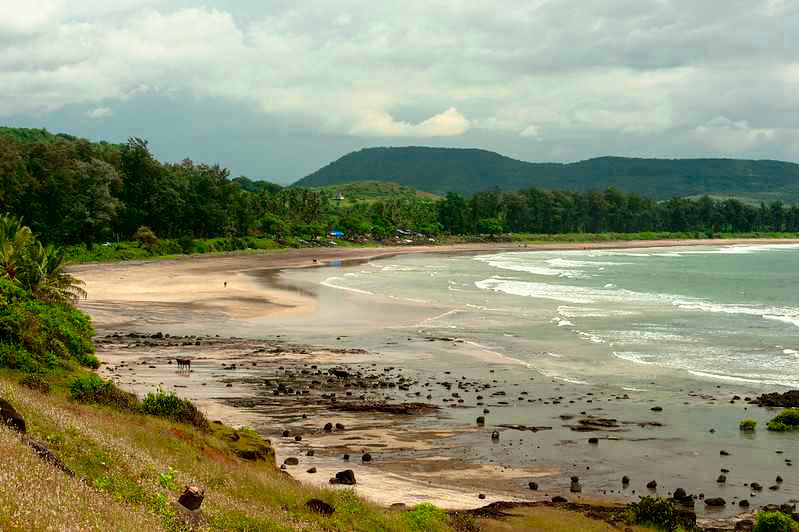
Konkan
Source
In time they became Peshwas, or Prime Ministers, of the Maratha Kingdom. Under their rule it broke down into a loose confederacy of individual Peshwas, or local despots, most of whom collaborated with the EIC to eat away at the Mughal Kingdoms through the provision of weapons, including cannons and rockets. So, outwardly this appeared to be the locals against the Muslims, but fundamentally it was the Achaemenid Corporation against India. Later, in the early 19th century what was remained of the Maratha Kingdom (under control of the Peshwa elite Chitpavans) was turned over entirely to the EIC. However, all is not what it seems as even Wikipedia has this to say:
“This feudal Indian Muslim service gentry, which performed both clerical and military service for the Mughal Empire and the British, provided cultural and literary patronage, which acted even after the fall of Muslim political power, as preservers of Indo-Persian traditions and values. They consisted of a group of feudal elites with an interest in preserving their power and position in relation to Hindus and the British.” Source
Therefore, what happened was that the British EIC branch of the Achaemenid Corporation provided arms and support via its Chitpavan crypto-Jewish Peshwas to destroy the Islamic Mughal Empire. Obviously, the “feudal Indian Muslim service” elite (i.e. also the Achaemenid Corporation) were doing their best to undermine the Mughal Empire from the inside, right up until the point of its destruction and takeover by the British EIC. They then continued to provide the exact same services for the British EIC. Chitpavan Brahmins have long since infiltrated Indian society and culture at every level.
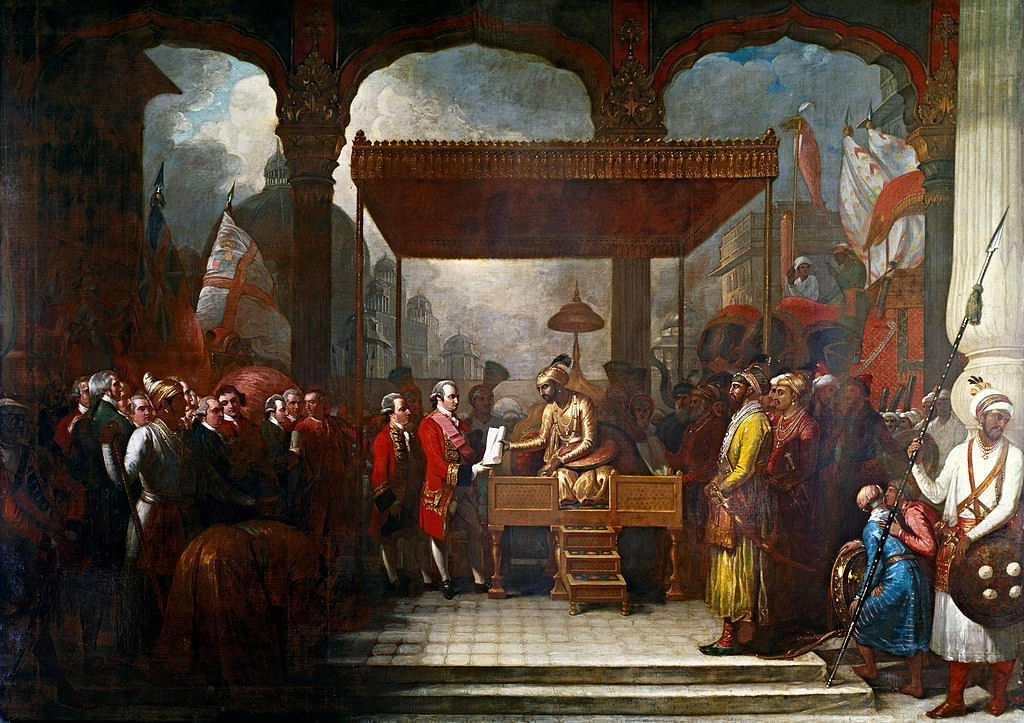
The Mughal emperor Shah Alam hands a scroll to Robert Clive, the governor of Bengal (Treaty of Allahabad), which transferred tax collecting rights in Bengal, Bihar and Orissa to the East India Company, August 1765
Benjamin West, Public domain
At the same time as all this was underway the Jesuits had been sending ‘missionaries’ into India from as early as 1542. Whilst some inevitably became ‘saints’, others were working as undercover agents to infiltrate the Vedic culture. Through deception, a copy of the Rig Veda was obtained in 1606 after a Brahmin was tricked into dictating it to Roberto de Nobili, a Jesuit who had thoroughly integrated himself into the Indian culture and was assuming the role of a fellow Brahmin.
“From the time that missionaries first went to India, it has always been thought to be impossible to find this book (the Veda), which so much is respected by the Indians. And, indeed, we should never have succeeded, if we did not have Brahmans, who are Christian, hidden among them.” Father Calmette as quoted by Max Muller in ‘Physical Religion’
“When Calmette succeeds in getting hold of the Vedas and has, with the help of some Brahmans, read and understood its sitktas, ―he is not bent on extracting from the Veda passages showing the - depravity and absurdity of‖ the ancient Indian religion... No, the very contrary. We have extracted from it texts which serve to convince them of the great fundamental truths; the unity of God, the qualities of the true God, and a state of blessedness and condemnation are all in the Veda. But the truths which are to be found in this book are only scattered there like grains of gold in a heap of sand.” Max Muller, ‘Physical Religion’
In other words, they identified commonalities between the existing sacred texts of the natives and the Biblical dogma they wanted to force upon them. There is a clear comparison here with the “Beloved Cross” of Sekandar being gradually transformed from a Pagan symbol into a Christian one.
Father Calmette, who was also in an undercover role, began to add his own gems of Christian truth to his collection of Vedic manuscripts. He added 172 such ‘truths’ to his work ‘Satyaveda sara Sangraham’ and also translated the Christian works of Roberto de Nobili into Sanskrit, namely ‘The great catechism of the faith’ and ‘The Refutation of the transmigration of souls’. He also encouraged a Brahmin convert, named Mangalagiri Anandai to compose another poem entitled ‘Vedantcirasayancim,’ which at times is attributed to Satyabodha Swami Lavaru (alias Fr. Calmette.) He then claimed to be preaching a ‘New Veda’ and began baptising converts into this new Veda – which was, of course, Christianity.
This is very interesting and provides a vital missing piece to the jigsaw puzzle of exactly how Christianity and Islam were insinuated into the existing Pagan belief systems through forgery and deception as well as “by the sword,” of course.

Interestingly, Sanātana Dharma incorporates a similar tree symbolism to that of the Norse Yggdrasil (Tree of Life.)
Source
From that point on the Indian philosophy of Sanātana Dharma was desecrated, manipulated and falsified beyond recognition and turned into the religious dogma of ‘Hinduism’. The invaders completely redefined Sanātana Dharma, which was then to be used as the key to destroy both it and the Vedas, then transform them into Christianity and biblical dogma. The generosity and tolerance of the Indians was of great assistance to the Jesuits in this endeavour. This process is reminiscent of the introduction of the new Zoroastrian religion into Iran which redefined the previous Pagan beliefs and introduced the concept of contracts and covenants, amongst other things. It’s a process that must have developed even further in a similar manner until blossoming into either full-blown Christianity or Islam.
This is a familiar part of the process in that Christianity similarly redefined all other religions as “Paganism,” “Heathenism,” “Idolatry” or just plain “Devil Worship.” These were then demonised and over time the label “Pagan,” just like the label “Hindu,” passed into common use so that even today the people who follow these beliefs still call themselves by these derogatory names.
In 1761 Voltaire presented the Ezour-veda to the Royal Library at Paris. It was a total forgery written by Calmette. It sparked the beginning of European studies on the Vedas and the religious and philosophical literature of ancient India… or rather the fake religious and philosophical literature of ancient India.
On the political front, the EIC made full use of its new powers and began their reign of terror in India in 1757 and by 1818 they ended up in total control of all trade and the entire economy throughout India and thus its government.
As the latest invaders in a long line of attempted incursions, including the Portuguese, the Dutch and the Timurids, the British wanted a justification for their own arrival. Besides this, the British, who saw themselves as descendants of the ancient Romans, had just lost 13 of their colonies in America. This obviously had an effect within the appropriate circles in terms of empirical pride. Coincidentally, or not, Edward Gibbon published the first volume of his book ‘The History of the Decline and Fall of the Roman Empire’ in the same year. This six volume tome was an attempt to link an imaginary ‘Pax Britannica’ – the period of British-dominated world order – with an equally imaginary Pax Romana.
According to the official narrative, the Pax Romana ('Roman peace') is a roughly 200-year-long timespan of Roman history which is identified as a golden age of increased and “sustained Roman imperialism, relative peace and order, prosperous stability, hegemonial power, and regional expansion.” (Source) It’s dated as beginning with Augustus in 27 BC and lasting up until 180 AD. Well, given all of the information presented in this series of articles and our interpretation of them, then frankly it’s just more bollocks as far as we’re concerned.
In his attempt to legitimise British Imperialism as the successor to the imaginary Roman Empire, Edward Gibbon explored the counterbalance between politics and race that supposedly played out in the Roman experience. We’re talking about nationalism here and its use as a weapon of manipulation.
This weapon was put to immediate use in India. In the late 18th century when Sir William Jones, the British Colonial administrator (with delusions of Roman Emperorship,) founded the new science of philology, combining linguistics with human migration patterns and the mingling of races across the Indo-European region.

Sir William Jones and his unbiased views
“He linked ancient languages and prehistoric migrations to the long history of foreign arrivals into India, a process that would culminate in the advent of the British presence in the subcontinent. He came up with a story that linked Greek, Latin and Sanskrit languages via a ‘common source’ that ‘no longer existed’. This ‘common source’ was ‘conquerors from other kingdoms in some very remote age’.” Source
Here again we see another common feature of the process – falsification of an ancient history and linguistic heritage whereby various foreign invaders had conquered the country in question and who’s lineage was somehow justification for the latest invasion and conquest. This is exactly what happened to Britain with the fake Roman, Anglo-Saxon and even Norman ‘conquests’.
In the midst of all this appeared the question of the Muslim presence in India. The EIC defeated the Muslim Talpur Mirs in 1843 at Miani and conquered the princely state of Sindh, which just so happened to provide them with a valuable strategic advantage for their commercial operations throughout Asia. The conquest was presented to the Indian people as vengeance and retribution for the Muslim conquest of India. A high ranking governor of the EIC made a theatrical presentation of the “gates of Somnath” temple from Kabul to “all Princes and Chiefs and People of India”…
“the insult of 800 years...the gates of the temple of Somnath, so long the memorial of your humiliation, are become the proudest record of your national glory” Edward Law Ellenborough’s declaration of 1842
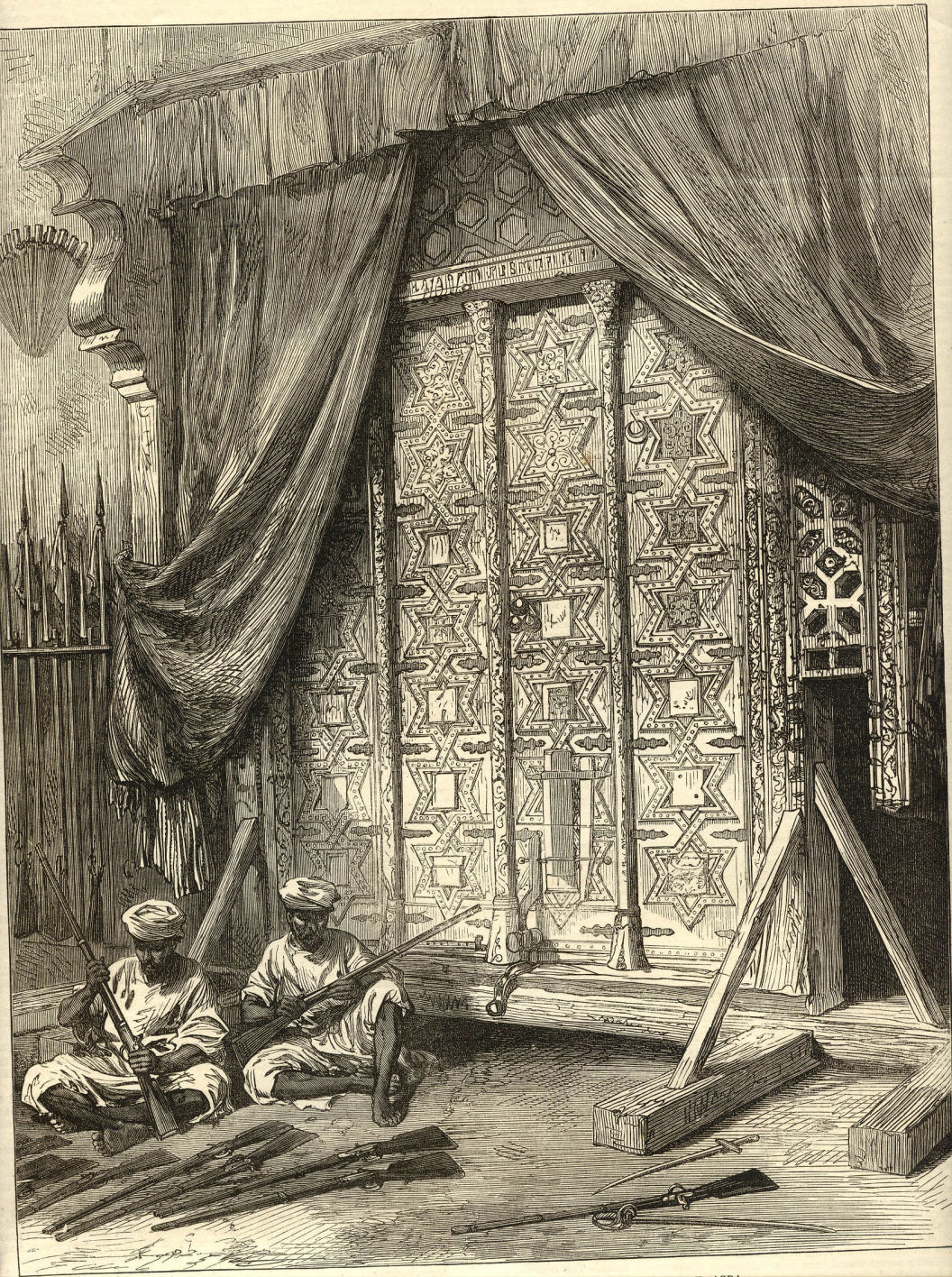
"The Supposed Gates of Somnauth, in the Arsenal of the Fort at Agra."
From the Illustrated London News, 1872.
Source
The ‘Grey Magic’ or propaganda machine went into overdrive. Charles Napier, who was in command of the EIC forces that had conquered Sindh, called the Talpurs the “greatest ruffians” and “imbeciles,” who possessed “zenanas filled with young girls torn from their friends” and treated the women in the harem “with revolting barbarity”. The Talpurs, he said, were even prone to enjoying occasional “human sacrifice”.
Napier’s victory was inflated to the level of being the most important event in Indian history by the British. It showcased British rule in India as being the return of the Indo-European races as avengers of domination by a foreign religious power – the Muslims.
This presented a problem. The Muslim domination needed evidence and this was conspicuous by its absence, until one particular text appeared. This is going to sound like a joke, but there appeared a book called ‘Chachnama’ which is very close to ‘Shahnameh’. It was originally written in Farsi (Persian / Iranian) around 1220, but was self-proclaimed to be the translation of an 8th century Arabic history of Muhammad bin Qasim’s conquest of Sindh covering a period of roughly 60 years. To the British, this was a book of conquest which fitted the bill perfectly and was therefore treated as such by their Indian scholars and continues to be so right up until the present day.
Chachnama is actually less a history of the 8th century and more a political theory for the 13th century. Its claim to be a translation of an earlier Arabic text is, in fact, meant to evoke the memory of a 500 year ‘golden age’ of Arabian presence in Sindh as an era of cohabitation, cooperation and accommodation. A Pax Indianus you could call it.
“It offers a history of both land and sea links between ports in Sindh and Gujarat – such as Daybul, Diu and Thane – and the Arabian ports of Aden, Muscat, Bahrain, Dammam and Siraf. It draws upon texts in Farsi, Pahlavi and Prakrit that explore thousands of years of connections between Oman and Yemen on the one hand and Sri Lanka and Zanzibar on the other. In Chachnama, these relationships span trade, marriages, settlement, languages and customs and they render it impossible to create and maintain a dichotomy between the Muslims [WS: i.e. Arabs] and the Hindus [WS: i.e. Indians] as being merely rivals.” Source
This situation mirrors that of the DNA evidence presented earlier regarding the cohabitation and cooperation between the ancient Britons, the Saxons and the Vikings. These were all also redefined as despotic hostile invaders who destroyed and dominated the British Isles with the Normans providing the retribution.
The book Chachnama had to be misappropriated, falsely represented and misread by British colonial historians because they couldn’t find any other evidence to suit their purpose. They were forced to change the “other” to the “outsider” so that a history of belonging and coexistence became a history of exclusion.
Even today you can still find supposed history focused websites that promote the Muslim invasion of India as the greatest holocaust ever known (yes, another one) along with their sensationalist graphic descriptions of horrific murder, barbarity and suffering on an unprecedented scale (yes, even more of the habitual indoctrination.)
Here we are again with the exact same lies that were used regarding the alleged conquests of Britain whereby first the Romans, then the Anglo-Saxons devastated England, with the Vikings over-running the north.
The EIC recruited Max Muller to translate, or a better term might be ‘loosely interpret’, the Vedas and to promote Sir William Jones’ idea, which had been further developed to include the invasion and capitulation of India by an entire Sanskrit speaking ‘Aryan’ race. It was claimed that they took over Europe and brought the Sanskrit language to India when they forcefully entered the Indus Valley in 1500 BC, settled there and spread towards the south. It was these Aryans who were the fathers of the Vedas.
OK, so first of all let me say that this is a highly misunderstood and even emotive subject. This ‘theory’ was born out of the necessity to deceive an entire country. It contains a basic incongruity in that the Vedic philosophy of Sanātana Dharma doesn’t fit with the concept of a warlike race who had taken over the whole of Europe and then forcefully entered the Indus Valley. Therefore, to claim that this martial race were the fathers of the Vedas just doesn’t fit. That this theory was loosely based upon some basic elements of truth is highly probable, but as a whole, it’s a massive distortion and deception.

The Forenoon of Life - Aryans entering India, 3500 B.C., illustration
from 'Hutchinsons History of the Nations', c.1910 (litho.)
These are the authors of the Vedas... Ogle, R.B. (fl.1910), Public domain
This theory was used to divide Indian society. North Indian "Aryans" were pit against the South Indian "Dravidians," along with high-caste against low-caste, mainstream Hindus against tribals, Vedic orthodoxy against the indigenous orthodox sects, etc., etc. They encouraged the idea that the original native Indians were undeveloped primitives who were pushed out of the area that was taken over by the invading Aryans, who then forced their language, culture, and religion onto the people who remained.
Again, this is precisely what happened in Britain.
As early as 1840 the British missionaries were already using this theory as a means to persuade people of South India to reject the Vedic tradition, since it had been forced upon them by invaders and to therefore accept Christianity instead. By using the typical "divide and rule" policy that the British were known for, they helped create a schism which allowed them to control and manipulate the Indians under the guise of giving them back the respect they had always deserved. Of course, if they became Christian they would deserve even more respect, as portrayed by the missionaries.
Later the same tactic was used to neutralize Hindu criticism of the forced Islamic occupation of India, since "Hindus themselves entered India in the same way as Muslims did." Even today, the theory has been used as the basis for the growth of secularist and even Marxist forces.
As a member of the Supreme Council of India in 1834, Lord Macaulay inaugurated a national system of education, Western in outlook and, as president of a commission on Indian jurisprudence he drafted a penal code that later became the basis of Indian criminal law. He wanted to do away with the spiritual heritage of India completely…
“We must at present do our best to form a class who may be interpreters between us and the millions whom we govern; a class of persons, Indian in blood and colour, but English in taste, in opinions, in morals, and in intellect…
“...I have no knowledge of either Sanskrit or Arabic. But I have done what I could to form a correct estimate of their value…. I have never found one among them (Sanskrit or Arabic scholars) who could deny that a single shelf of a good European library was worth the whole native literature of India and Arabia…
“Our English schools are flourishing wonderfully. The effect of this education on the Hindus is prodigious. .…It is my belief that if our plans of education are followed up, there will not be a single idolator among the respectable classes in Bengal thirty years hence” The letters of Lord Macaulay
Max Muller, Rothschild’s tame ‘translator’, was wholly unable to rise to the objective standards of the Sanskrit language. In his book ‘Vedic Hymns’, he himself declared that “My translation of the Vedas is conjectural”. Mr. B.D Ukhul in his article, “The Clouds Over understanding of the Vedas” exposes the mistranslations in detail where the Vedic science was reduced to some absurd story whereby words were taken out of context which inevitably completely distorted the meaning, but this was all far more likely to have been deliberate rather than due to ineptitude.
The technique used in the fabrication of Indian history has been described as follows, but please bear in mind that this also applies to ALL history:
First they fabricated and incorporated the desired date of a historical personality into the original handwritten manuscript. Then they employed efficient scholars to rewrite the full page, or the full chapter, that included the fabrication by exactly imitating the writing style of the original. When the imitation was ready to the desired standard, they destroyed the original sheets and replaced them with the imitated ones. This provided an original-looking manuscript for circulation which was in fact fabricated.
The EIC possessed all of the available manuscripts of the Puranas in their vast libraries and they had all the necessary facilities to reconstruct and fabricate the manuscripts including hundreds of ‘scholars’. It is assumed that the original documents were destroyed. The forgeries were very successful and fooled many Sanskrit scholars. In the late 19th century, there were three major publishing companies in India all under British control.
They also produced and promoted some religious books (the Smritis and Grihya Sutras etc.) that had insertions previously added by the ancient Chatriya Kings who were meat-eaters. These were manipulated to show the interpolations as being original and thus that Hindu Sages killed and ate animals. They destroyed the true originals showing the inserted notes. They were effectively saying, “See, your own books are saying that,” and by this means many western writers took it as license to openly abuse the Hindu religion.
In order to circumvent the embarrassing situation of a 15th century BC Magadh dynasty, which didn’t fit with their 1500 BC Aryan invasion, a great deal of fabrication and manipulation was necessary. They took advantage of similar sounding names that were actually 1100 years apart, when it came to dating coins and edicts, they fabricated and created records showing false historic dates for all the important historical figures like Panini, Buddha and Shankaracharya etc.
Muller himself and the poet Goethe were involved in the production of the works of Kalidasa, described as the ‘Indian Shakespeare’ by the British and placed in 600 AD. Kalidasa is portrayed as the follower of the Vedic Sanatana Dharma and a dedicated believer in the four social castes. Kalidasa was totally unknown in India before Rothschild’s employee Horace Hayman Wilson, published it in six volumes over the years 1850-88. Historically, the Emperor Vikramaditya of 7000 BC was kicked forward in time by 7600 years to create Kalidasa, the personal poet of King Vikramaditya, because it didn’t fit with the 1500 BC Aryan invasion.
According to the invented Kalidasa, India was named Bharata due to Bharata the son of Dushyanta and Shakuntala, which is not supported by the Puranas. Kalidasa’s story of Shakuntala has been added as an appendage in the Mahabharata (Adiparva chapter,) but it is not original. The English translations appear as being far too perfect to have been translated from Sanskrit, with rhymes, and the typical metering of Goethe.

Kalidasa… (Goethe)
Source
In 1866, a professor of the Calcutta Sanskrit College, Pandit Taranath, was given a lot of money on a contract basis to compile the largest Sanskrit dictionary and to wrongly interpret certain Vedic words to suit the derogatory theory which the British had fabricated against the Vedic religion.
Even in 1922, F.E. Pargiter, a retired Indian Civil Servant from Calcutta, was appointed to write the incorrect history of India. All the history writers of that period (like Smith, Keith etc.) were also assigned to write similarly incorrect histories of India, squeezing it into the time frame of their fictitious story of Aryans coming to India.
The ancient Vedic civilisation of India was totally destroyed in just 200 years. The lies and deceptions that were planted during that period still persist today. The legacy of this hideous deception has been to convince Indians, especially the young, that their culture and history is all worthless and at best mythological or at worst a complete lie, that they are a useless, defeated and conquered people.

Just as in Britain, the majority of modern Indian society has embraced the false narrative of their history
and the lie of their true identity. Source
The Harappan or Indus Valley Civilisation, was very old, very large and highly developed. The Aryan invasion myth is still being perpetuated by historians as the reason for its disappearance. This myth also dictates the date of its disappearance by Aryan conquest to 1500 BC.The Indian government strictly controls archaeological investigations in the area and any conclusions that do not support the Aryan invasion myth are censored.
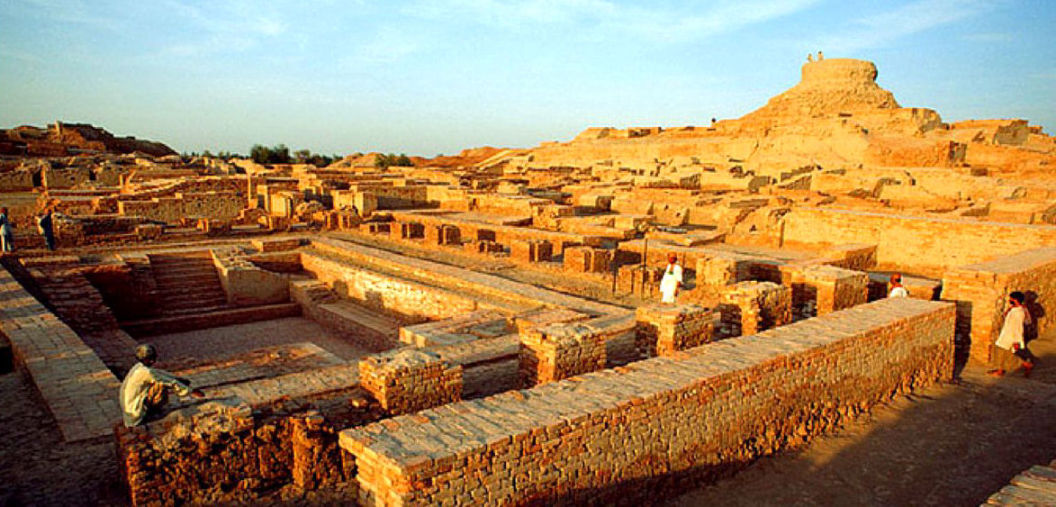
Mohenjo Daro
Source
This situation has led to ‘Frawleys Paradox’: On the one hand we have the vast Vedic Literature without any archaeological finds associated with them and on the other hand, we have 2,500 archaeological sites from the Indus-Sarasvata [Harrapan] civilization without any literature associated with them.
All alternative theories as to the disappearance of this once great civilisation are purely speculative…
Here’s another one – the Indus Valley Civilisation was devastated in the 934 AD cataclysm along with the rest of the world. It was the ancient Vedic culture and it did manage to survive the cataclysm until the British East India Chapter of the Achaemenid Corporation destroyed it. That doesn’t mean that the Indus Valley civilisation didn’t come from the north originally, it just means that in 1500 BC they were already in the Indus Valley and had been for a very long time, but they were not conquered by imaginary Aryans or Aliens.
Incidentally, Sir Edward Jones died in 1794 but in 8 years he could not produce the full thesis of his created theory of some unknown protolanguage. In 1816 Franz Bopp produced his first work in 1816, which was further developed in 1852, to substantiate the ideology of the Proto-Indo-European language which Jones had created… as part of an agenda to discredit Indian culture. The original location of this proto-indo-european language and presumably its speakers, was in the area of the Ukraine. This is the same area claimed as the origin of the white Caucasian race and also of the ancient Khazar Empire.
In the 20th century the Muslim vs. Indian trick was played once again involving the same Aligarh Movement who had previously brought down the Muslim Mughal Empire from within. This time they wanted their own Islamic country within what was by then British India. There were the usual fake dramas between the Achaemenid British Colonial government, the Hindus and the Muslims – many of whom were against the division of India. However, as usual, the Achaemenid Corporation was in control of all sides and thus India was divided into two countries – India and Pakistan. The suffering, violence and damage this massive upheaval caused was clearly part of the desired result.
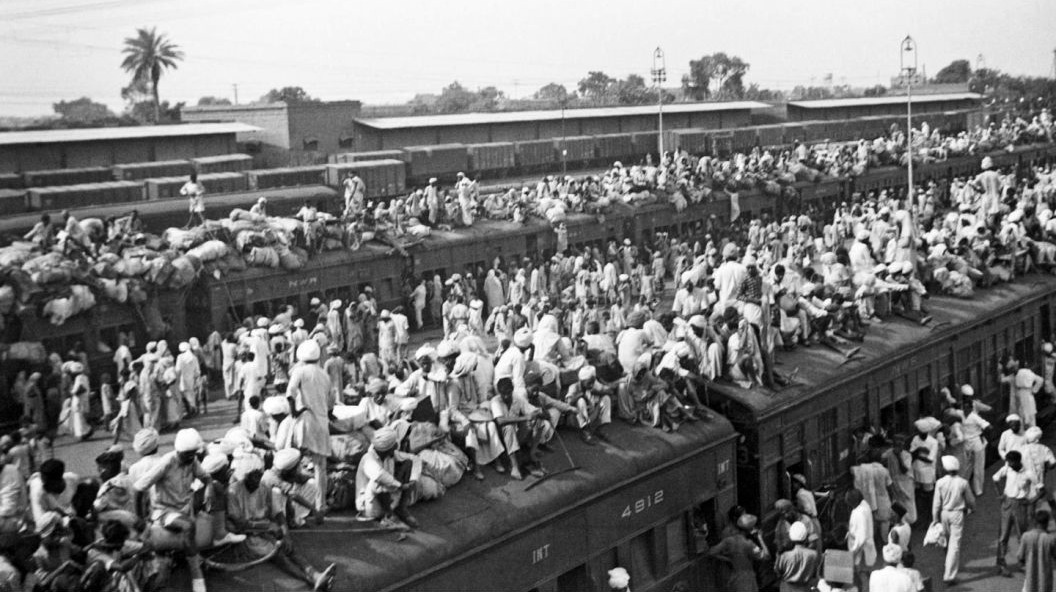
Muslims flee to Pakistan and Hindus flee to India in one of the largest transfers of population in history.
Source
In a relatively short period India had gone from a harmonious society that embraced other peoples and their religions, with whom they co-existed peacefully, to a land divided in two by racial and religious intolerance. It had its own ancient traditions, way of life and a belief system that was almost totally destroyed and, if not completely replaced by Christianity, then at least redefined beyond recognition as ‘Hinduism’. Although divided, and even subdivided to create Bangladesh, the entirety is still under the control of the Achaemenid Corporation.
OK, let’s have a bit of a recap here. We have what, on the face of it, appears to be a revival of the Roman Empire invading an ancient foreign civilisation. If we look closer we discover that ‘first contact’ was made by Jewsuit missionaries, (or undercover religious spies) and British/Dutch/French/Portuguese Jewish merchants. This first approach was focused upon the victim’s economy and religious practices for the purpose of gathering intelligence and prospective financial opportunities. It was performed and organised by the East India companies – who were all part of the Achaemenid Corporate Empire – even the Jesuits, a crypto-Jewish but supposedly Catholic Christian organisation.
The British monarchy of the time effectively turned a private commercial company into the equivalent of an expeditionary Roman Legion or a Crusade, with the power to invade, subjugate and rule any conquered territory anywhere in the world in the name of the Empire. This Chapter of the Achaemenid Corporation, in the guise of the British East India Company, was much more than an invading army, it was a self-contained replacement regime, culture, economy and religion. It was outwardly comprised of Jewish, Christian Catholic and Christian Protestant elements all with different nationalities and all working towards a common goal – the destruction of an ancient civilisation and its replacement by a nominally capitalist, but basically feudal system of governance, along with the Christian religious faith and western British cultural ideals. This was achieved through deception, lies, forgery, manipulation, brute force, tyranny and even the collaboration of the Islamic Chapter of the same Achaemenid Corporation. This was so successful because it was an age old, tried and trusted technique, fine-tuned over centuries.
This wasn’t just happening in India. Within the first two decades of the 17th century, the Dutch East India Company or Vereenigde Oostindische Compagnie, (VOC) was the wealthiest commercial operation in the world with 50,000 employees worldwide and a private fleet of 200 ships. The British East India company also had interests in America and China. Between them and also the French and Portuguese versions of the same company, they dominated world trade.
So I ask you – who had the greatest Empire? The Romans, the British, the Dutch, the French, the Portuguese, the Spanish or the East India Companies? None of them, because they were and still are, all part of the same old Achaemenid Commercial Empire for whom this is all just ‘business as usual’.
Well, in my heavily biased opinion I think the previous speculation passed the Acid Test with flying colours, but then I would do wouldn’t I. Obviously, there is still much more to the entire scenario than has been proposed here. Commercial aspirations and greed are not a satisfactory explanation for everything that has developed since the 10th century cataclysm and onwards up until now. There was and still is, something behind driving those ambitions towards its own purpose. Materialism and human greed have been the Trojan Horse, the carrier through which it spread. This may seem like a strange thing to say when most of this article has been about religion. However, I’m sure few will deny that after supposedly millennia of the Abrahamic religions the spirituality of humankind has not improved one bit.
We have deliberately avoided discussion of this aspect on the basis that the material we have presented is difficult enough to digest without introducing spiritual or supernatural elements into the mix. For many, accepting that there were no ancient Romans will be as enormous a step as believing in the Flat Earth. To then follow that up with a denial of Abrahamic creationism and heredity will be like claiming that the Moon is made of green cheese. Many simply will not accept any of it regardless of the evidence. In this respect the issue is that highly loaded word “Faith.”
“mid-13c., faith, feith, fei, fai "faithfulness to a trust or promise; loyalty to a person; honesty, truthfulness," from Anglo-French and Old French feid, foi "faith, belief, trust, confidence; pledge" (11c.), from Latin fides "trust, faith, confidence, reliance, credence, belief," from root of fidere "to trust…
“...Also in Middle English "a sworn oath," hence its frequent use in Middle English oaths and asseverations (par ma fay, mid-13c.; bi my fay, c. 1300),,,
“...From early 14c. as "assent of the mind to the truth of a statement for which there is incomplete evidence," especially "belief in religious matters" (matched with hope and charity). Since mid-14c. in reference to the Christian church or religion; from late 14c. in reference to any religious persuasion.” Source
This is the ultimate deception. Originally that word embodied loyalty, honesty, trust and truthfulness – a sworn oath. So in the 14th century it was taken and twisted to represent your loyalty to, and your trust and belief in a lie. Through the word “Faith” you are consenting to the truth of “religious matters… for which there is incomplete evidence" and you give your sworn oath to be loyal and to trust it implicitly.
Isn’t it curious how the Middle English word “fay” meaning ‘faith’ is practically the same as the word “Fae?”
On that final note we bid you farewell until we meet again next time in the next part of this series. Stay safe.
The Dark Earth Chronicles Part One
The Dark Earth Chronicles Part Two
The Dark Earth Chronicles Part 2.5
Editorial Update March 2024
The ‘History Revolution’ of the early 20th century
The Grail, The Cataclysm, The Wasteland and Our Lost Ancient Sovereignty
Updates and Re-Evaluation
Taliesin, The Divine Poisoner
Will Scarlet & Felix Noille
.
IF YOU ARE SEEING A LINK TO MOBIRISE, OR SOME NONSENSE ABOUT A FREE AI WEBSITE BUILDER, THEN IT IS A FRAUDULENT INSERTION BY THE PROVIDERS OF THE SUPPOSEDLY 'FREE' WEBSITE SOFTWARE USED TO CREATE THIS SITE. THEY ARE USING MY WEBHOSTING PLATFORM FOR THEIR OWN ADVERTISING PURPOSES WITHOUT MY CONSENT. TO REMOVE THESE LINKS I WOULD HAVE TO PAY A YEARLY FEE TO MOBIRISE ON TOP OF MY NORMAL WEBHOSTING EXPENSES - WHICH IS TANTAMOUNT TO BLACKMAIL. I CALCULATE THAT THEY CURRENTLY OWE ME THREE MILLION DOLLARS IN ADVERTISING REVENUE AND WEBSITE RENTAL.